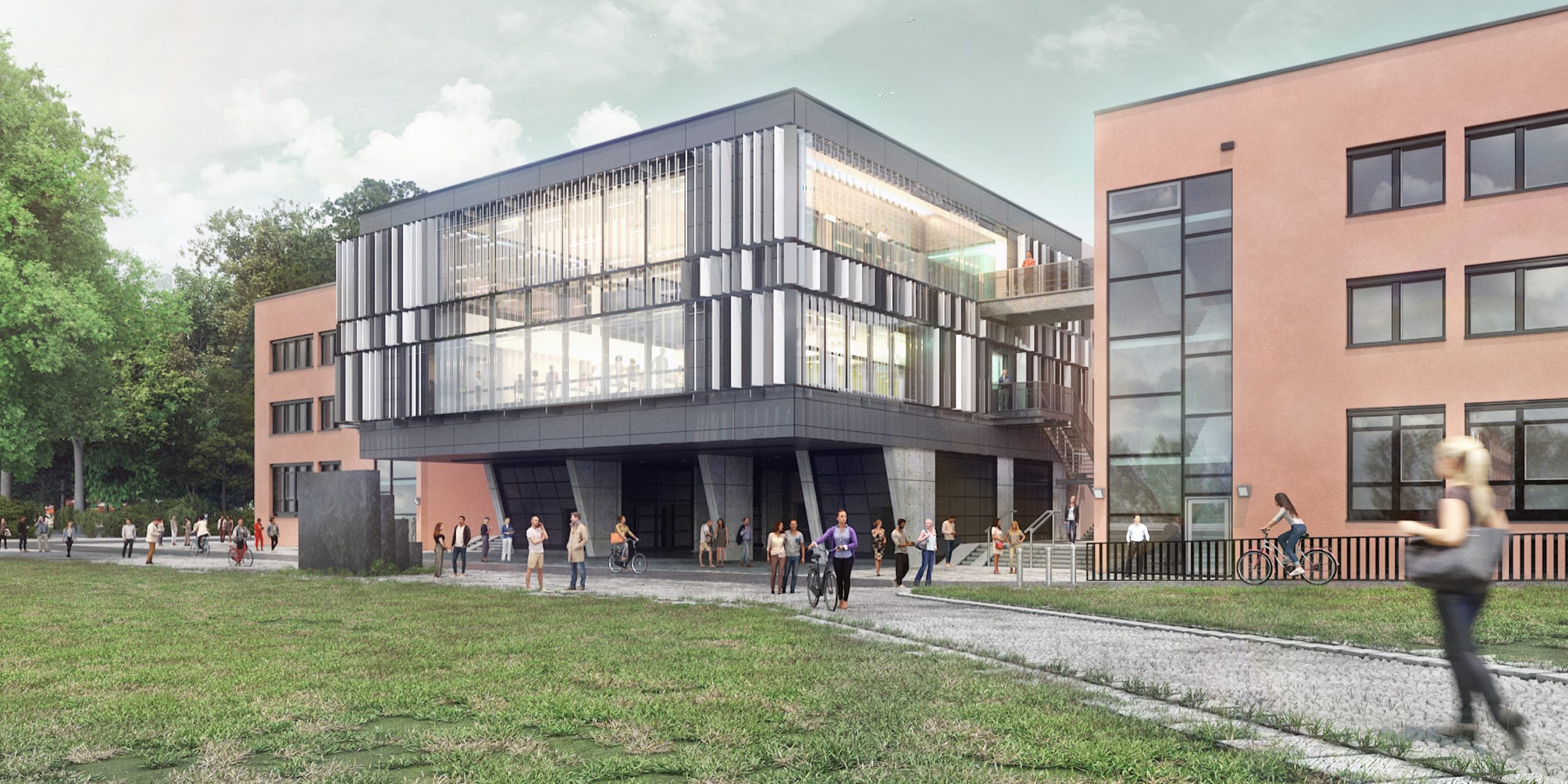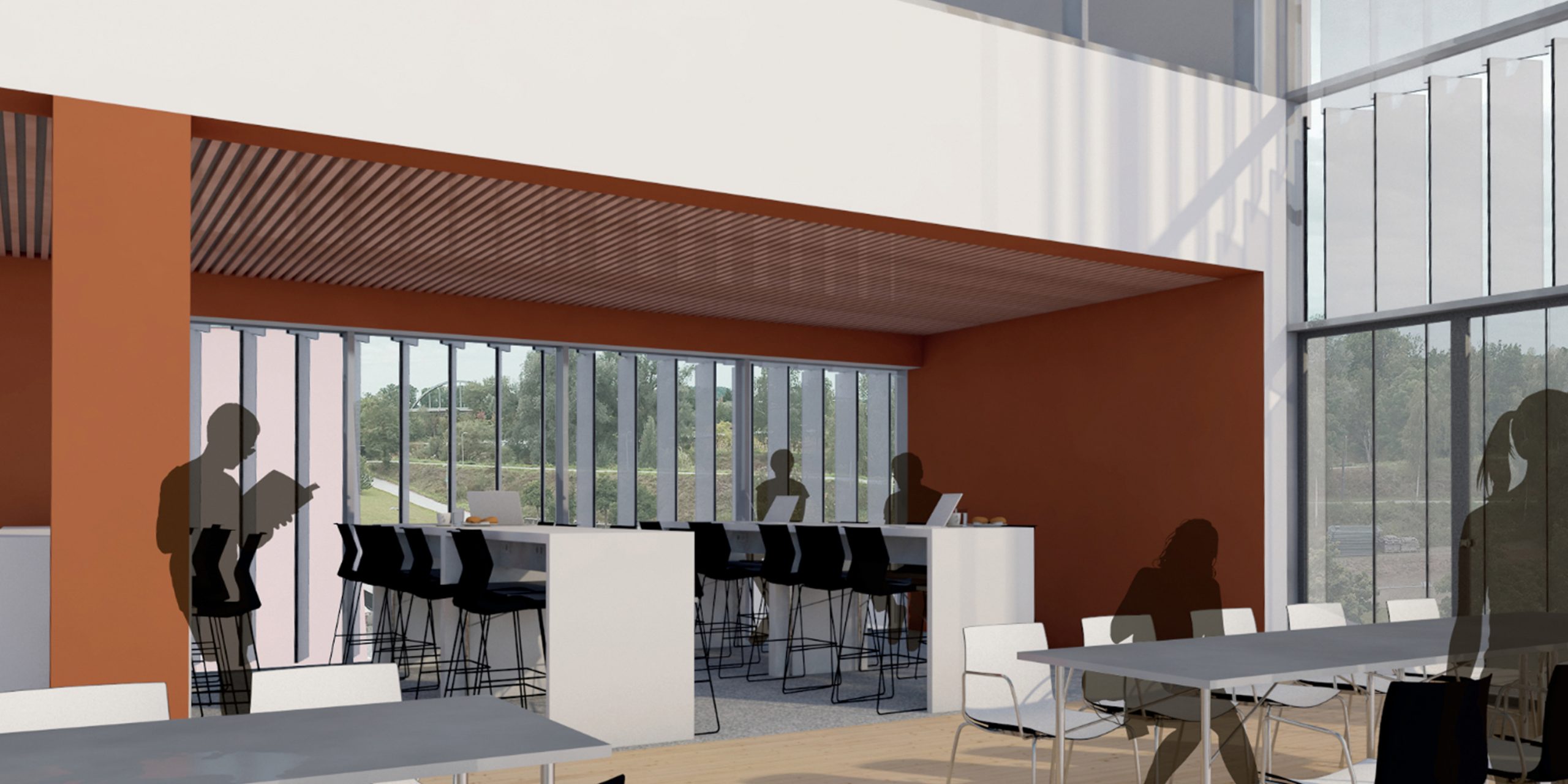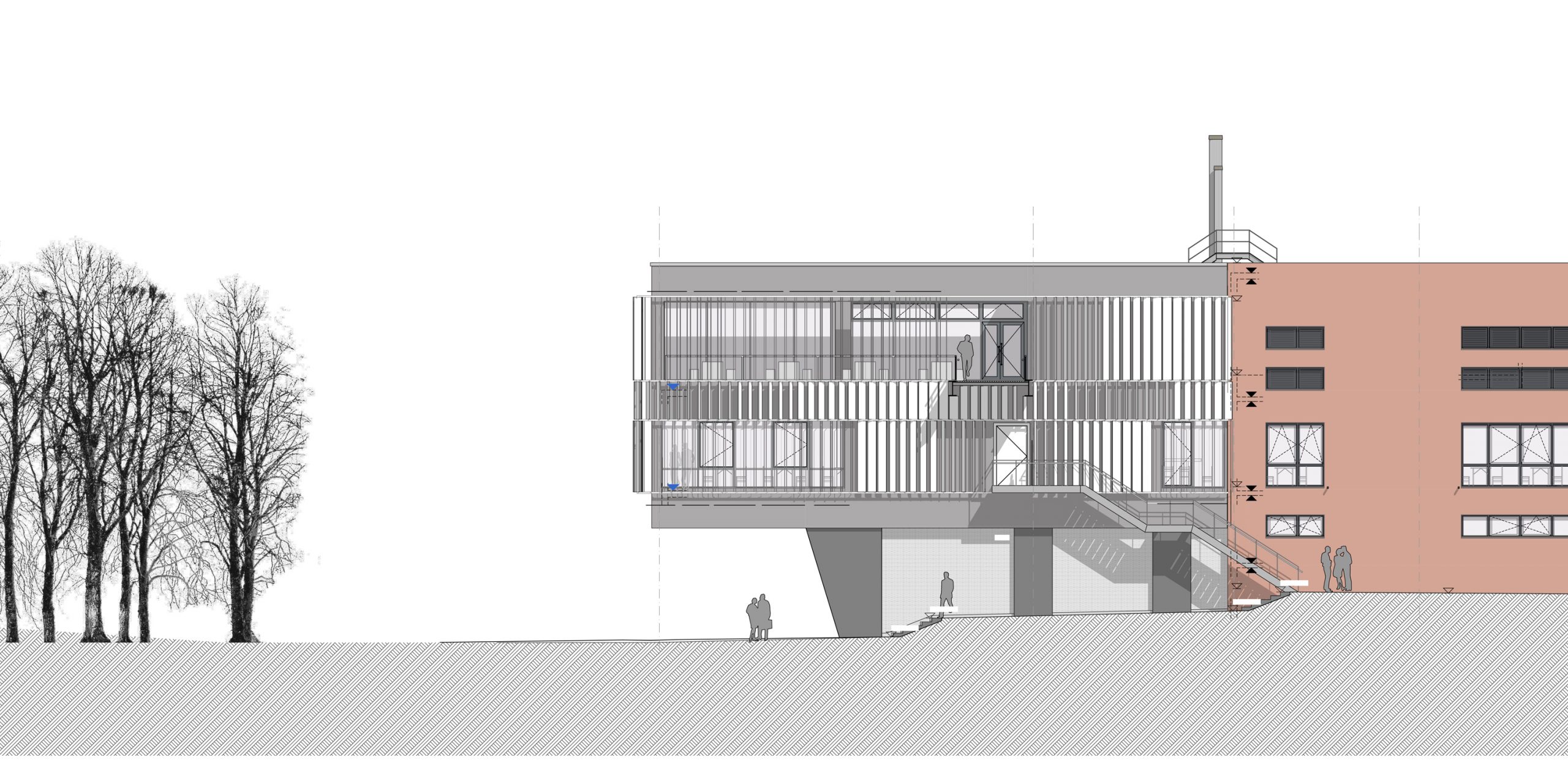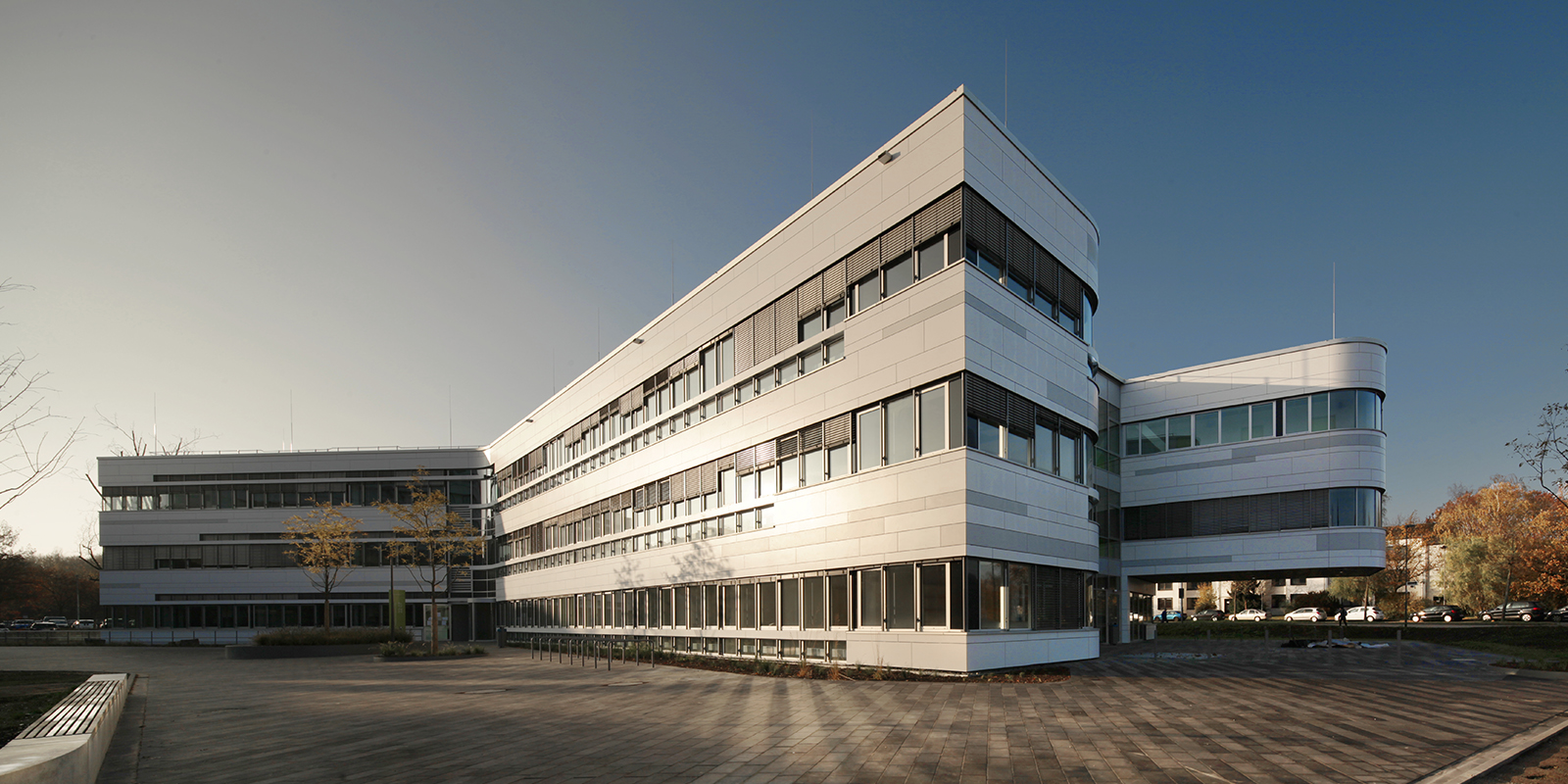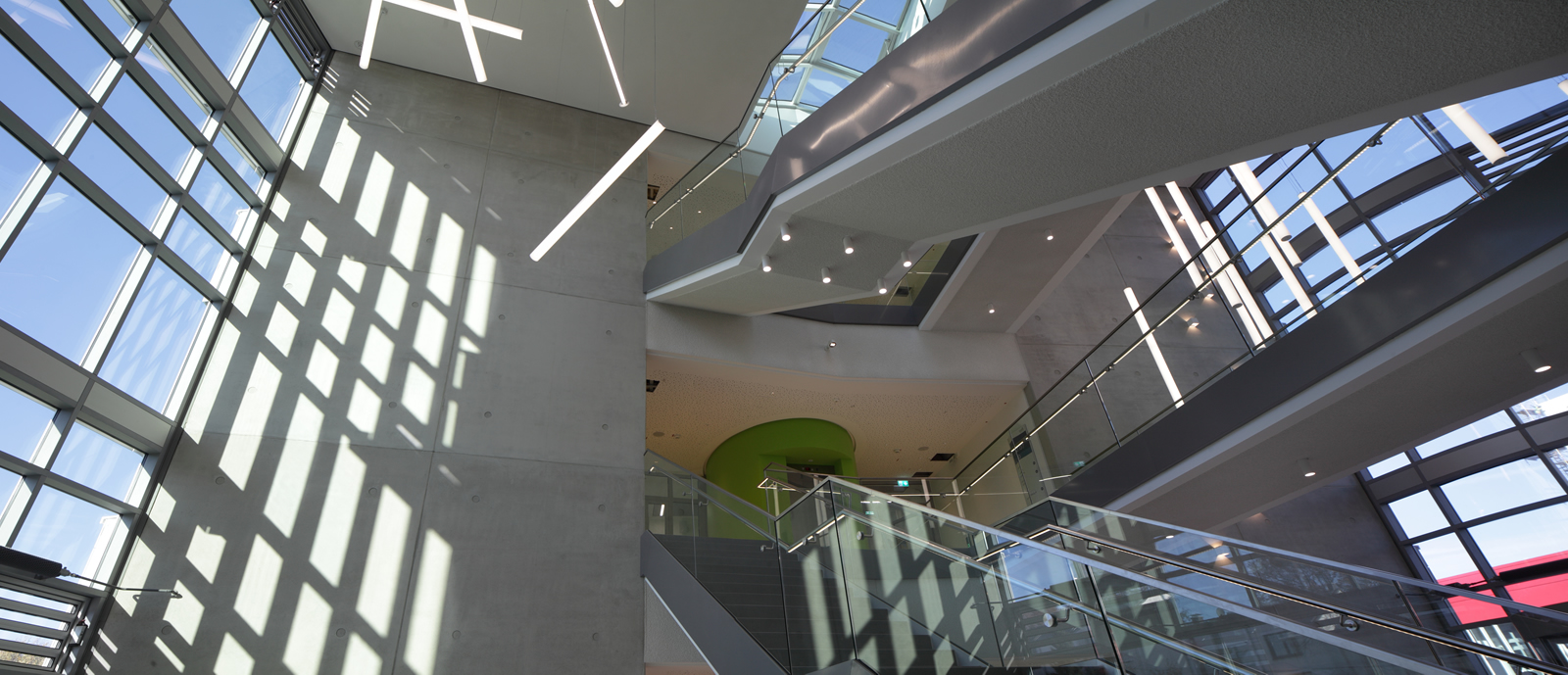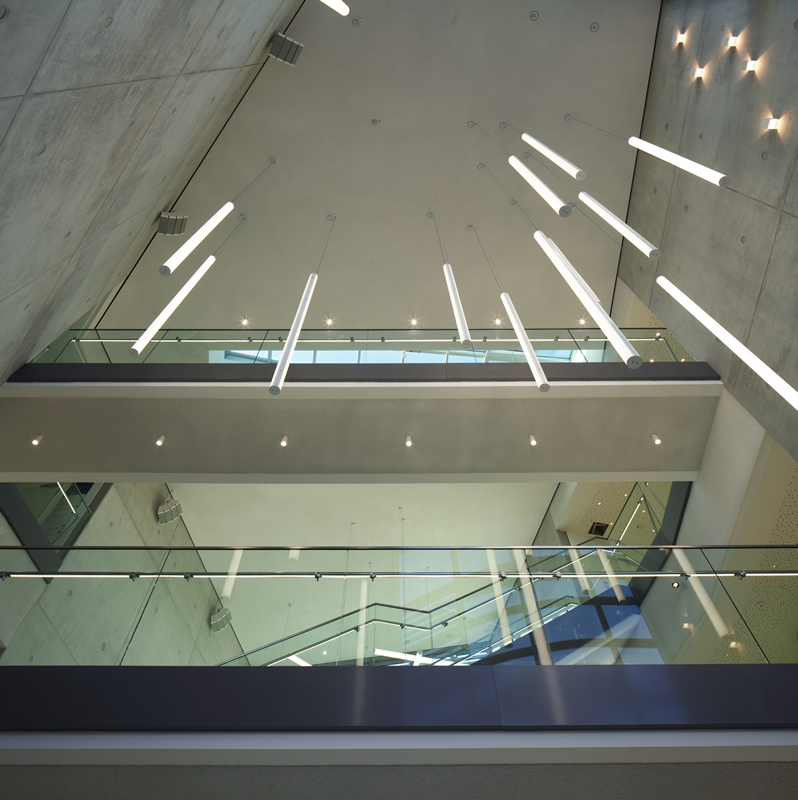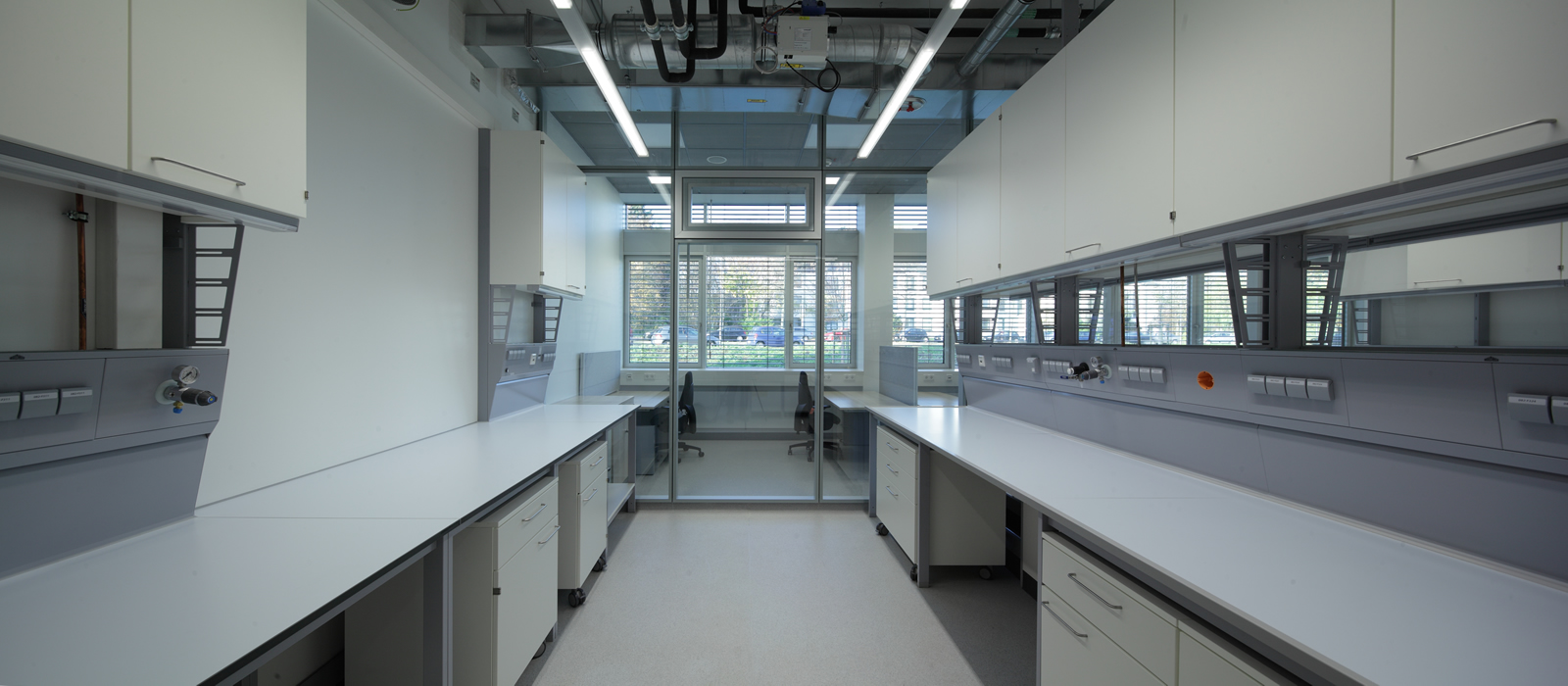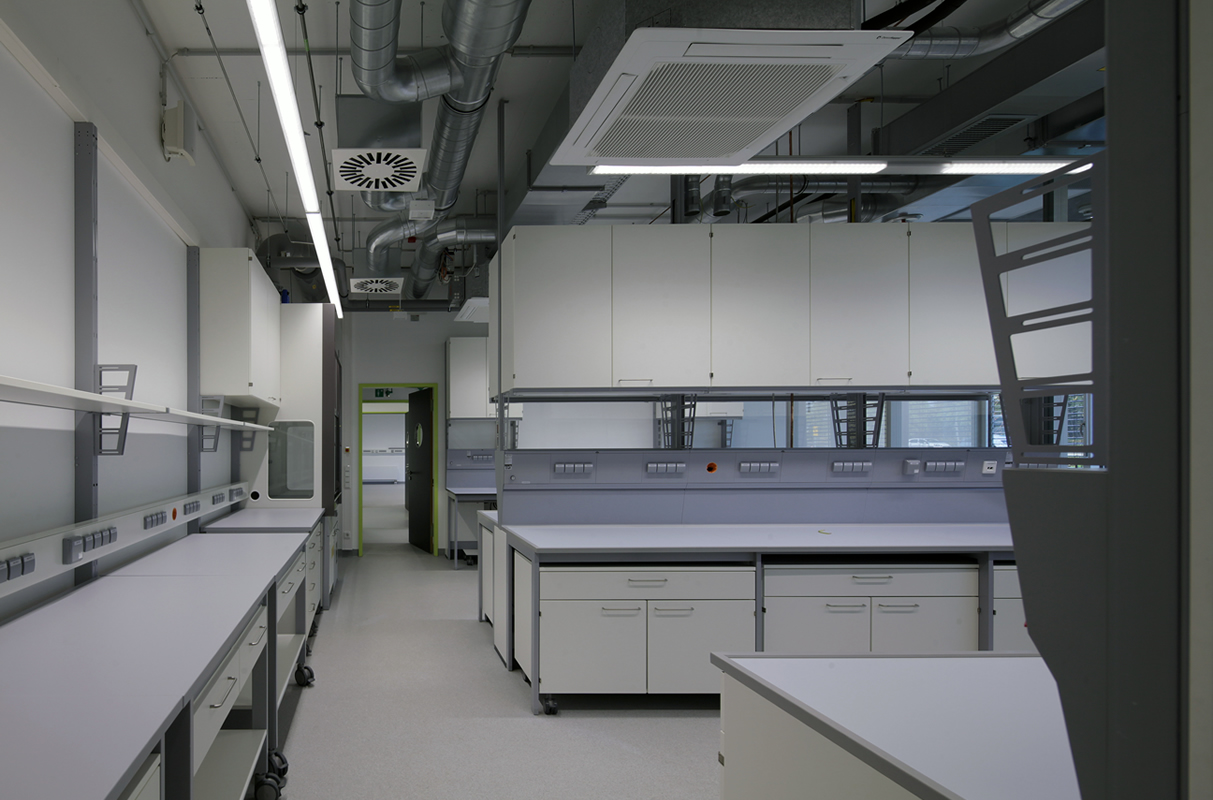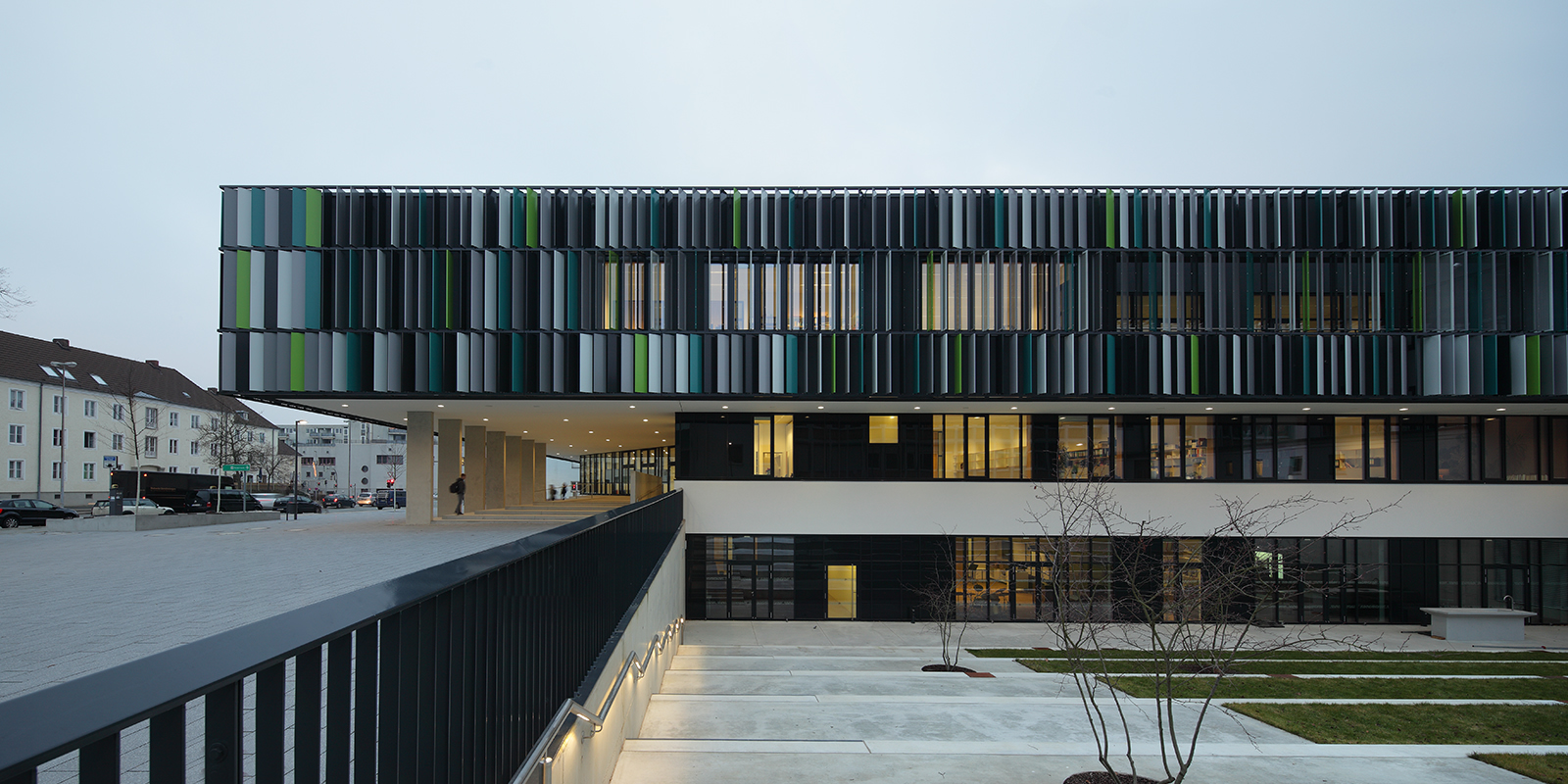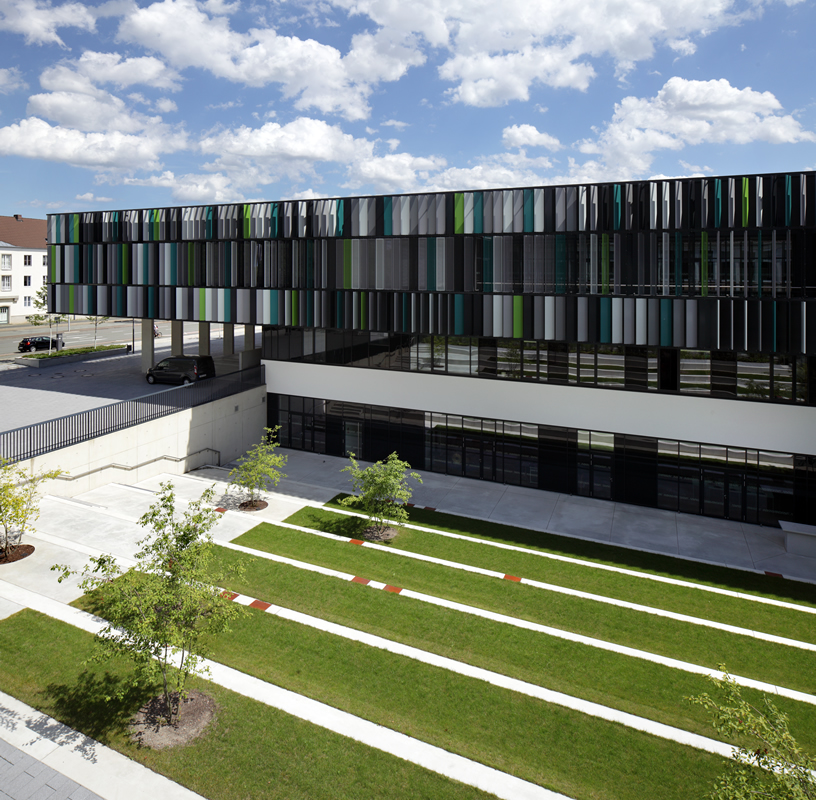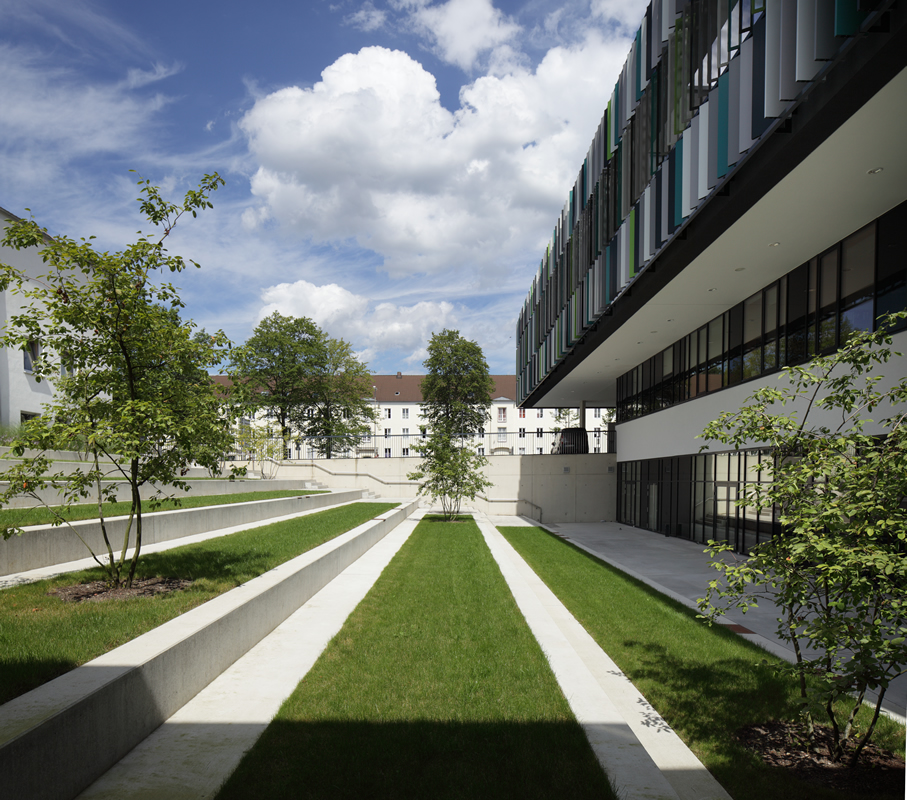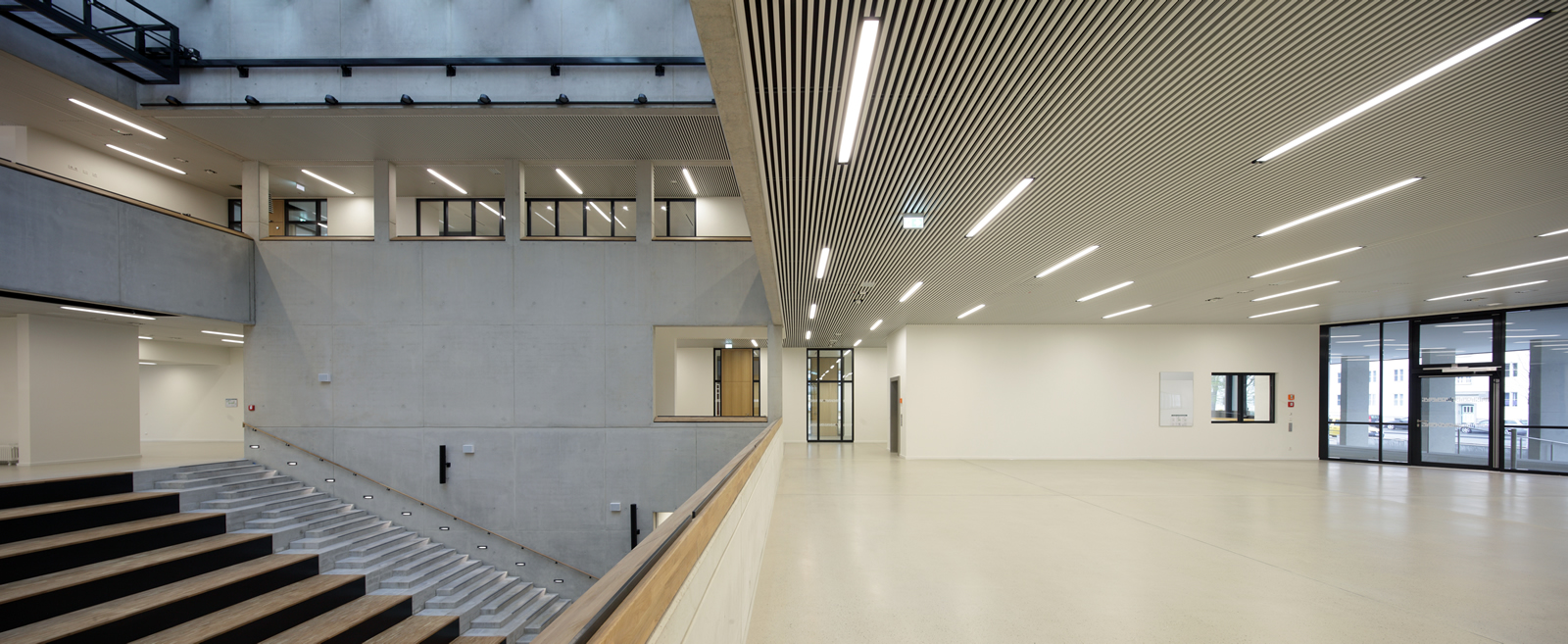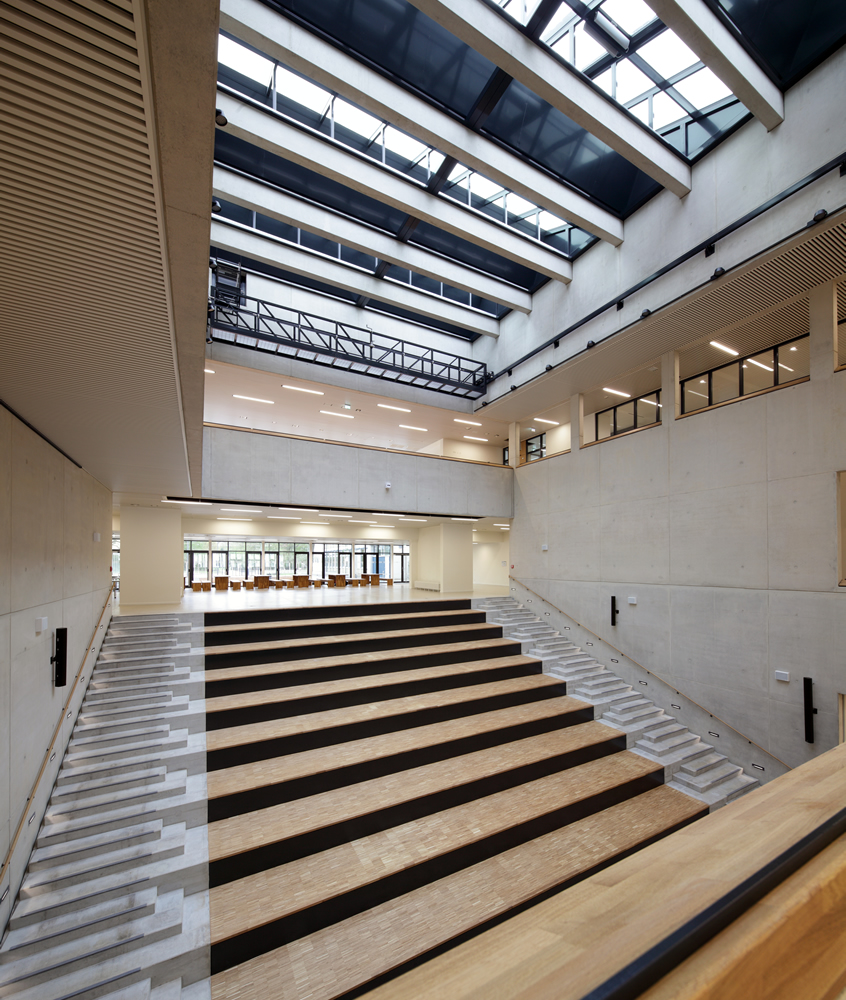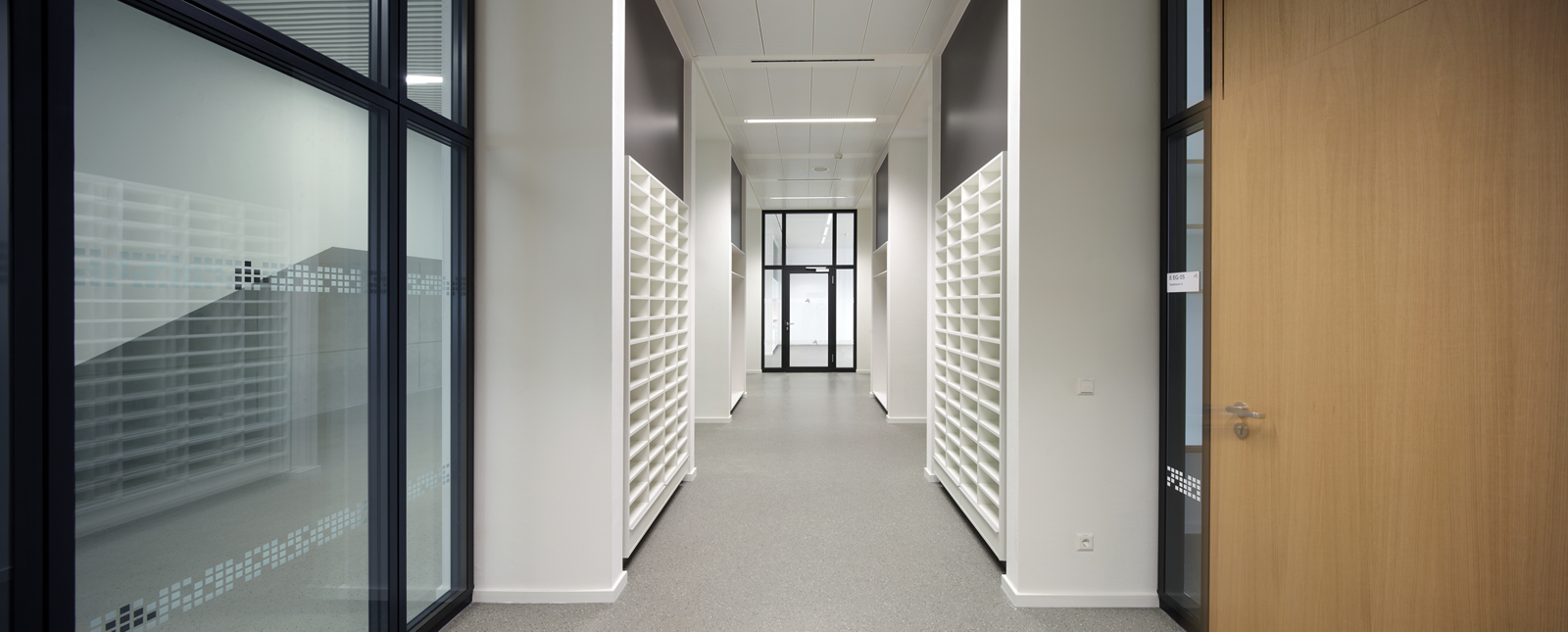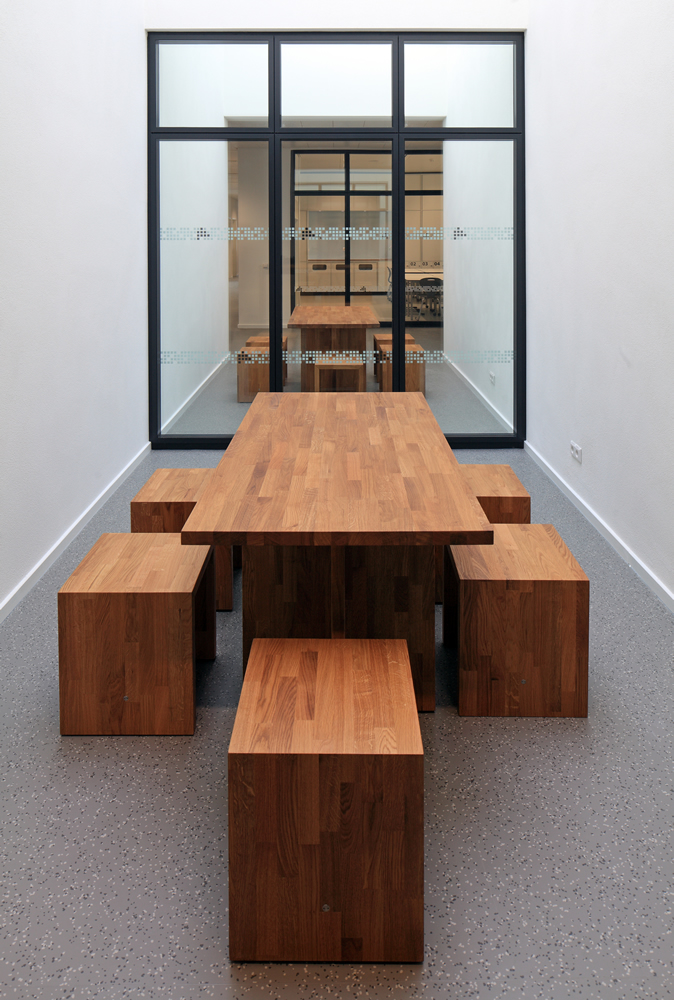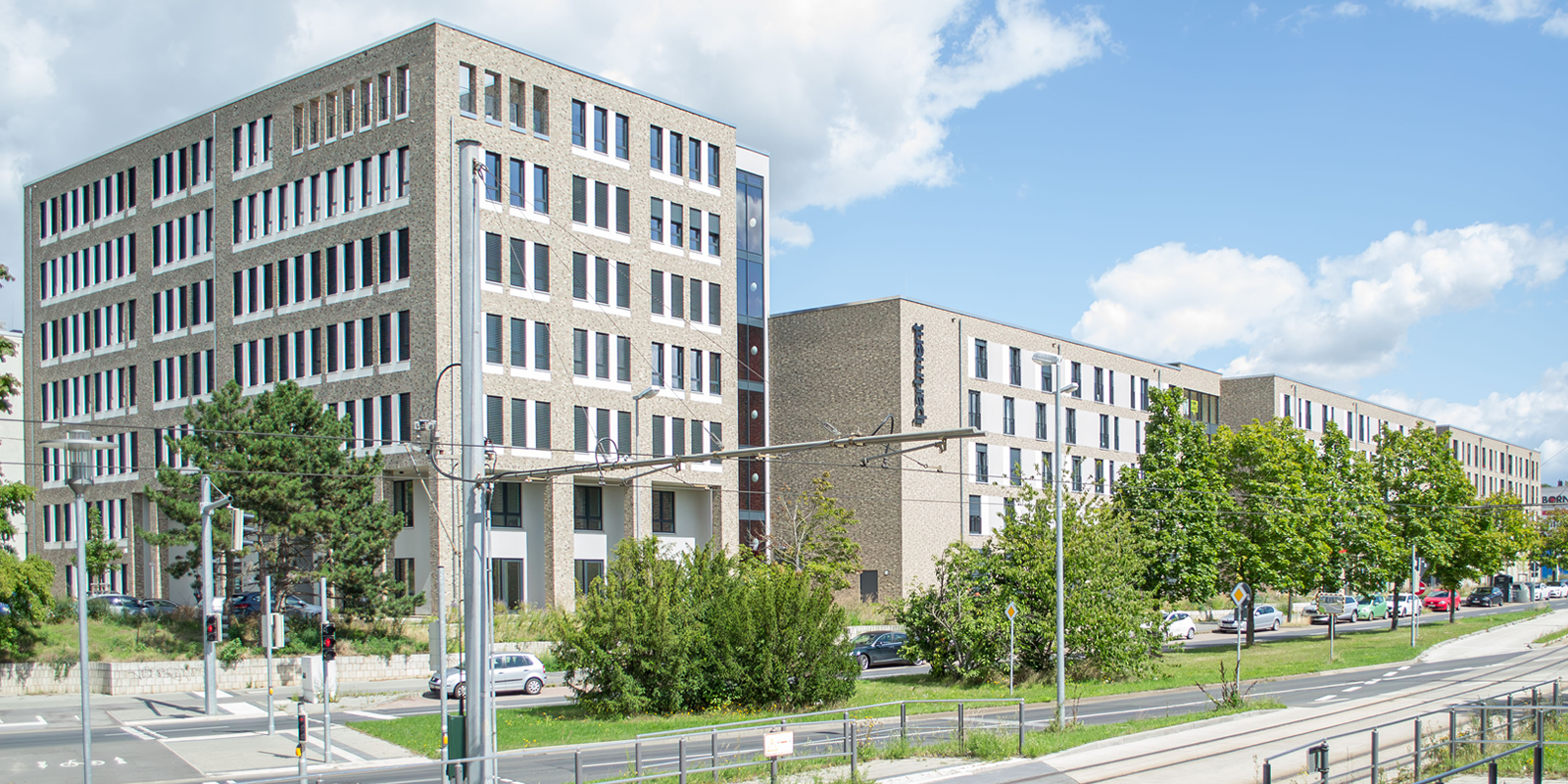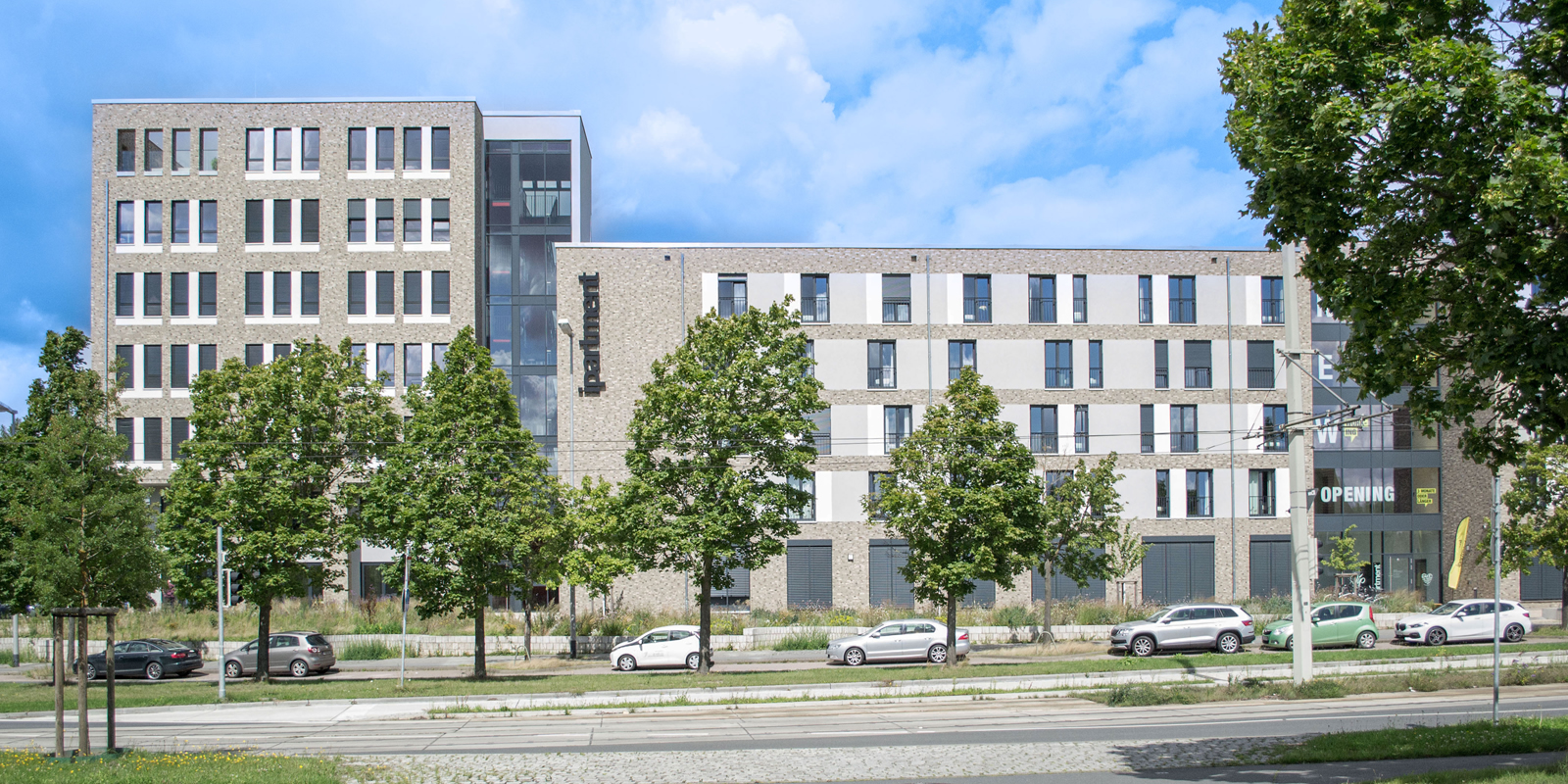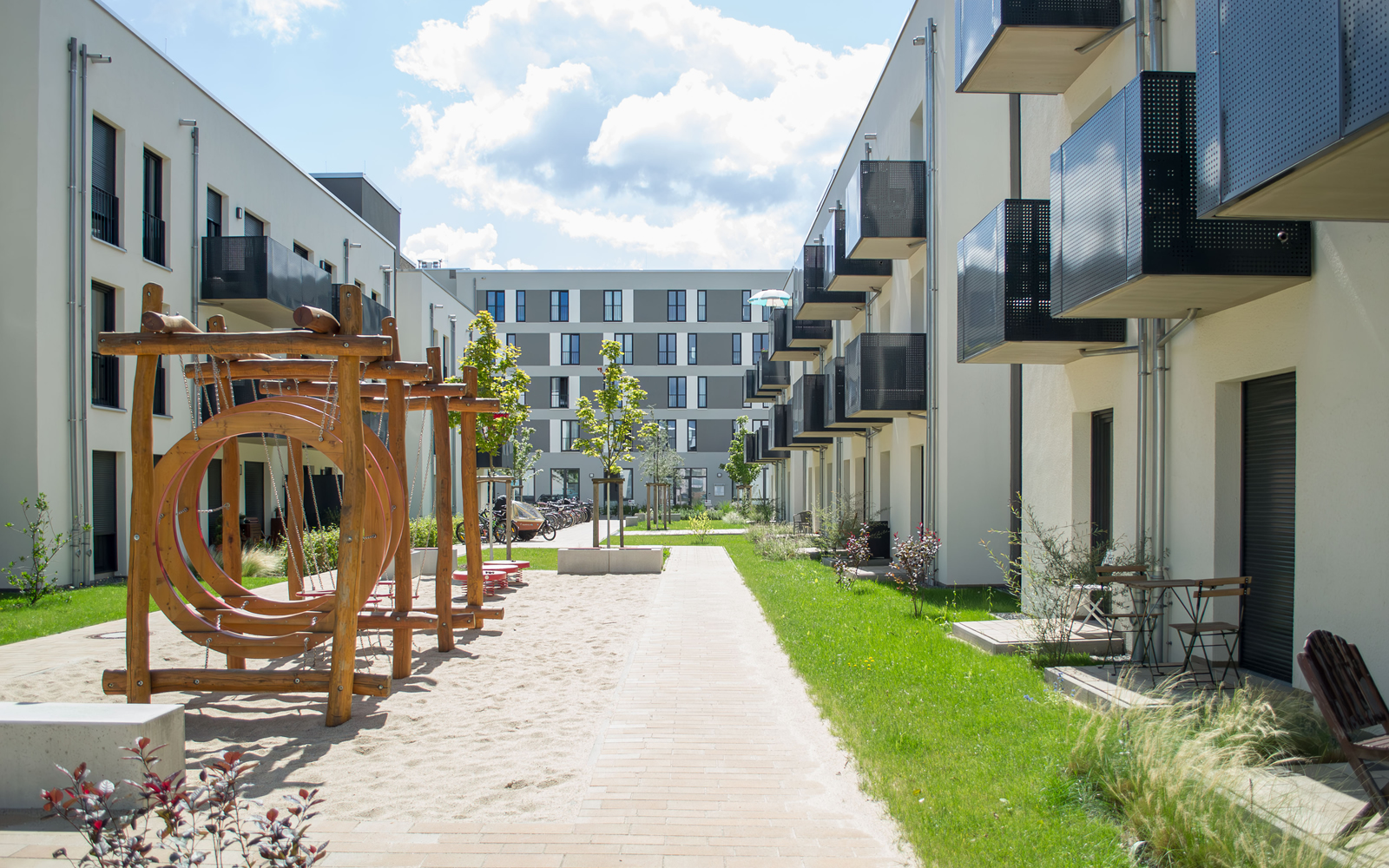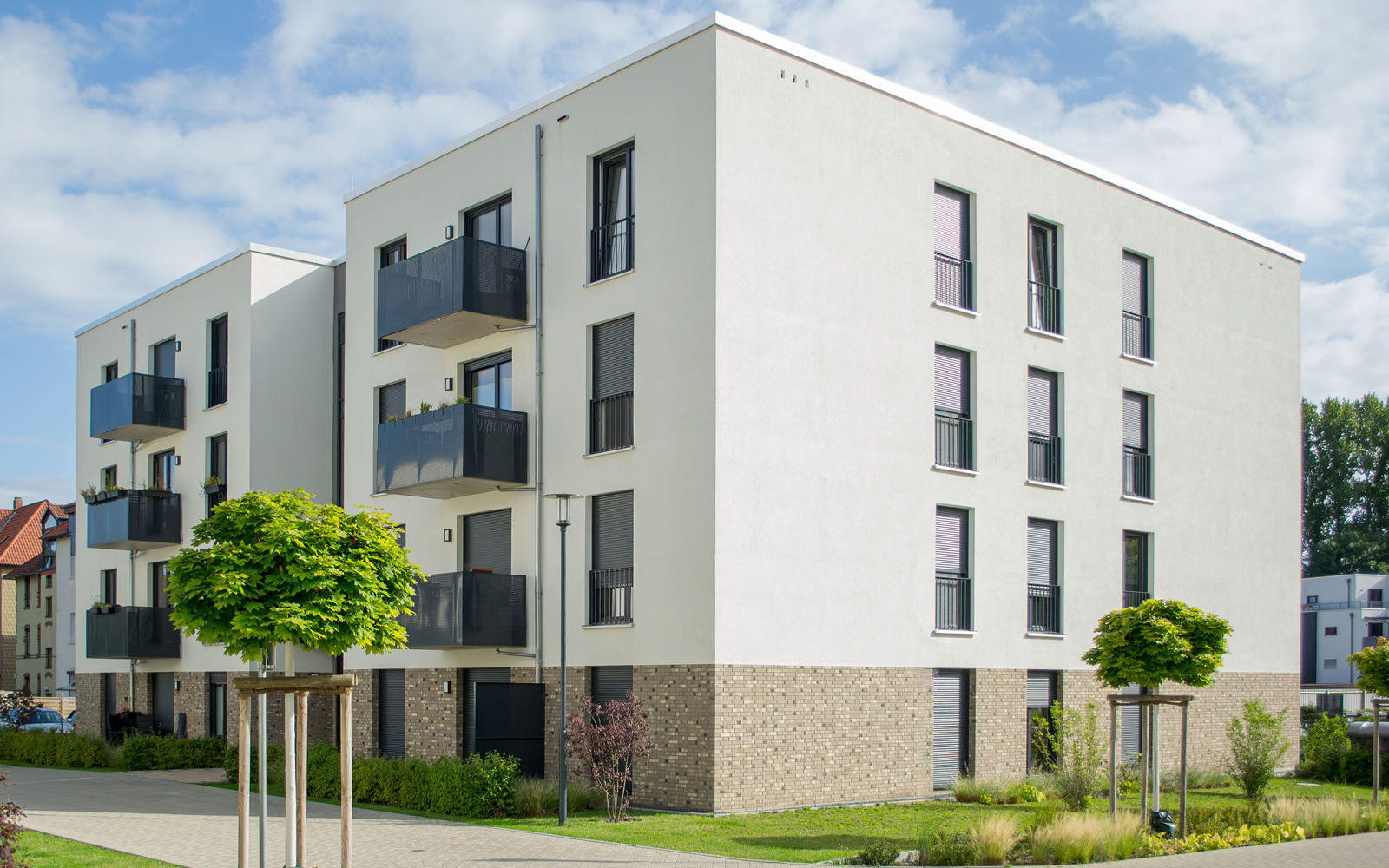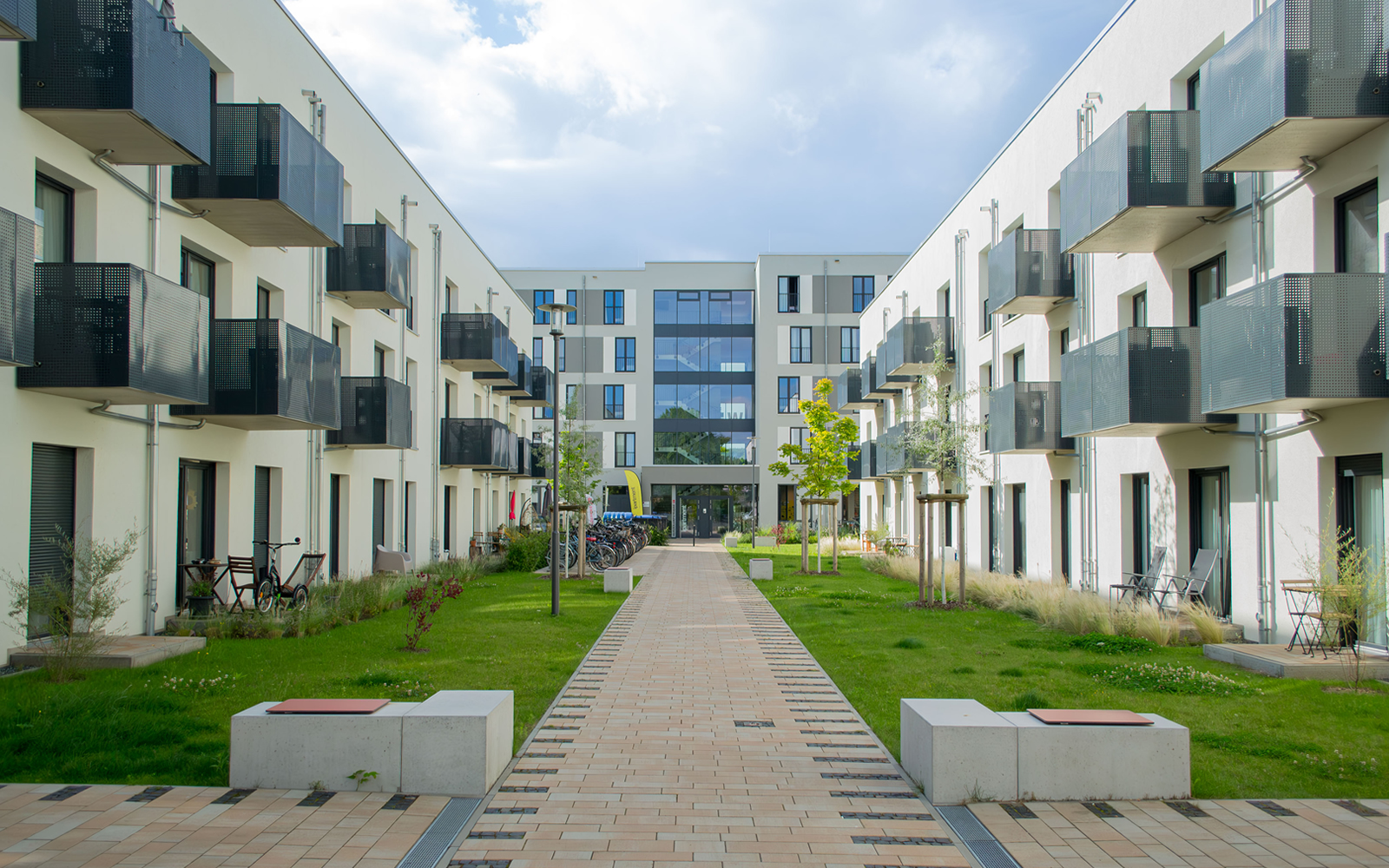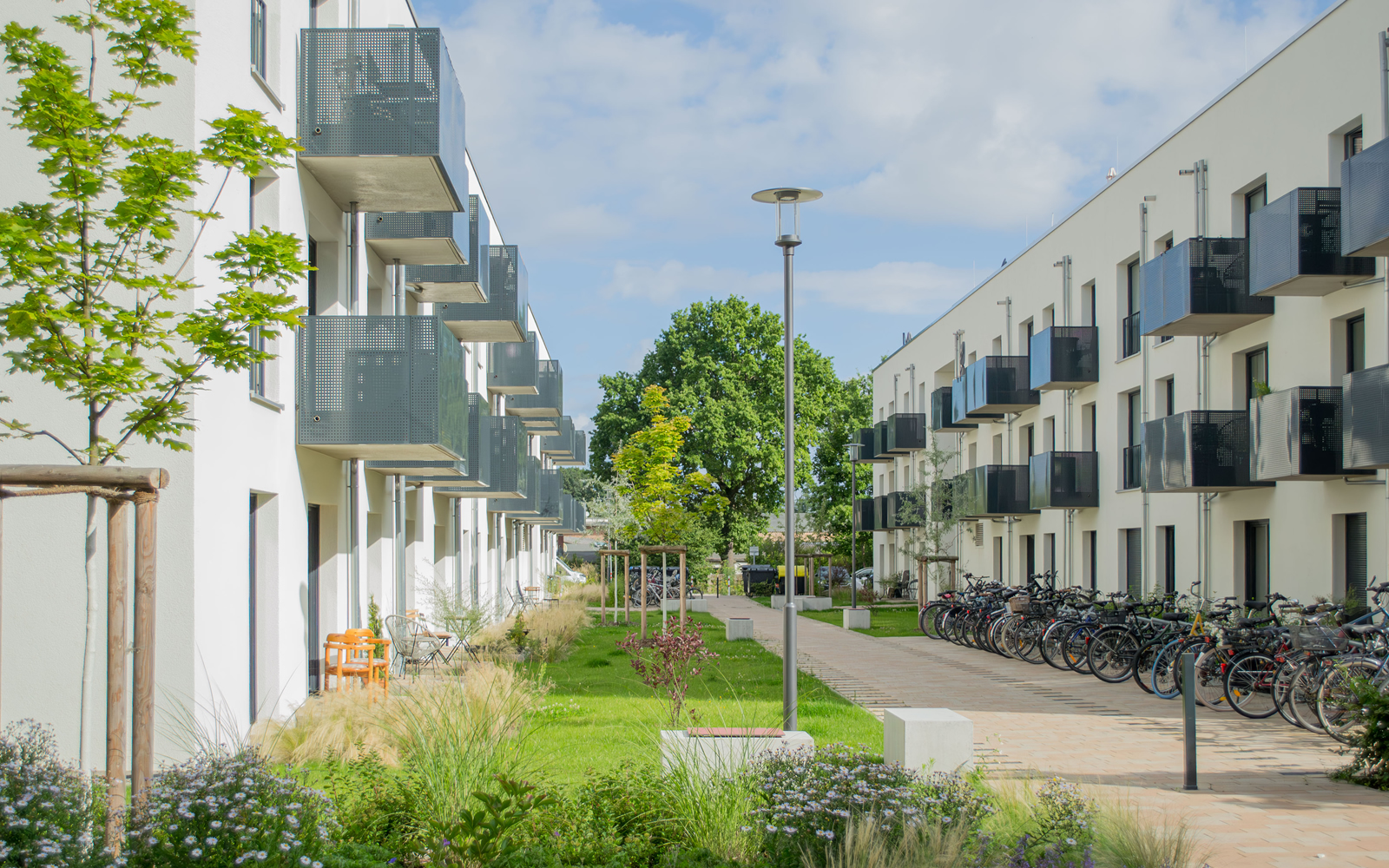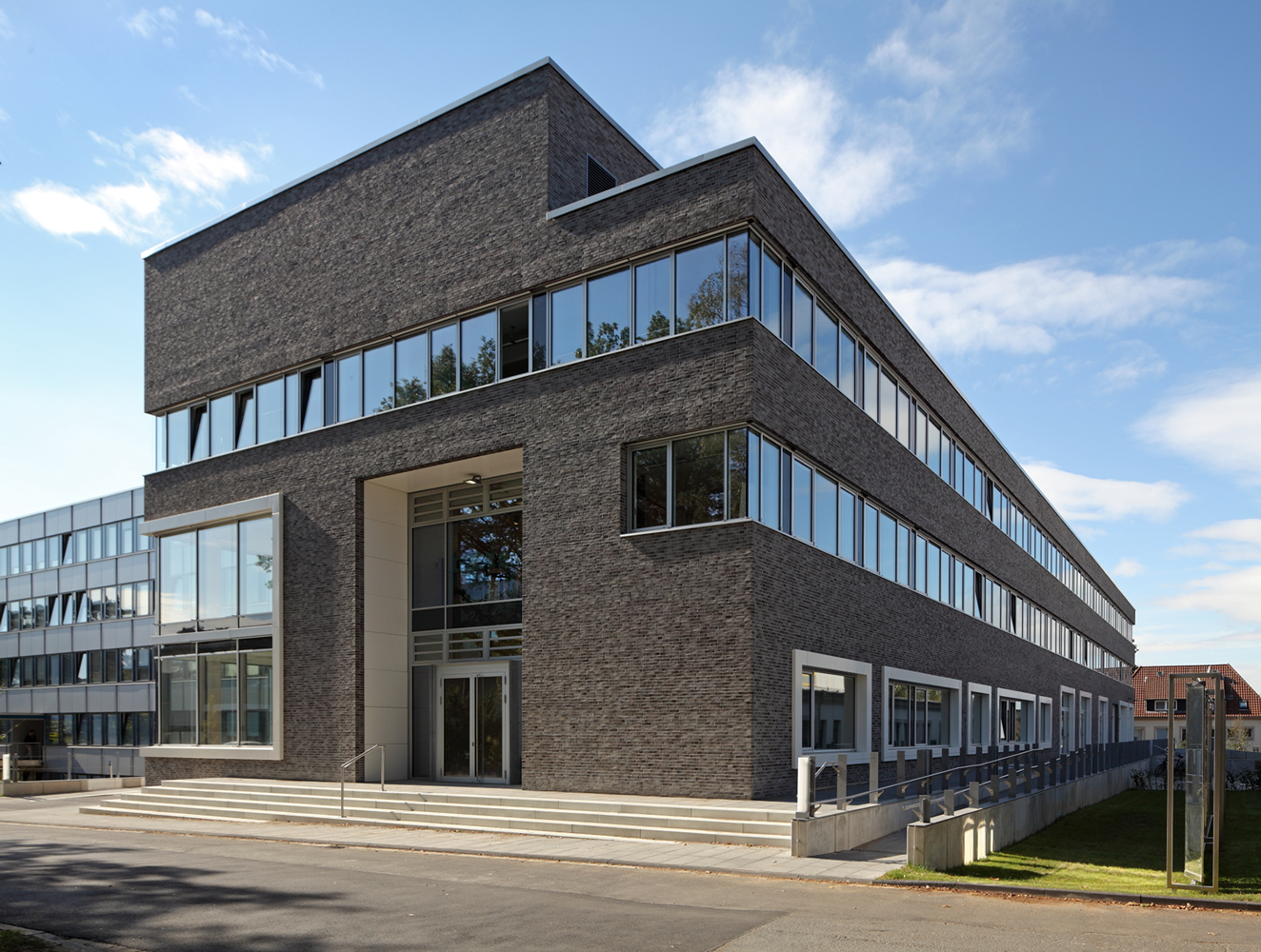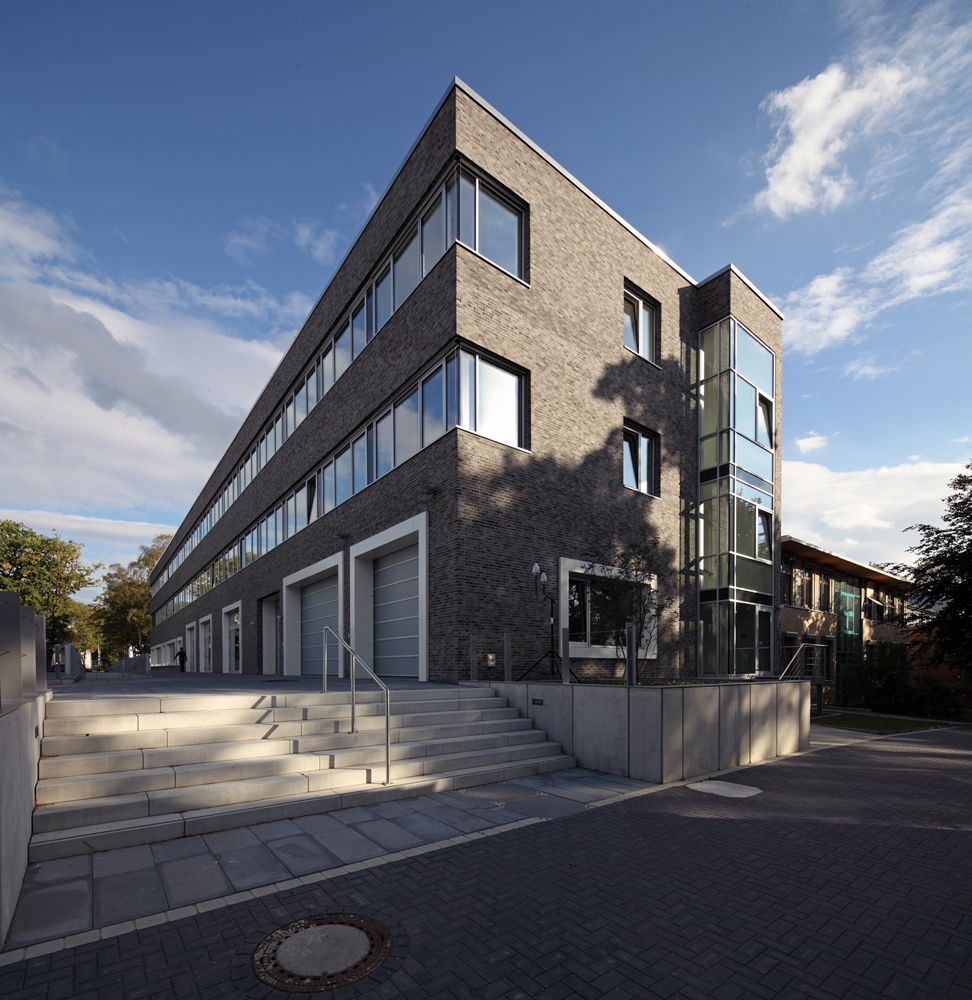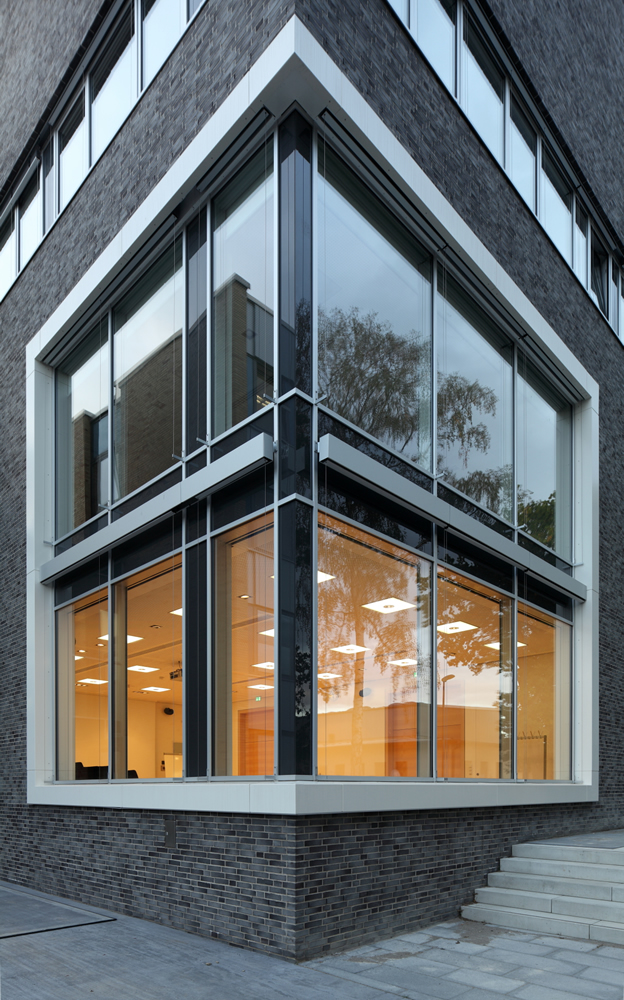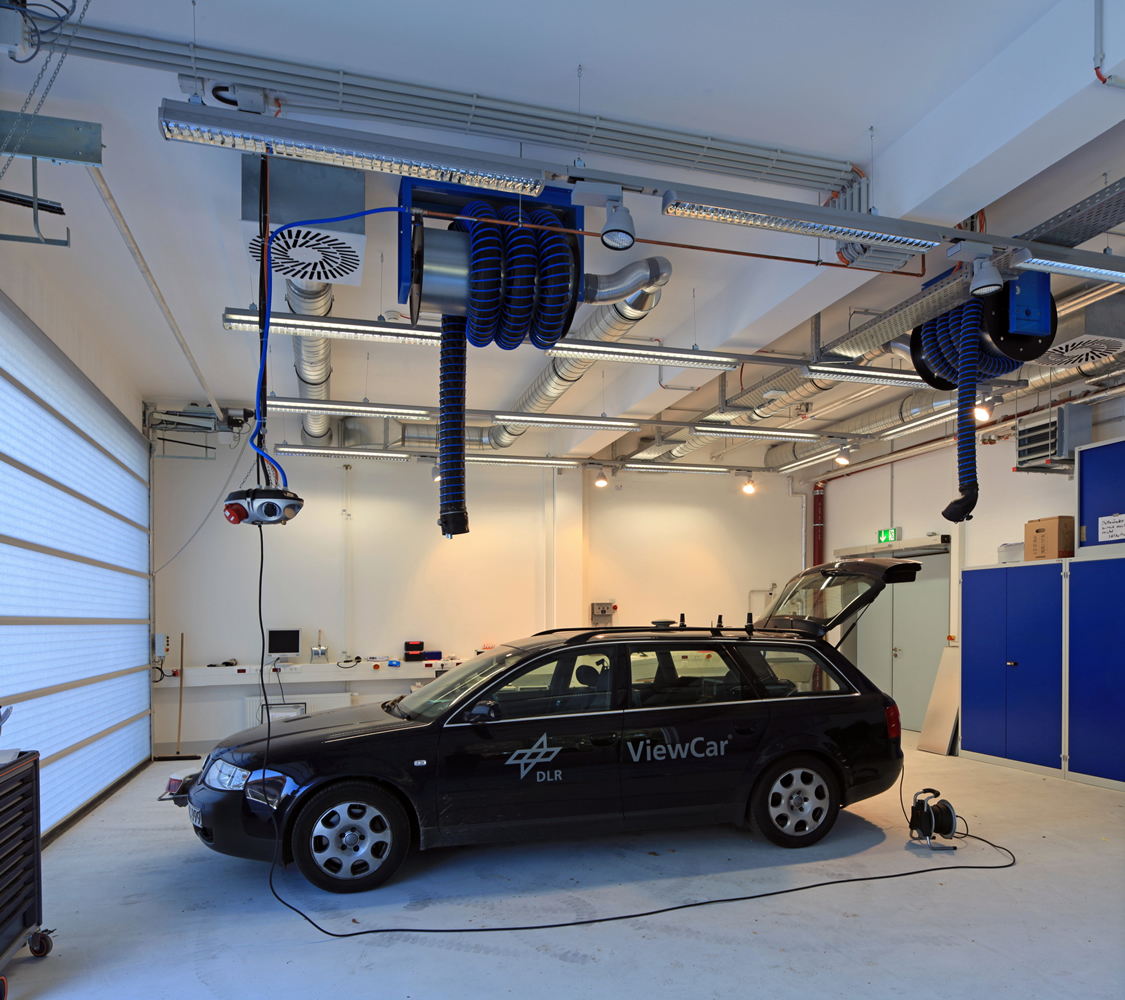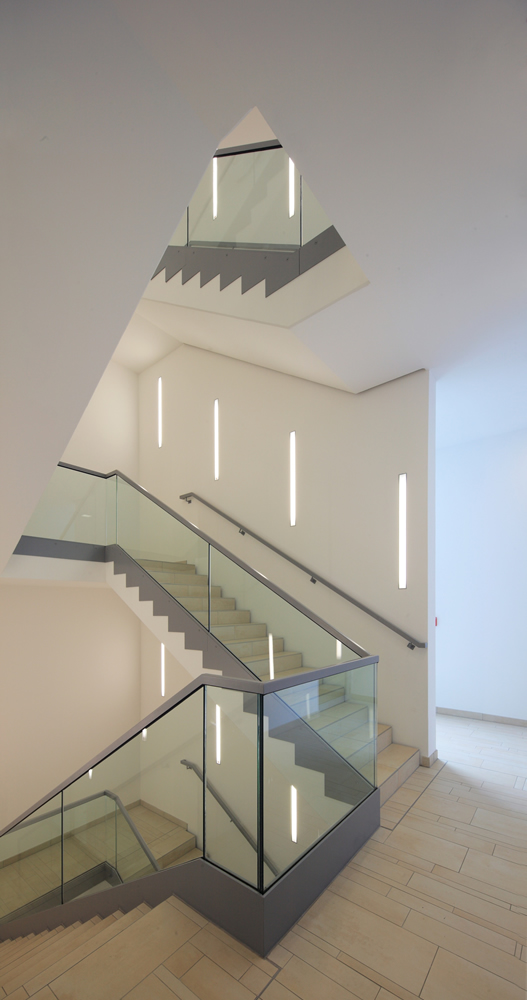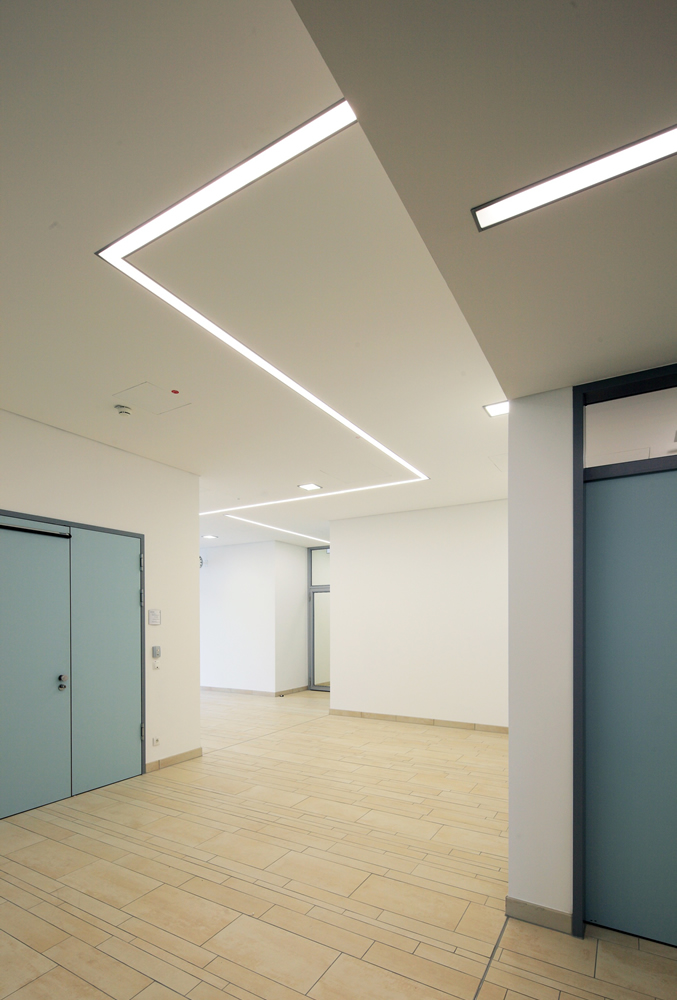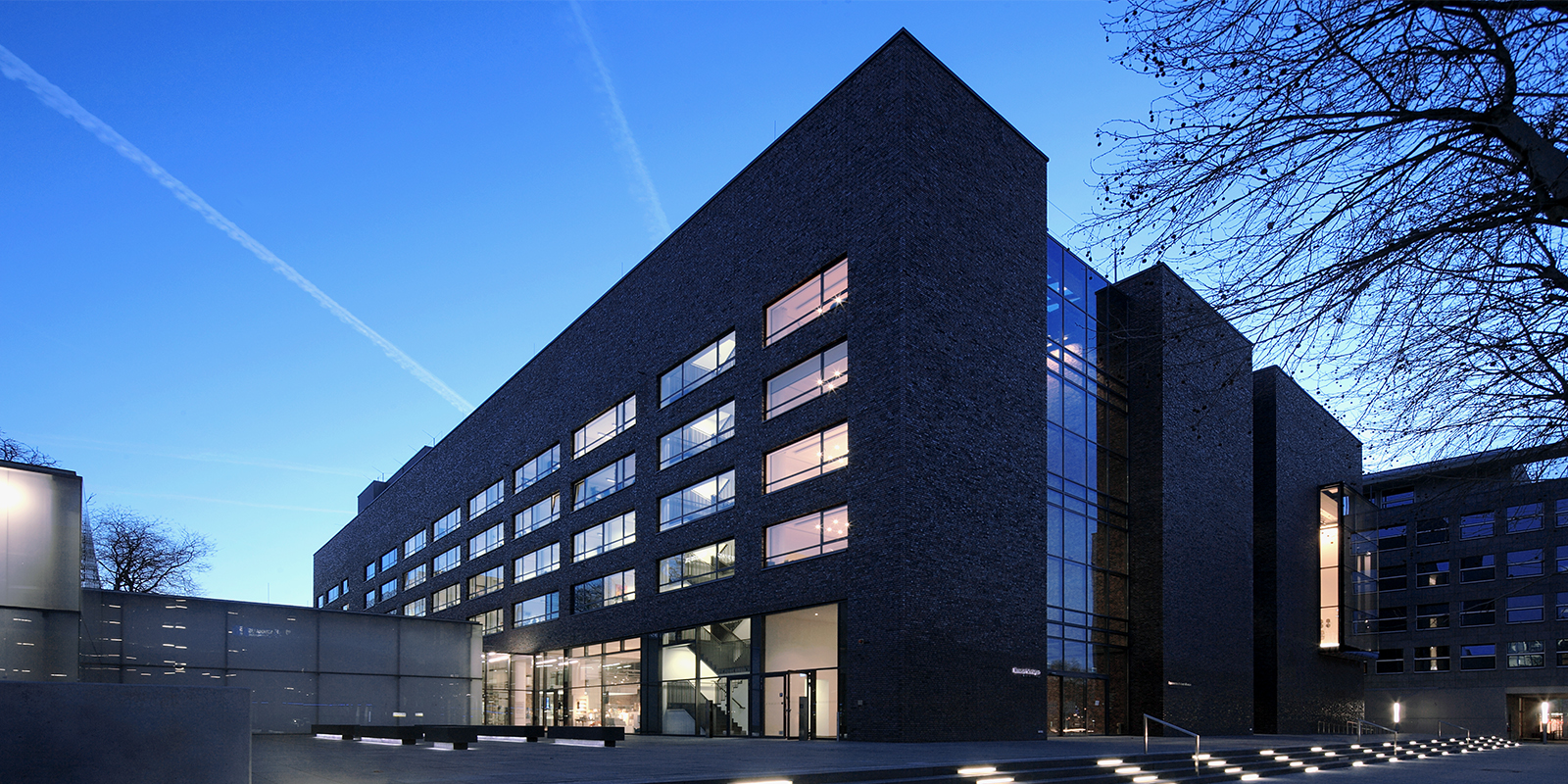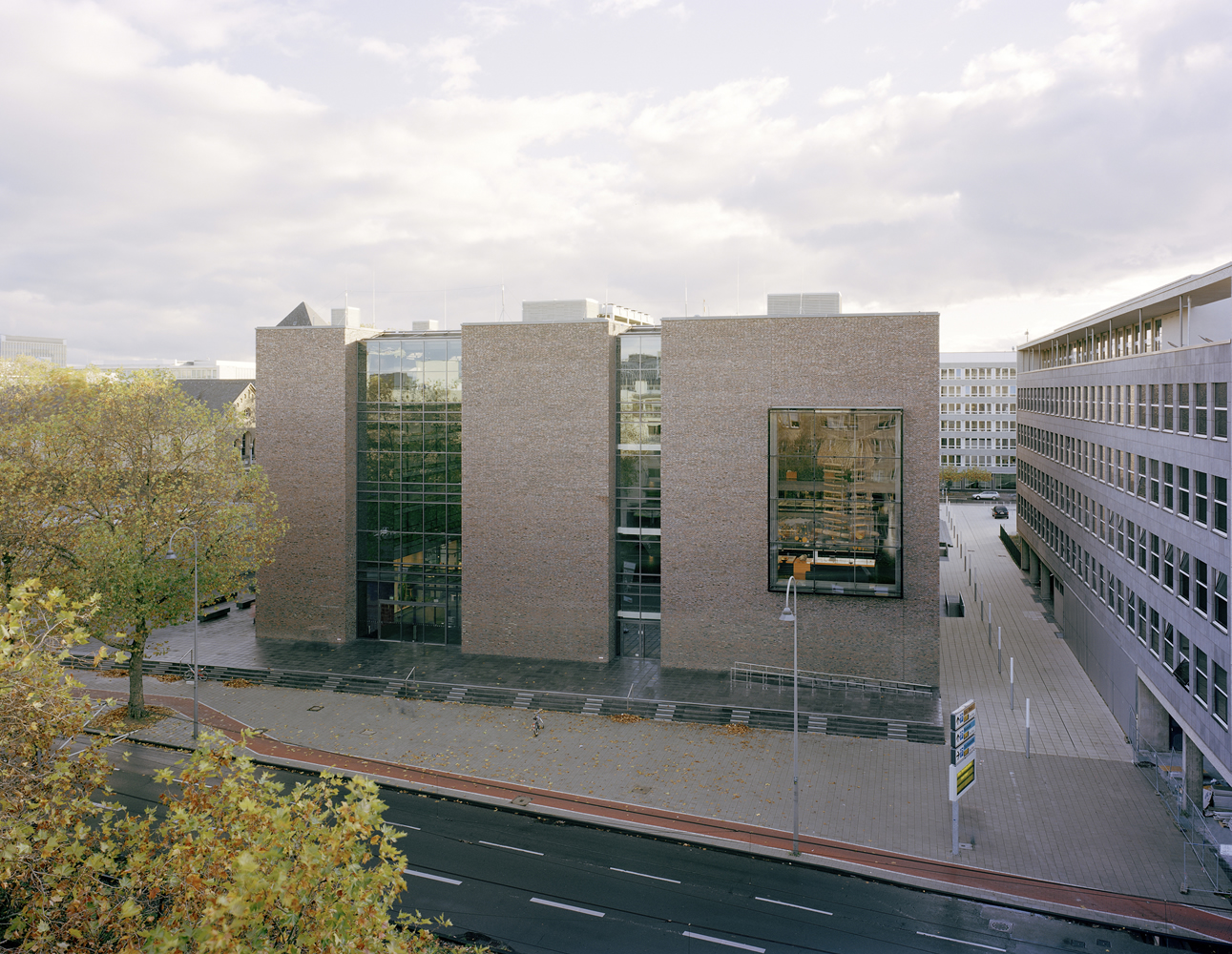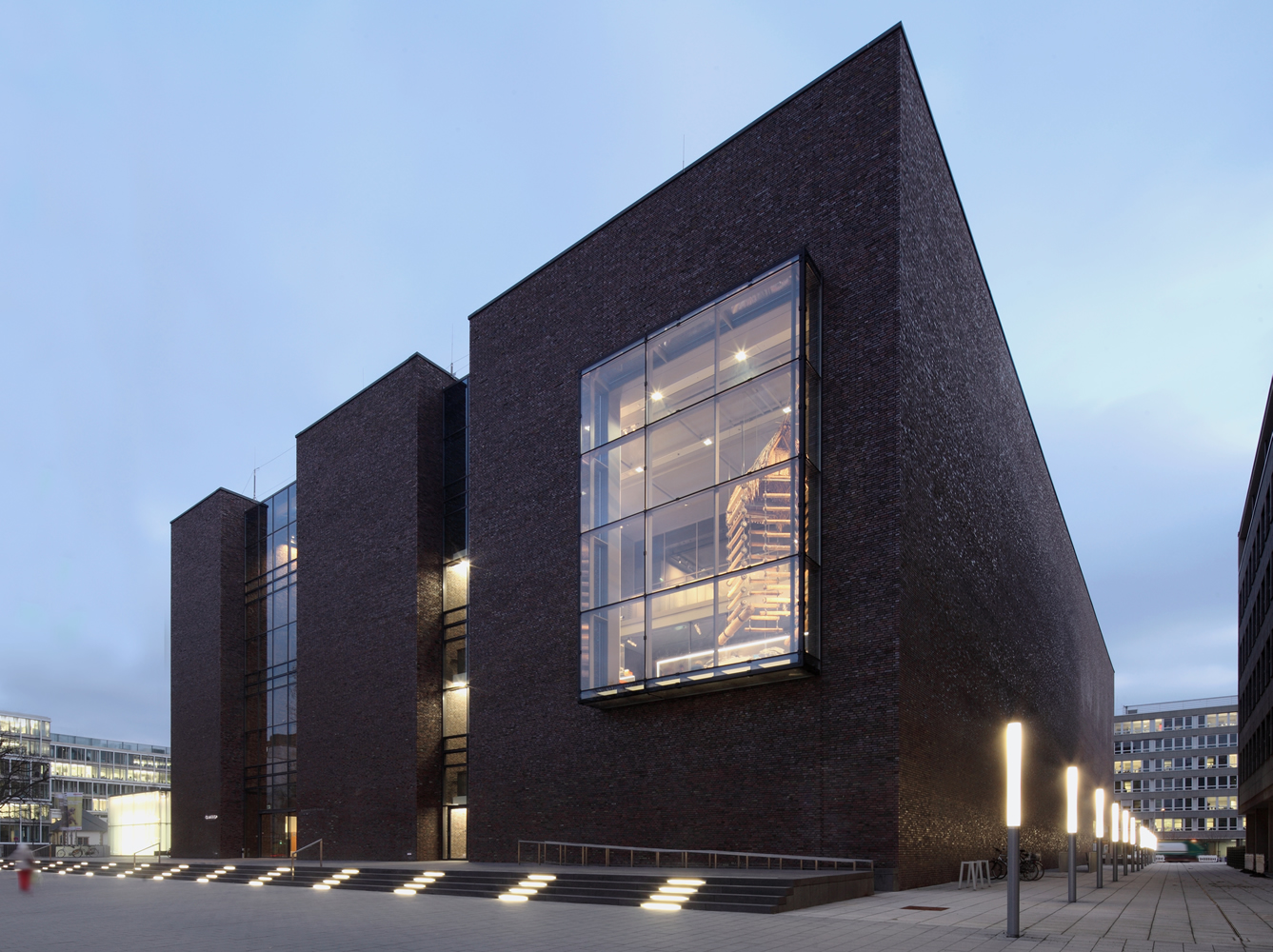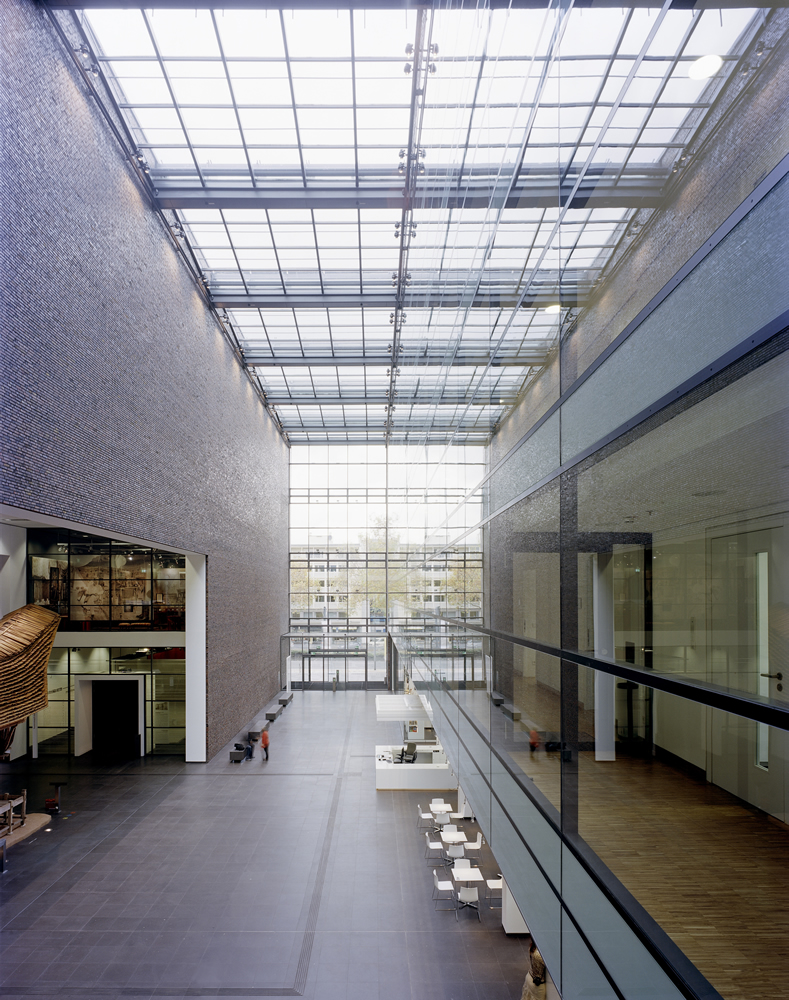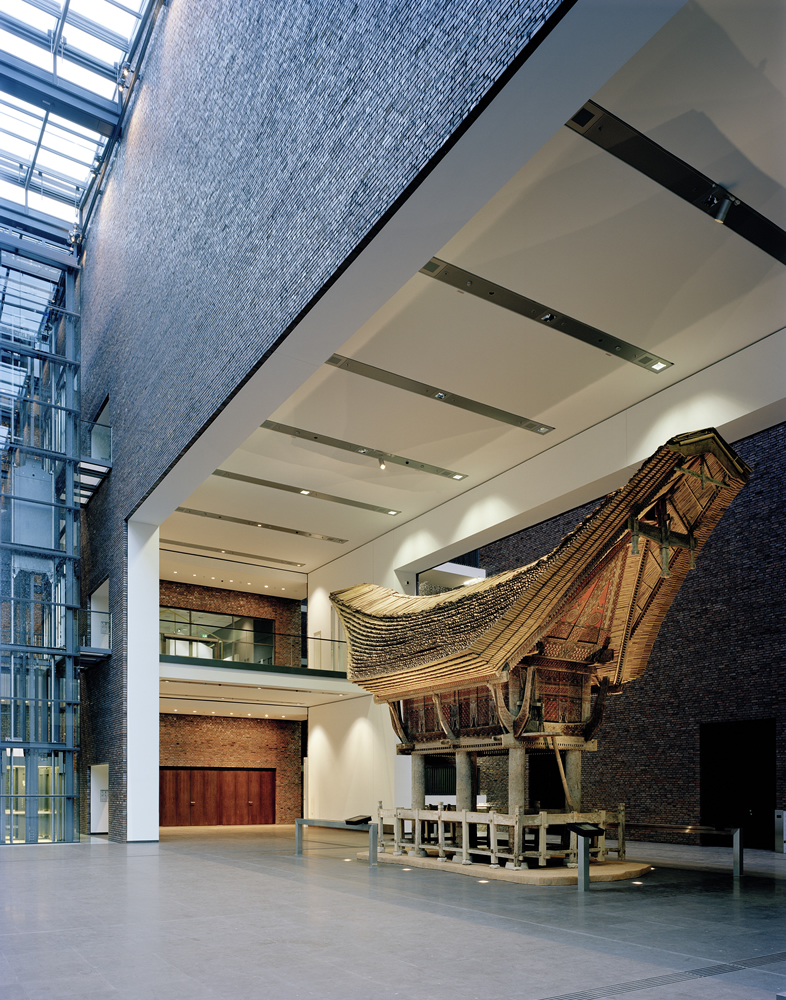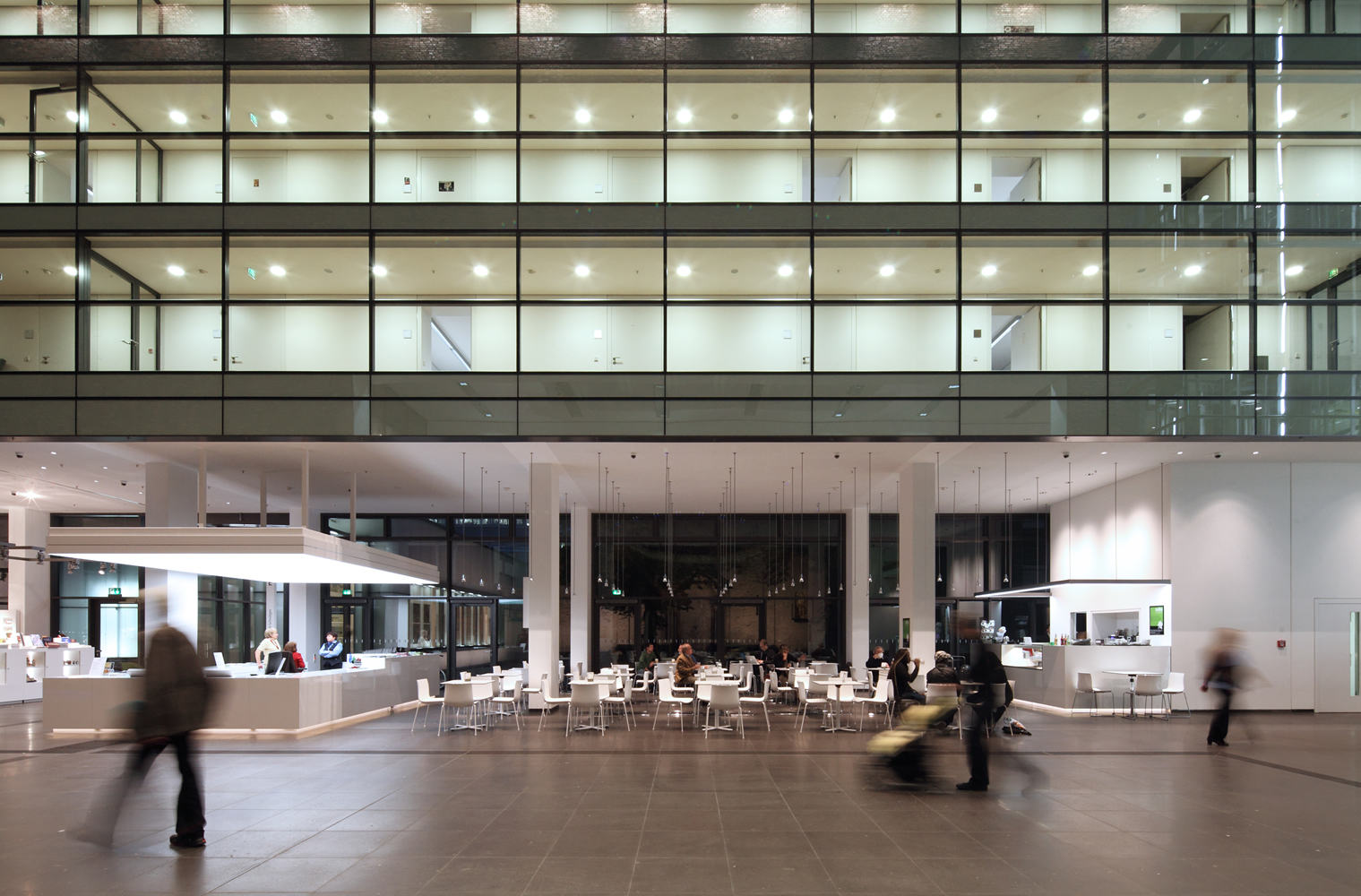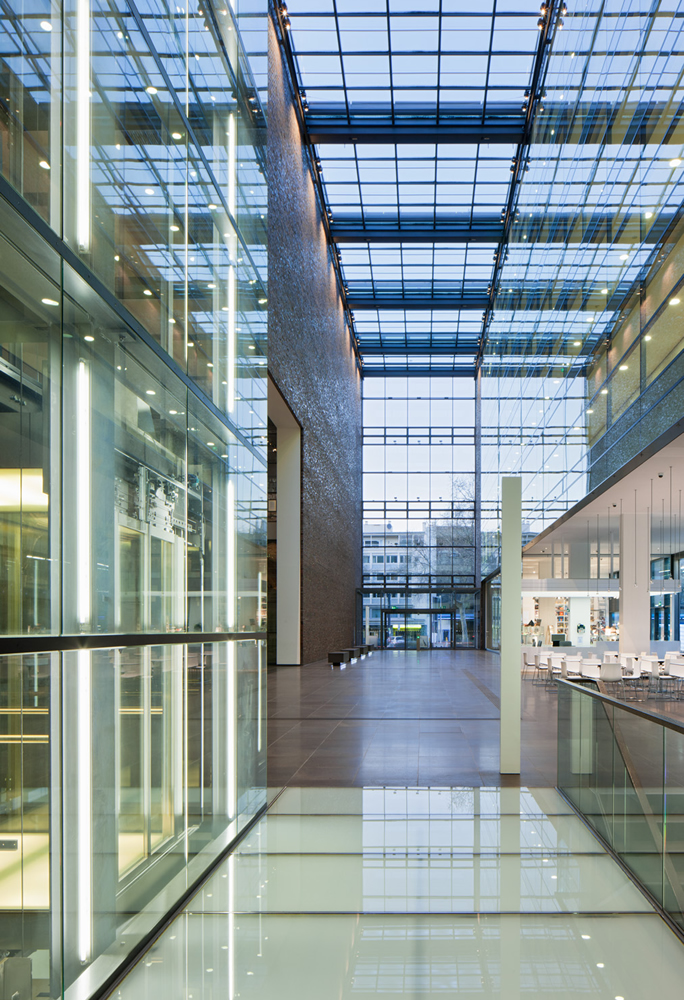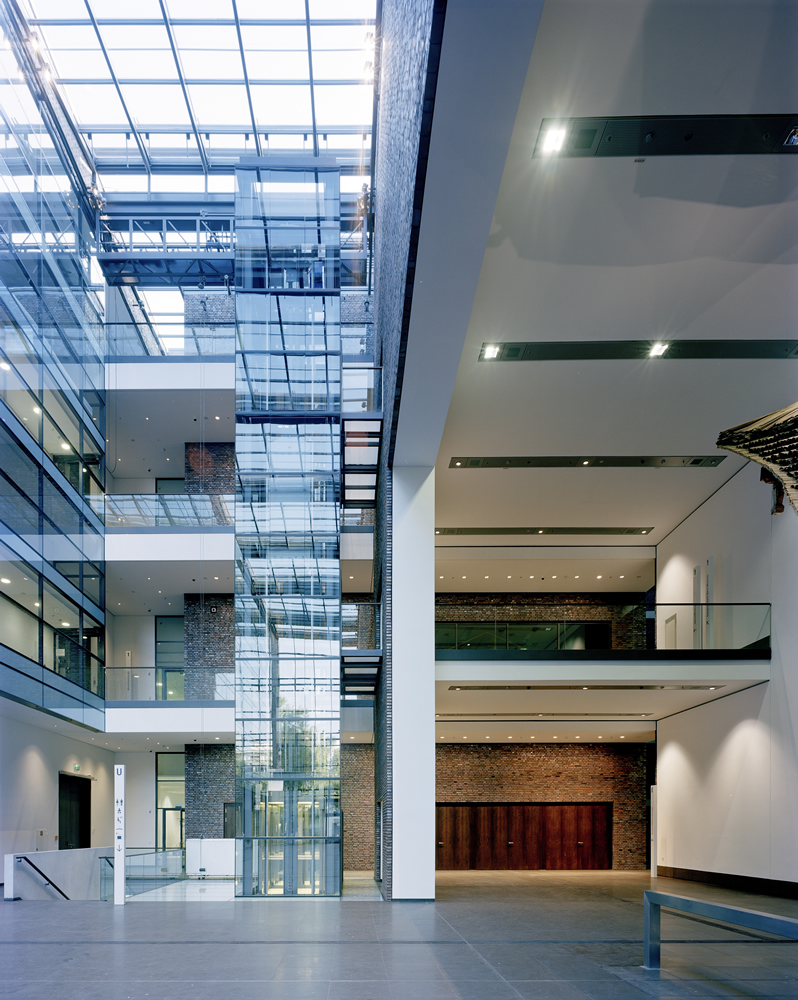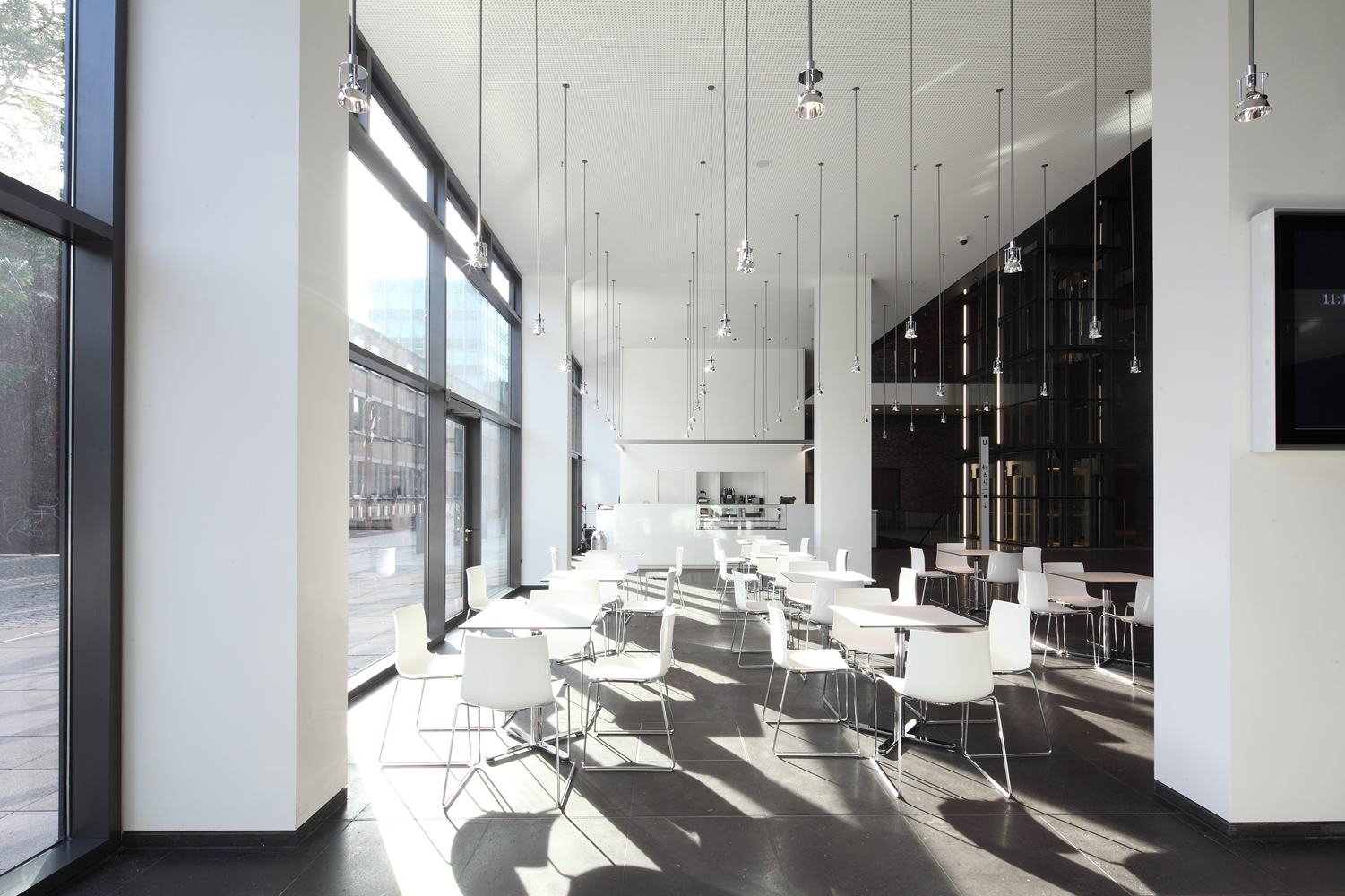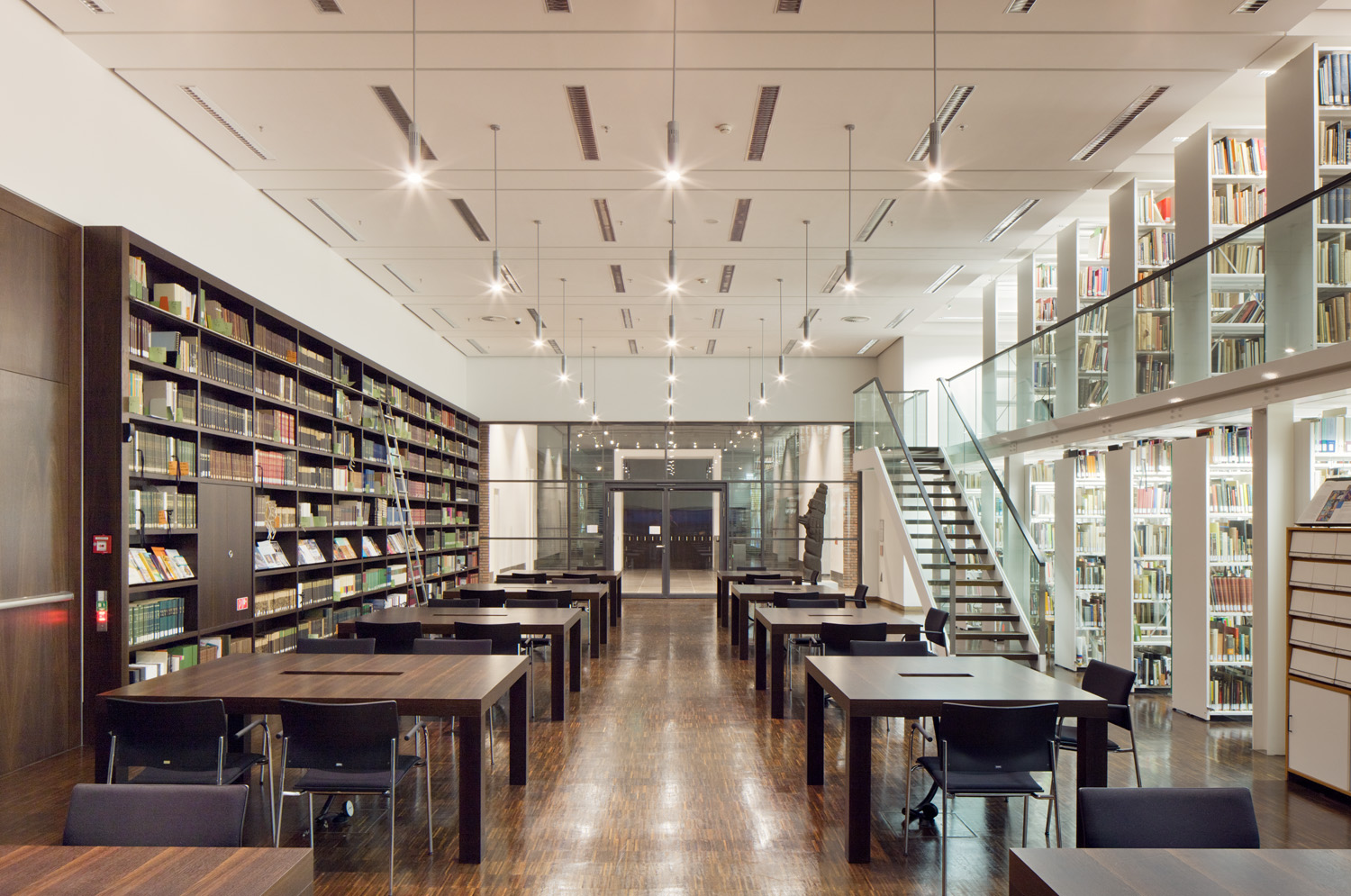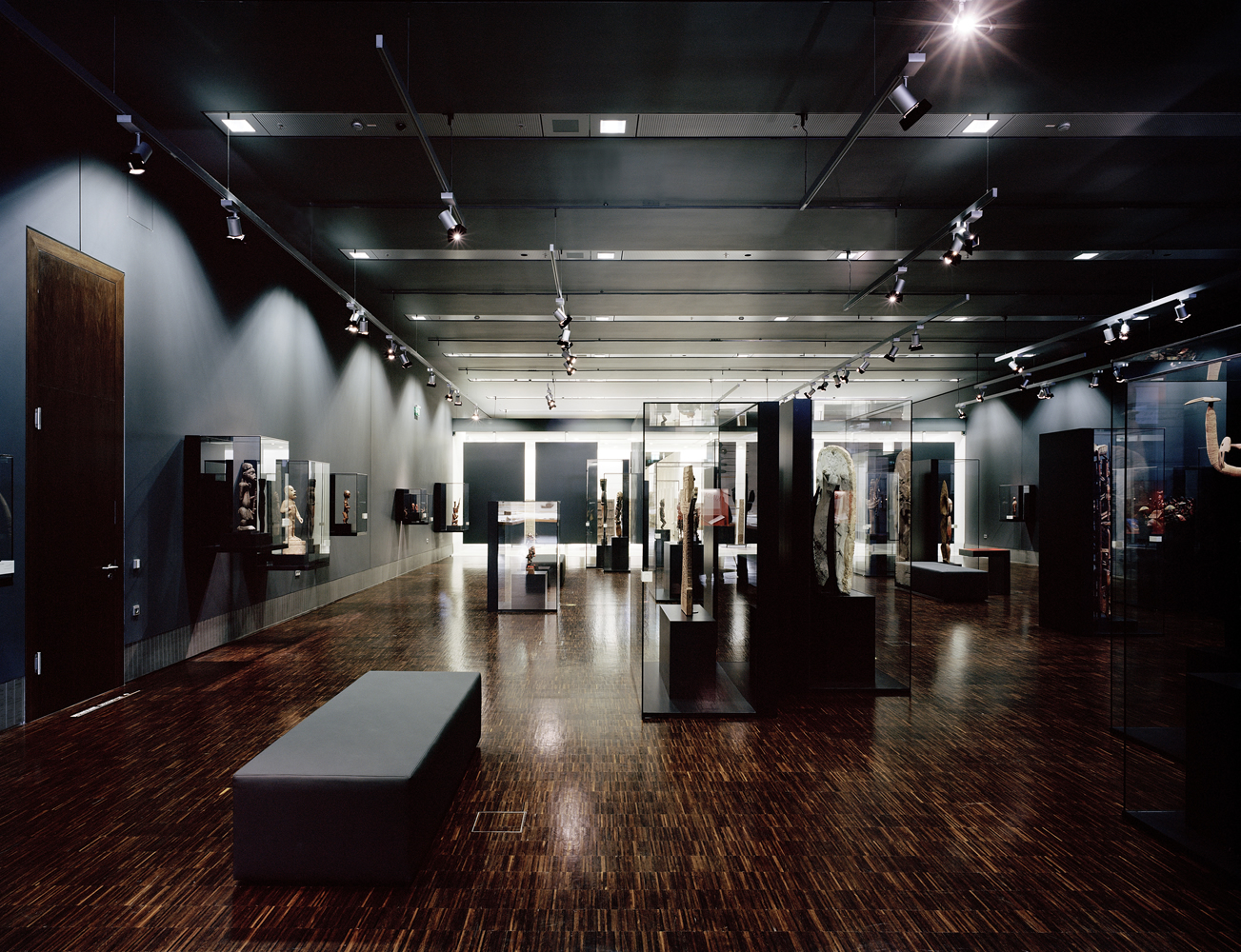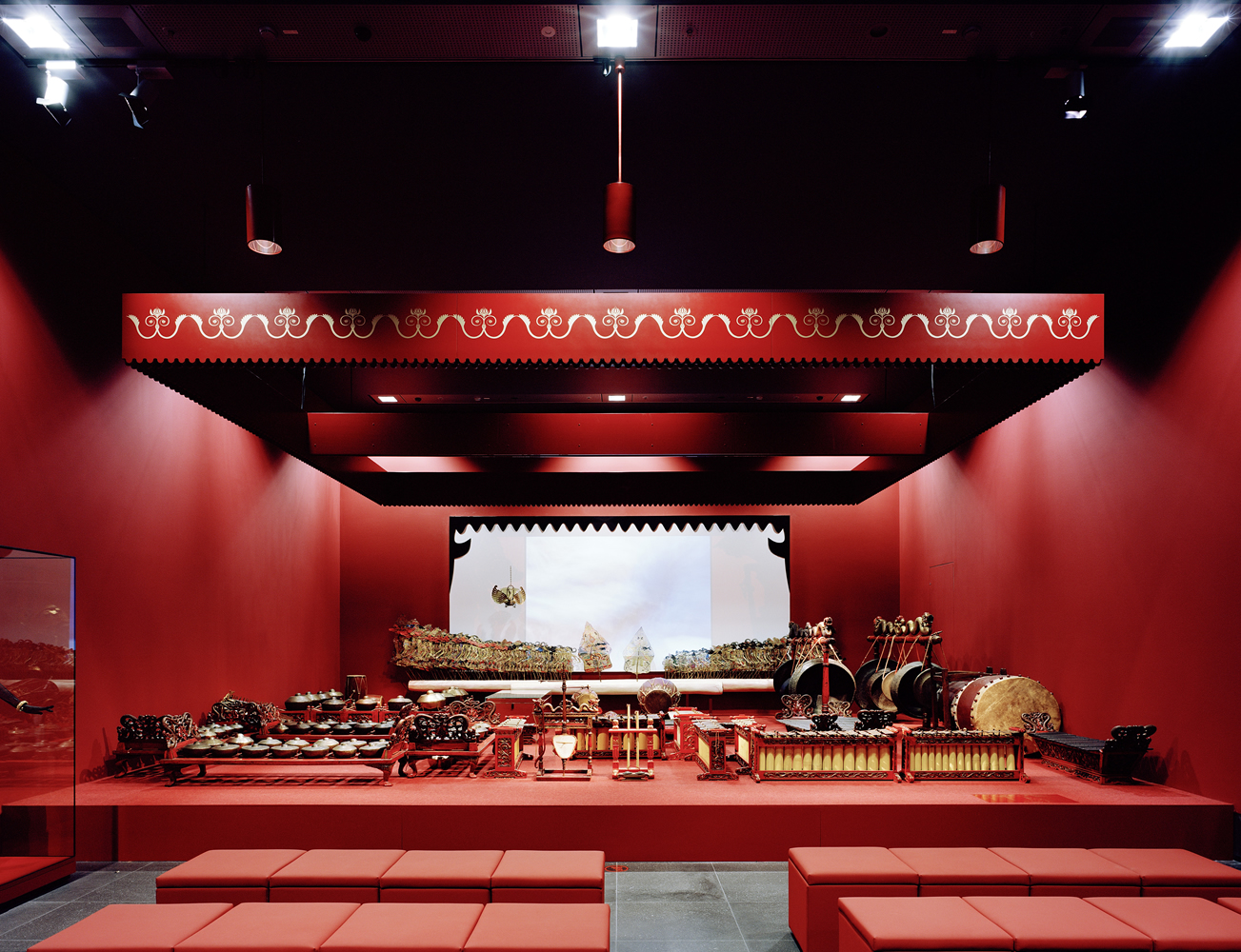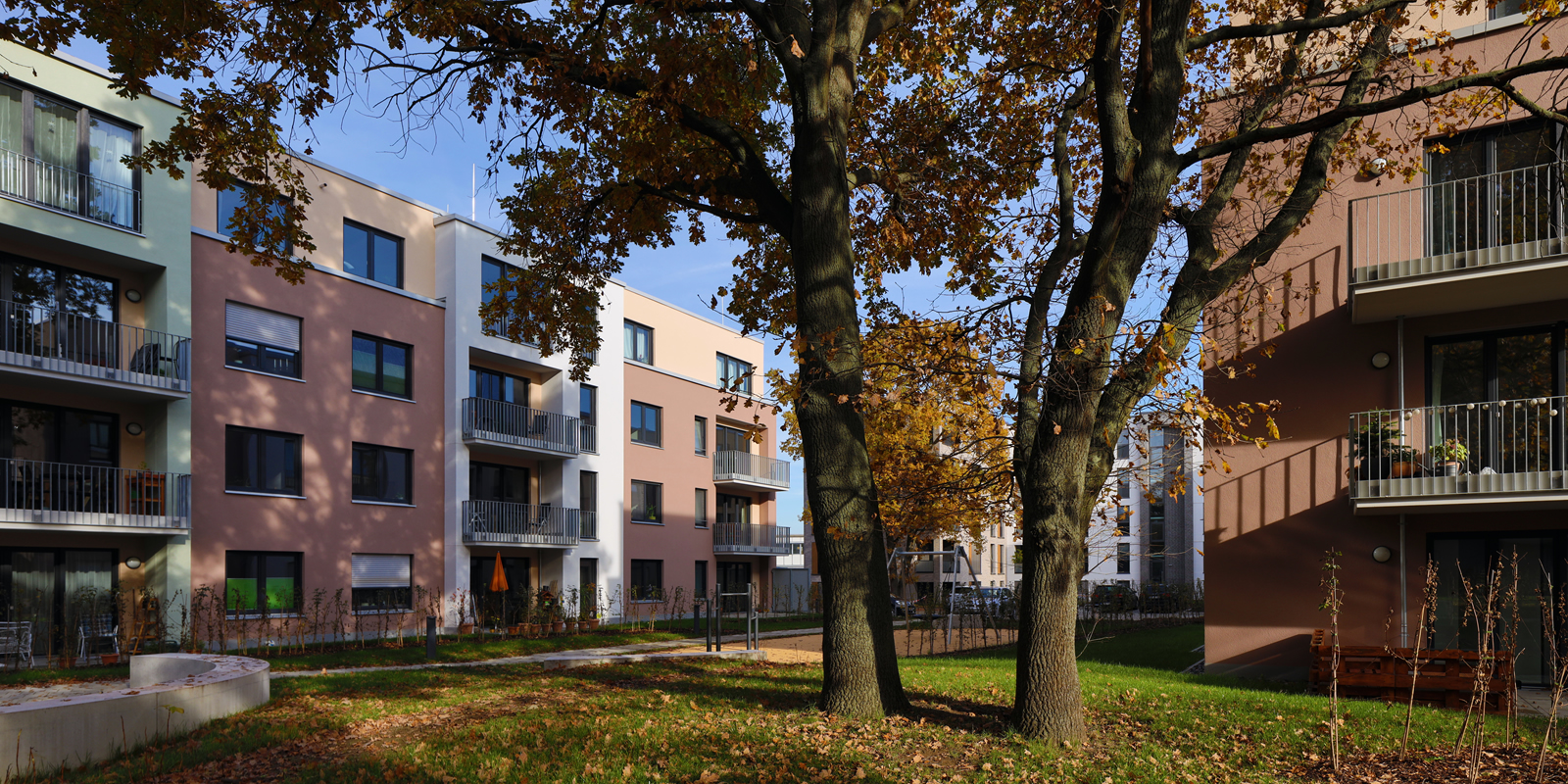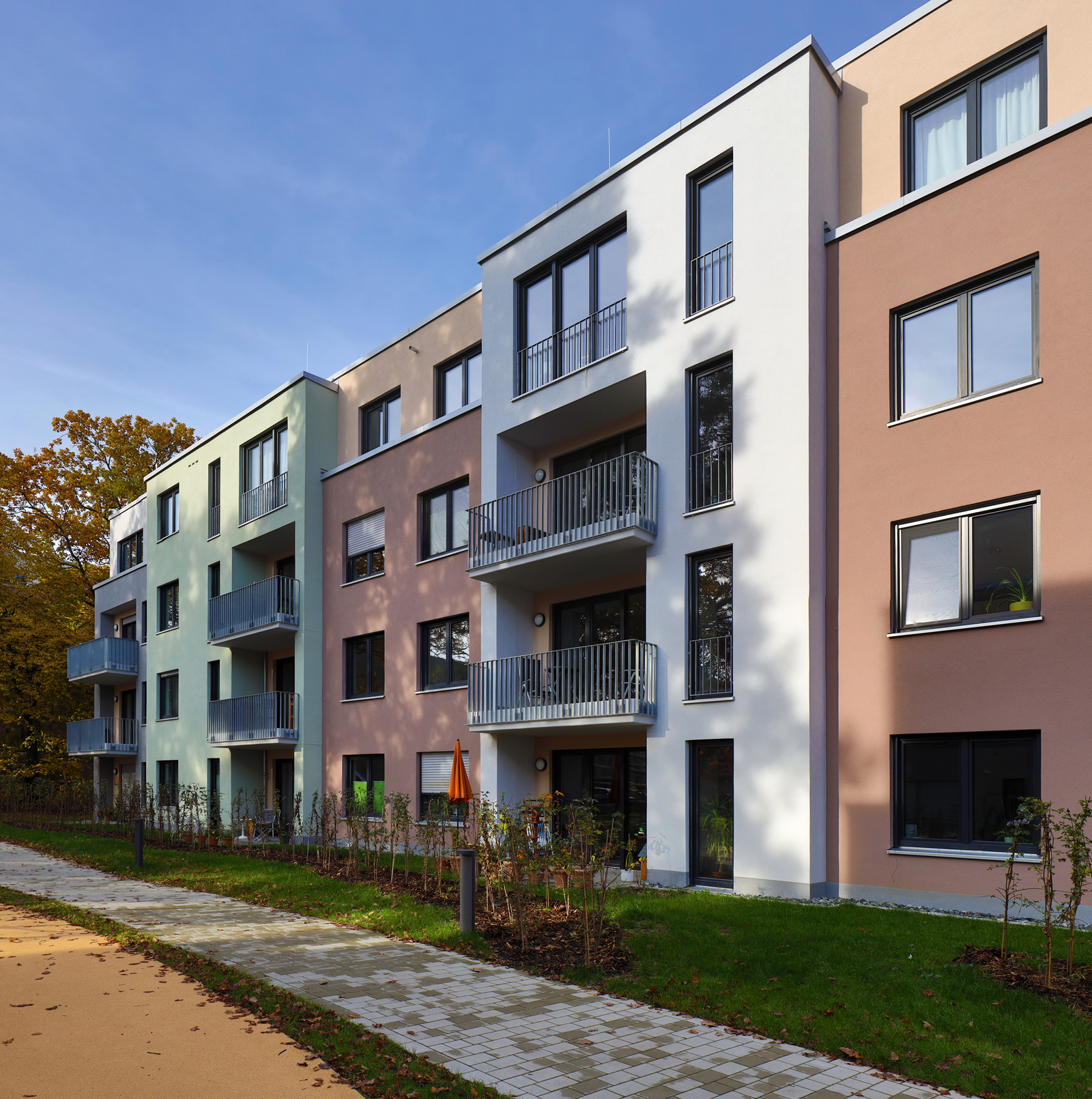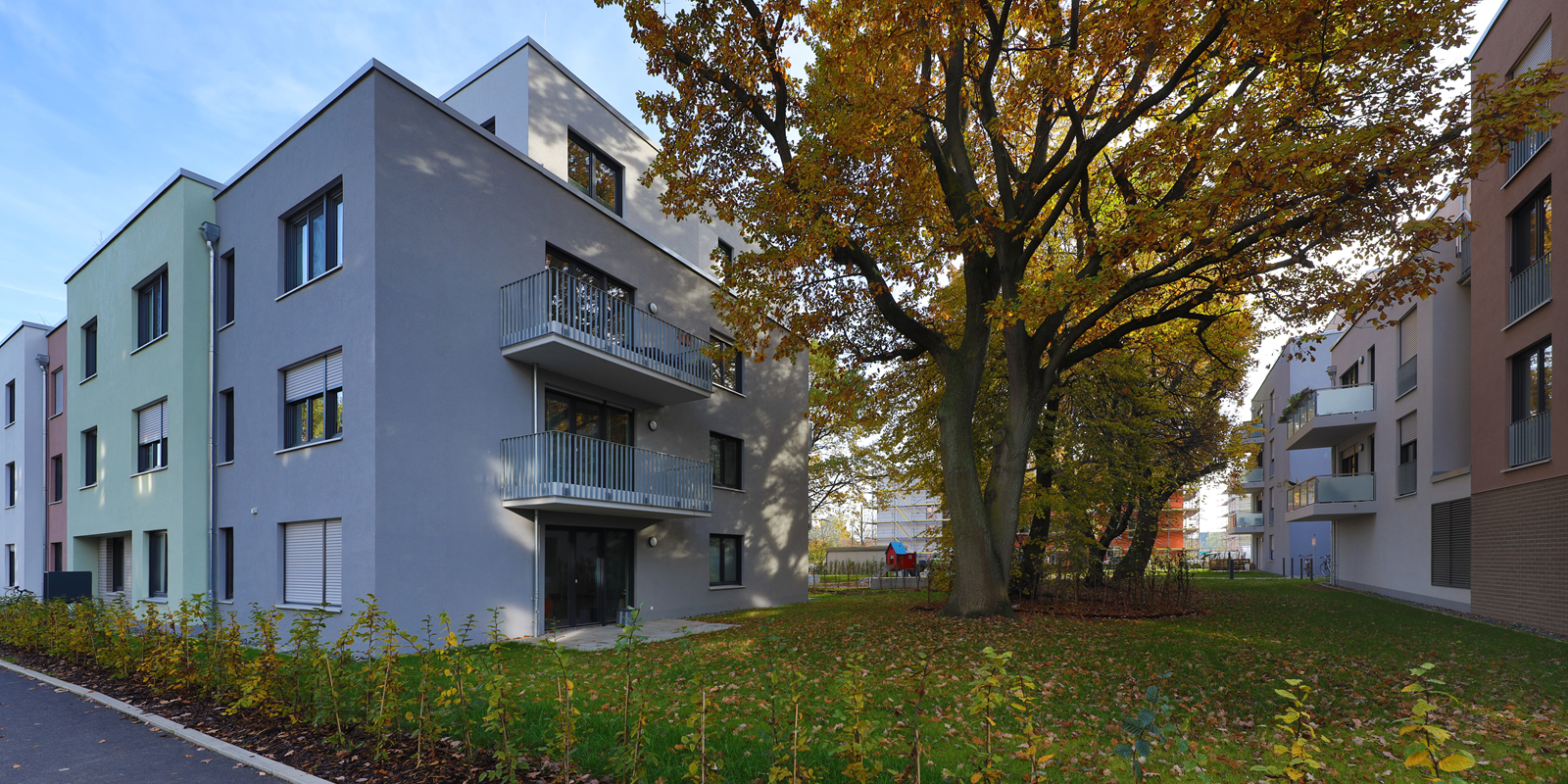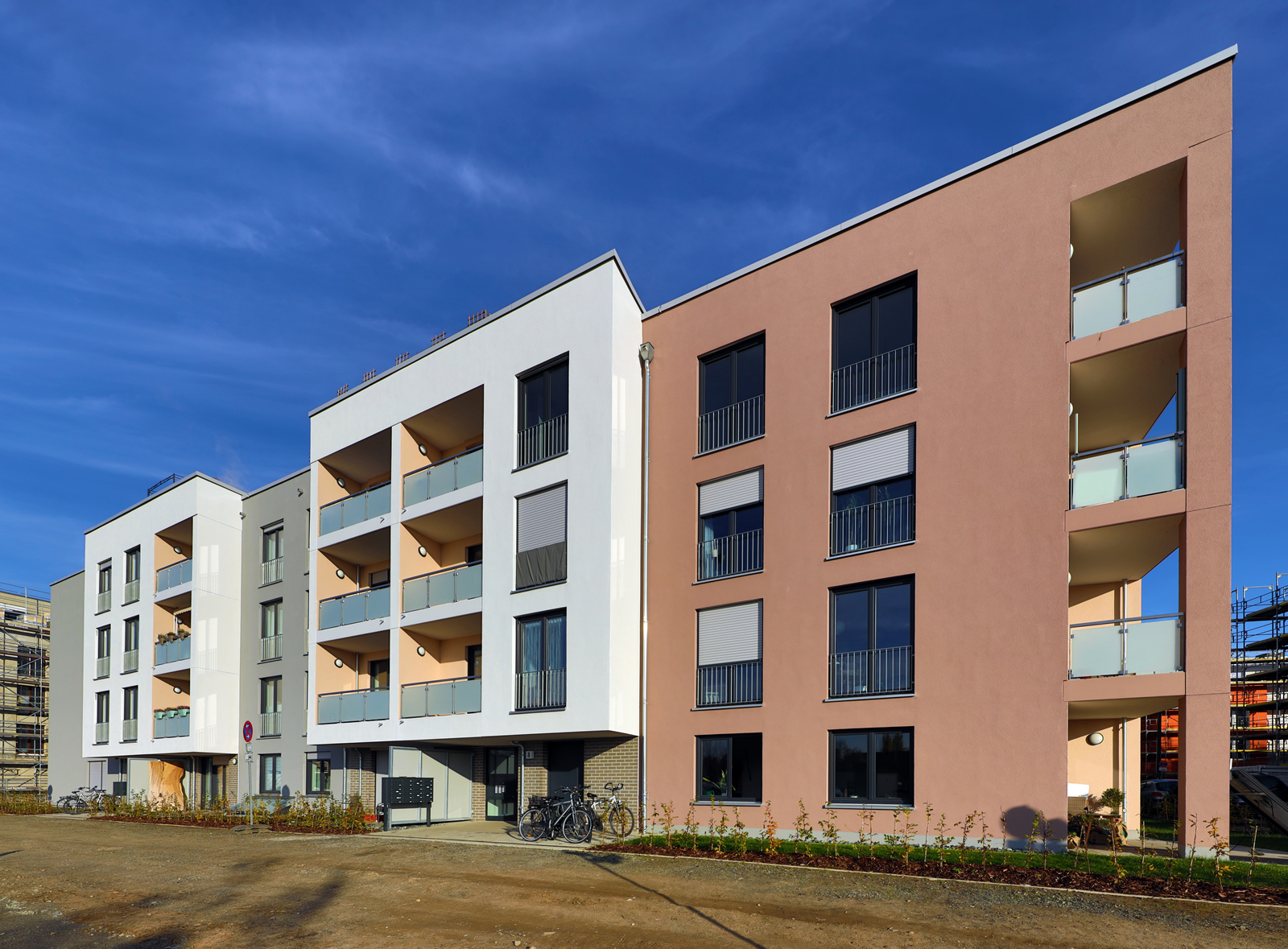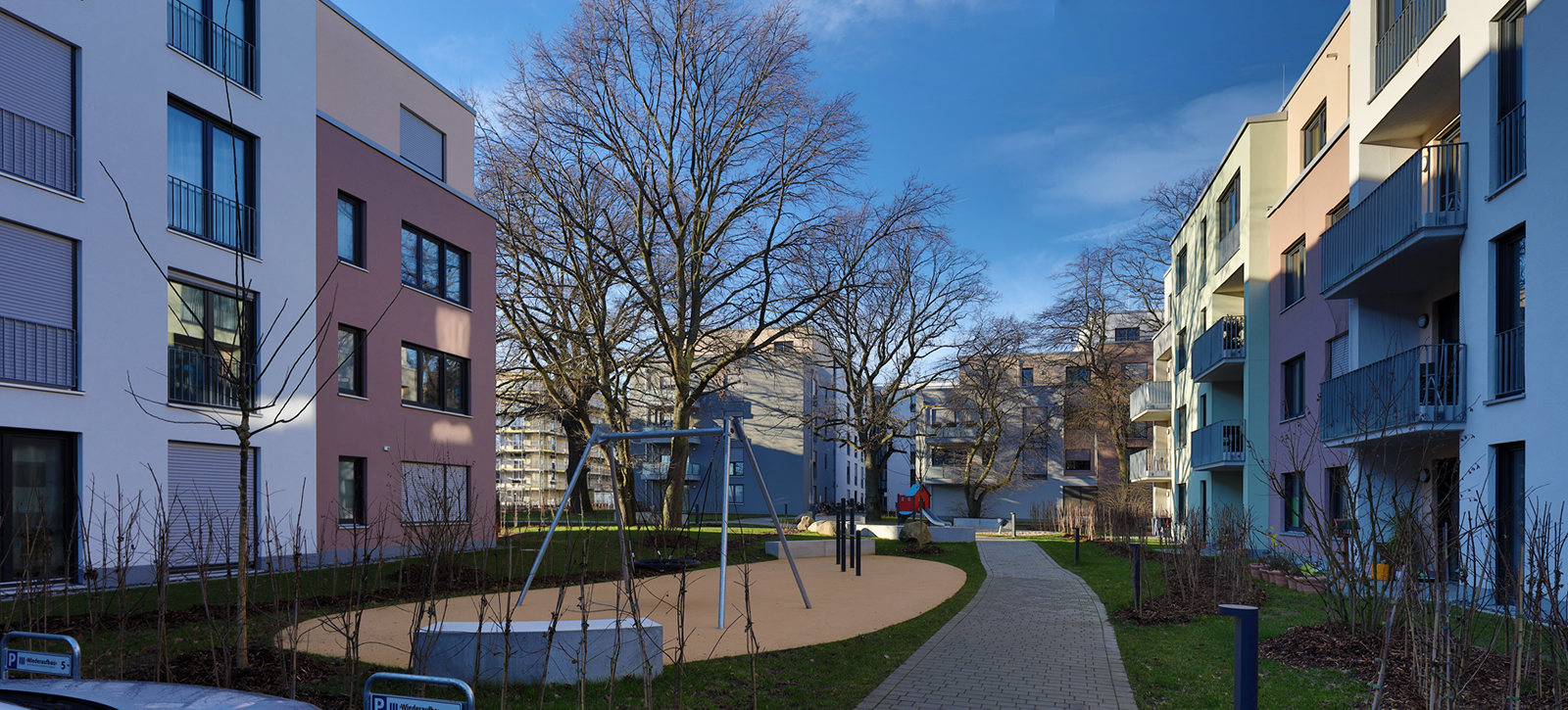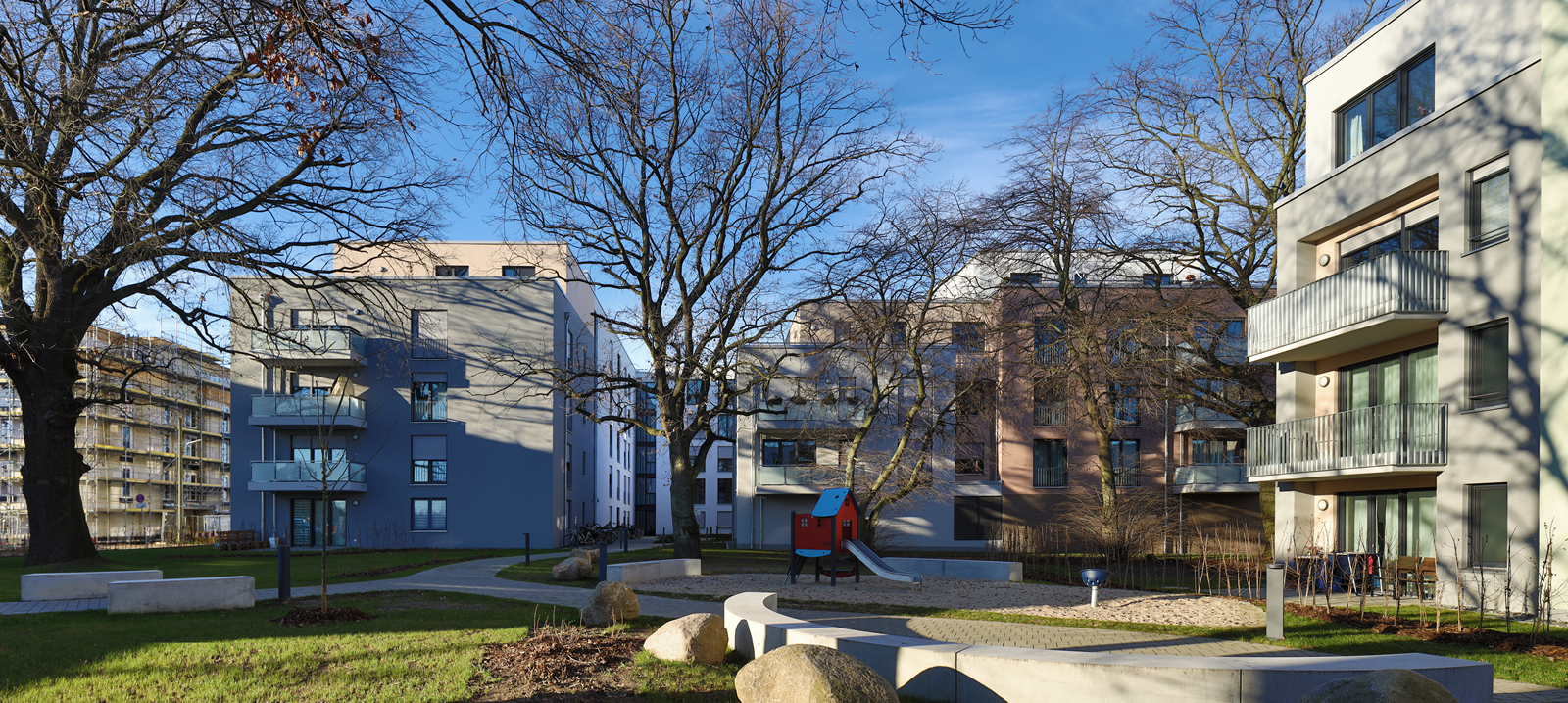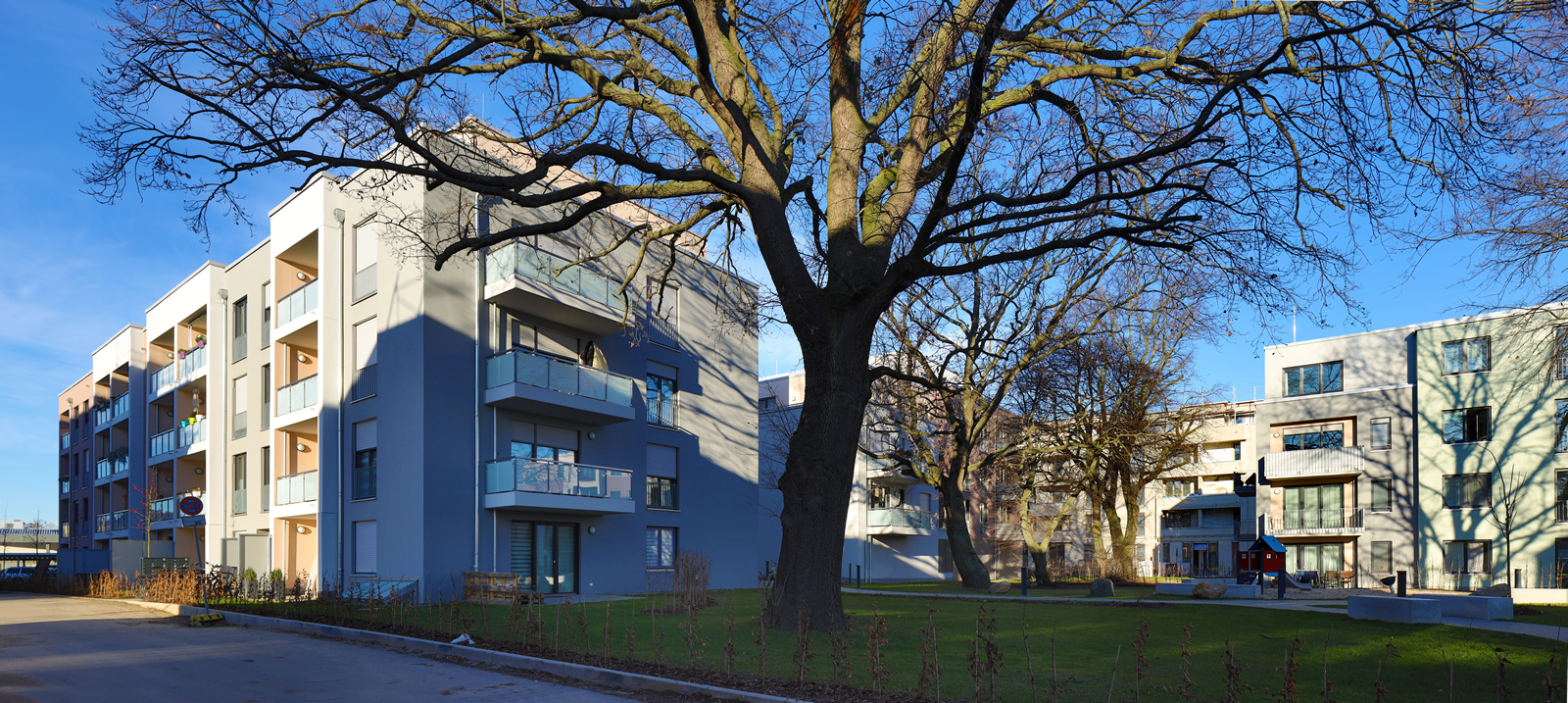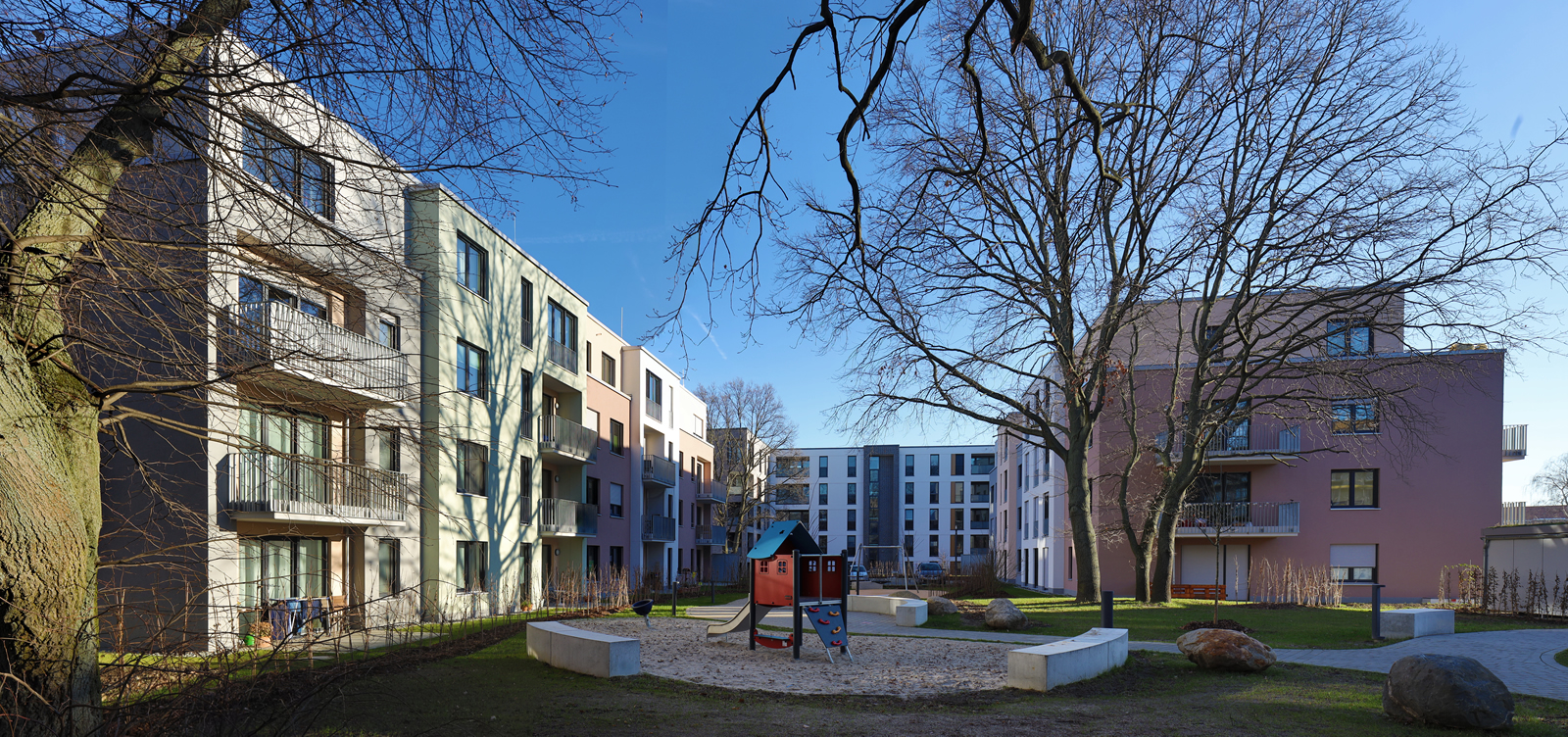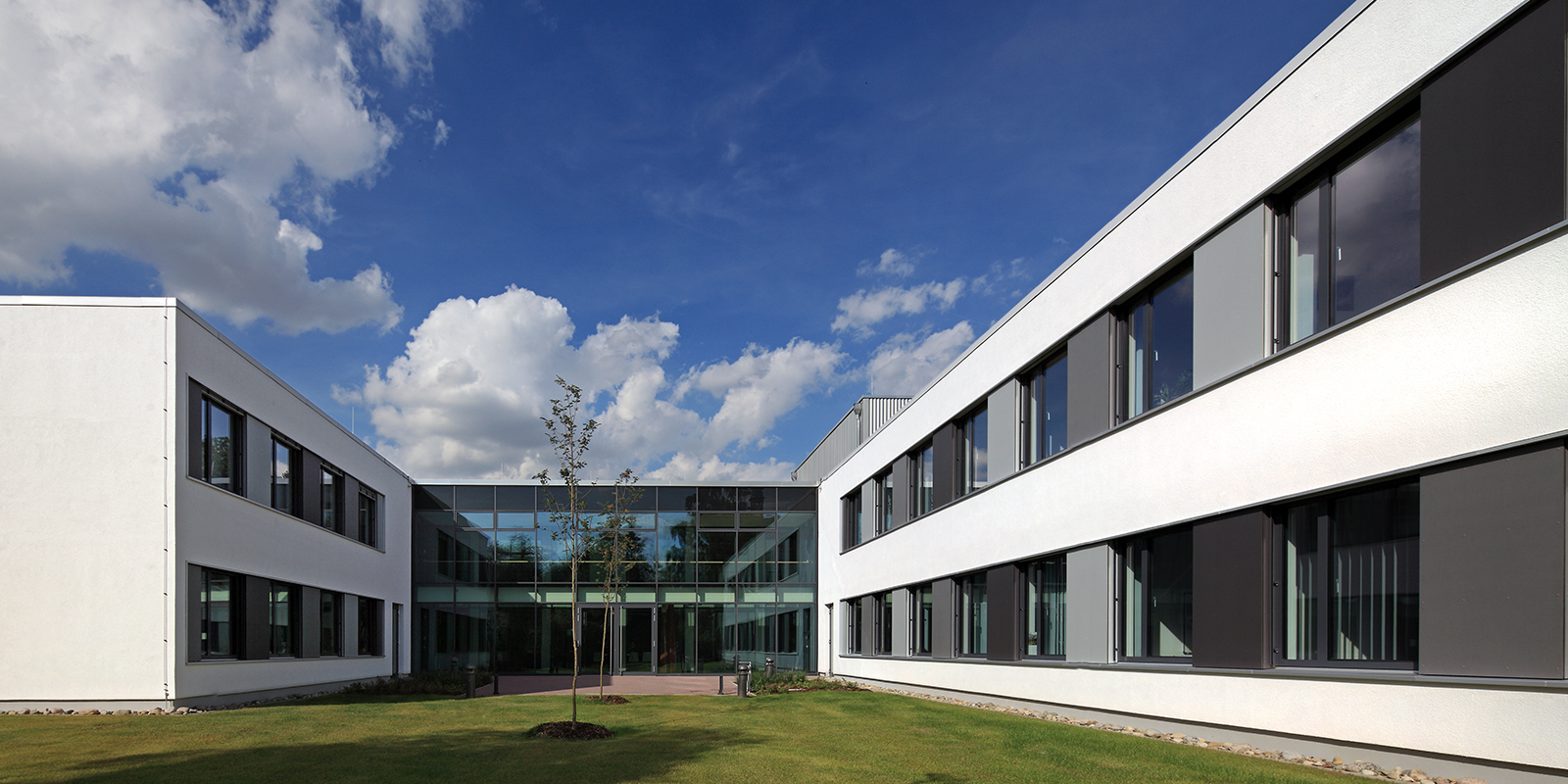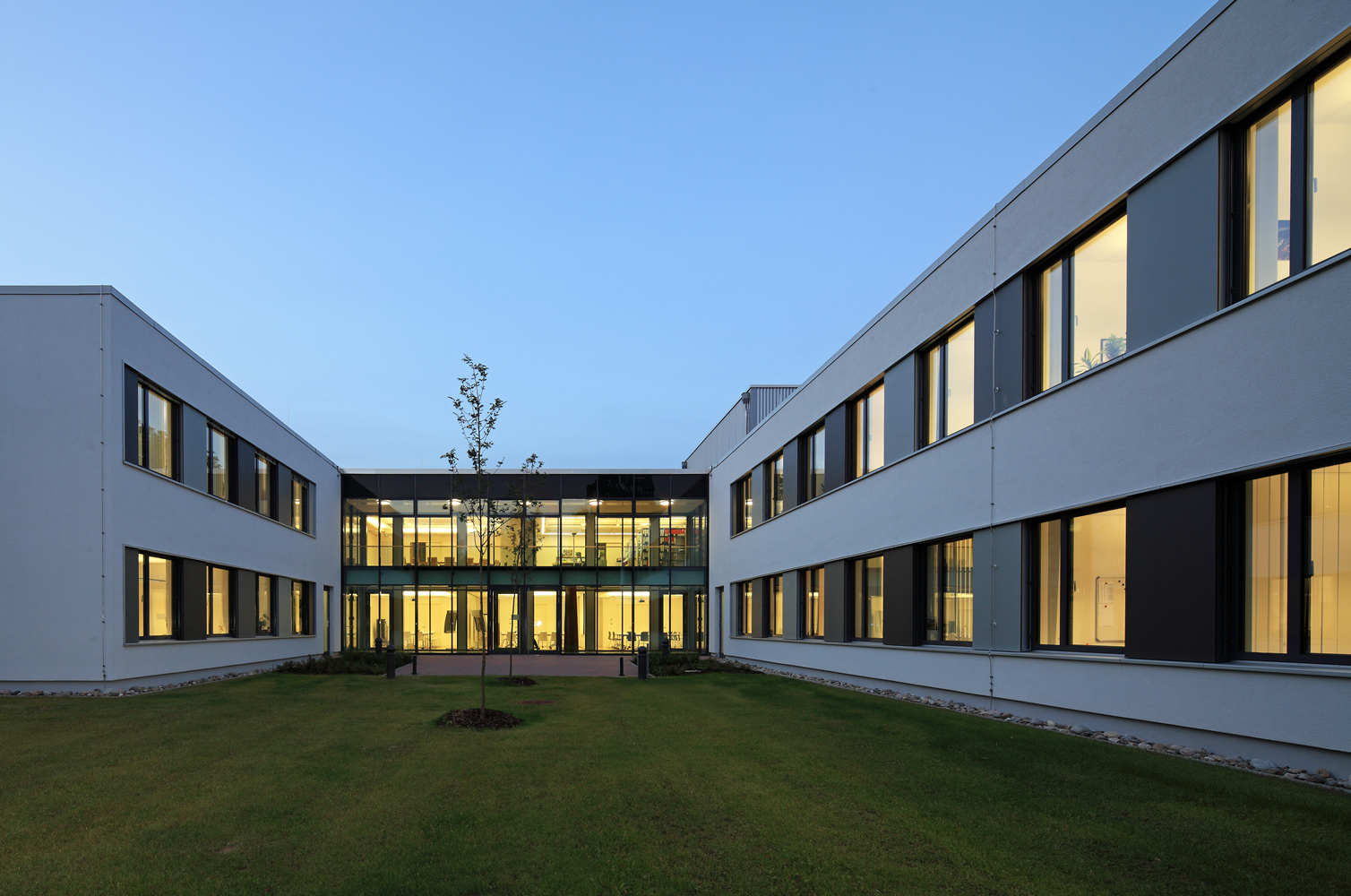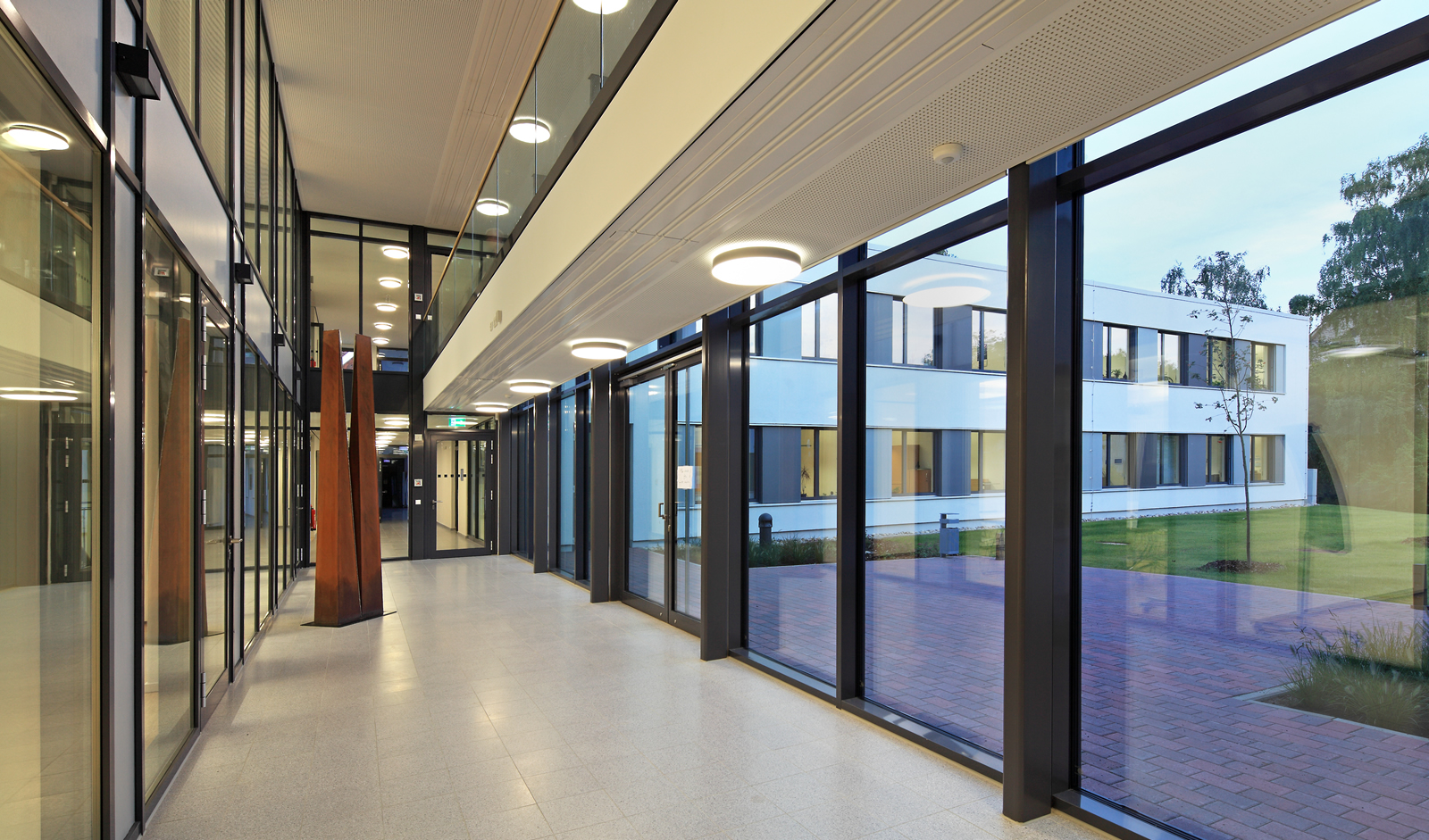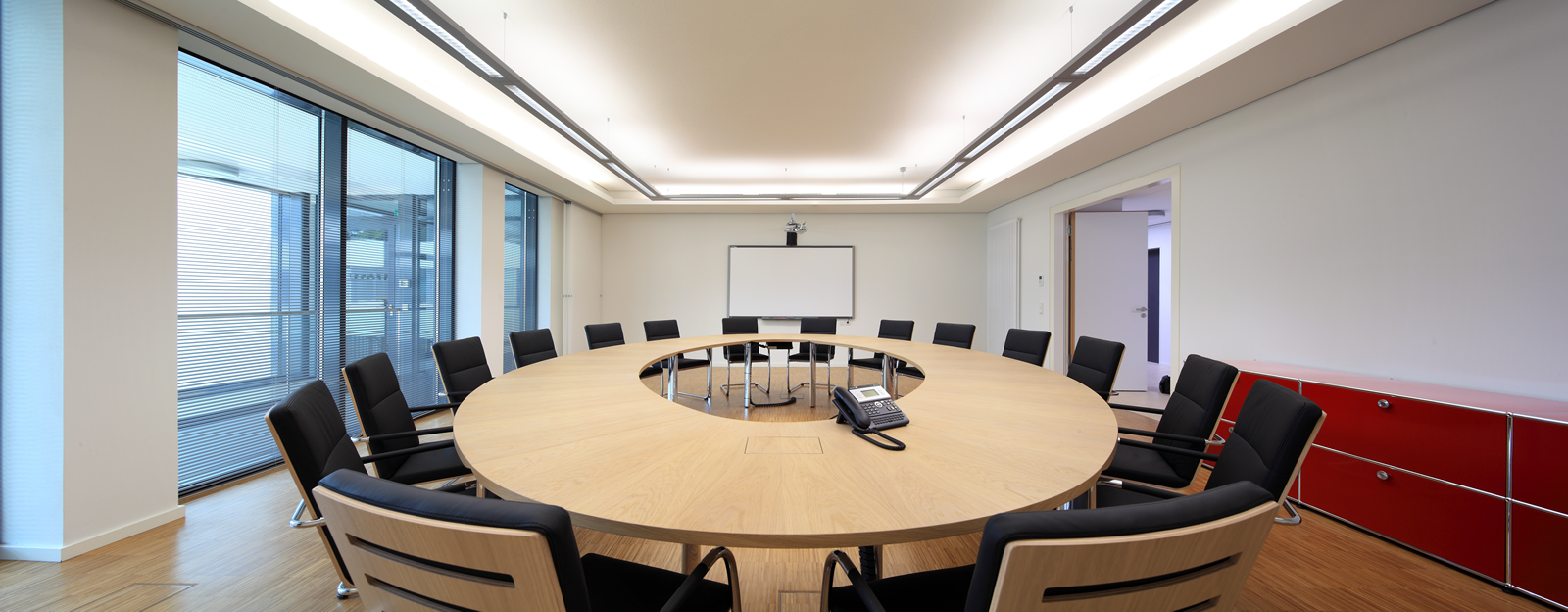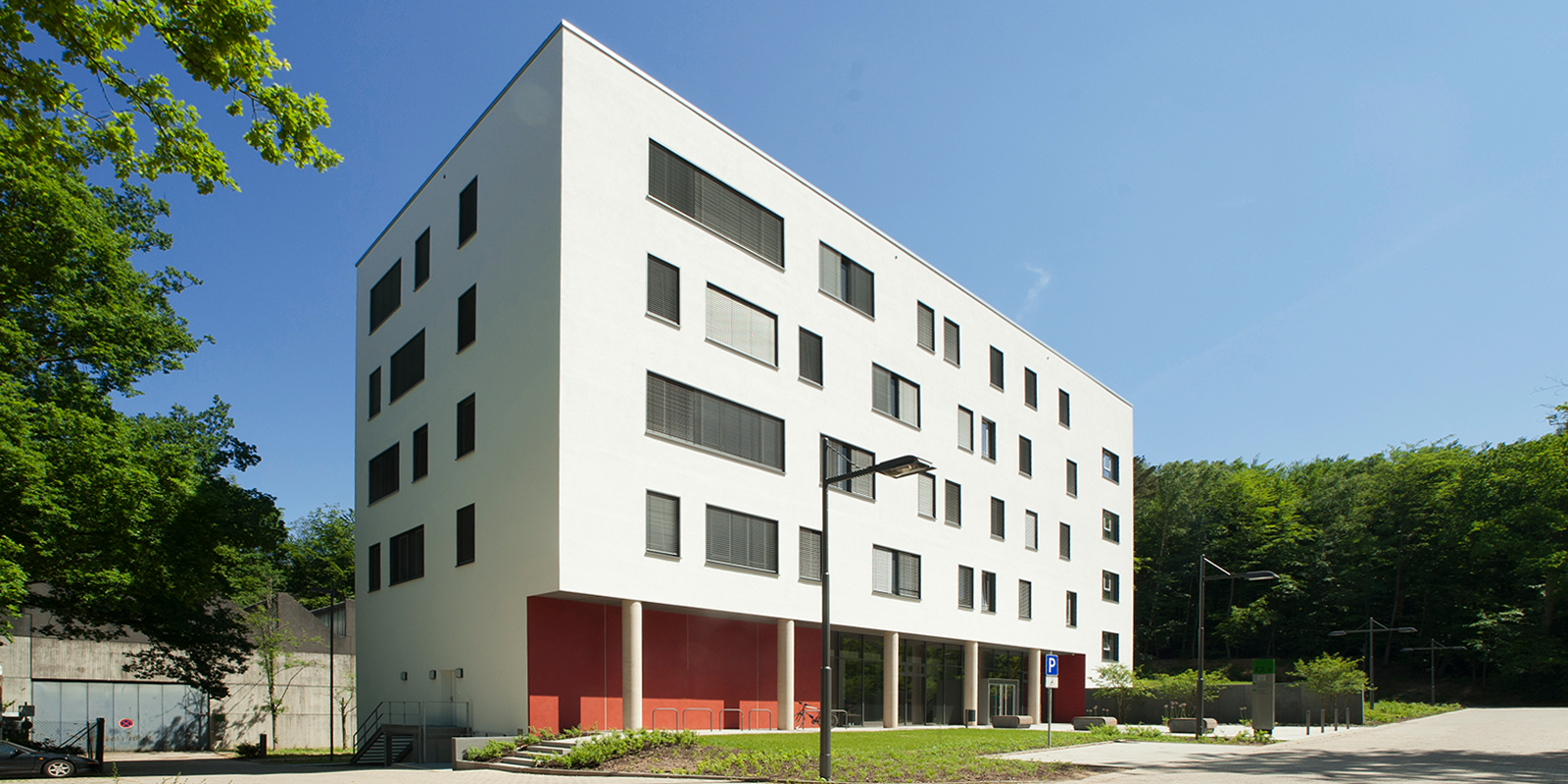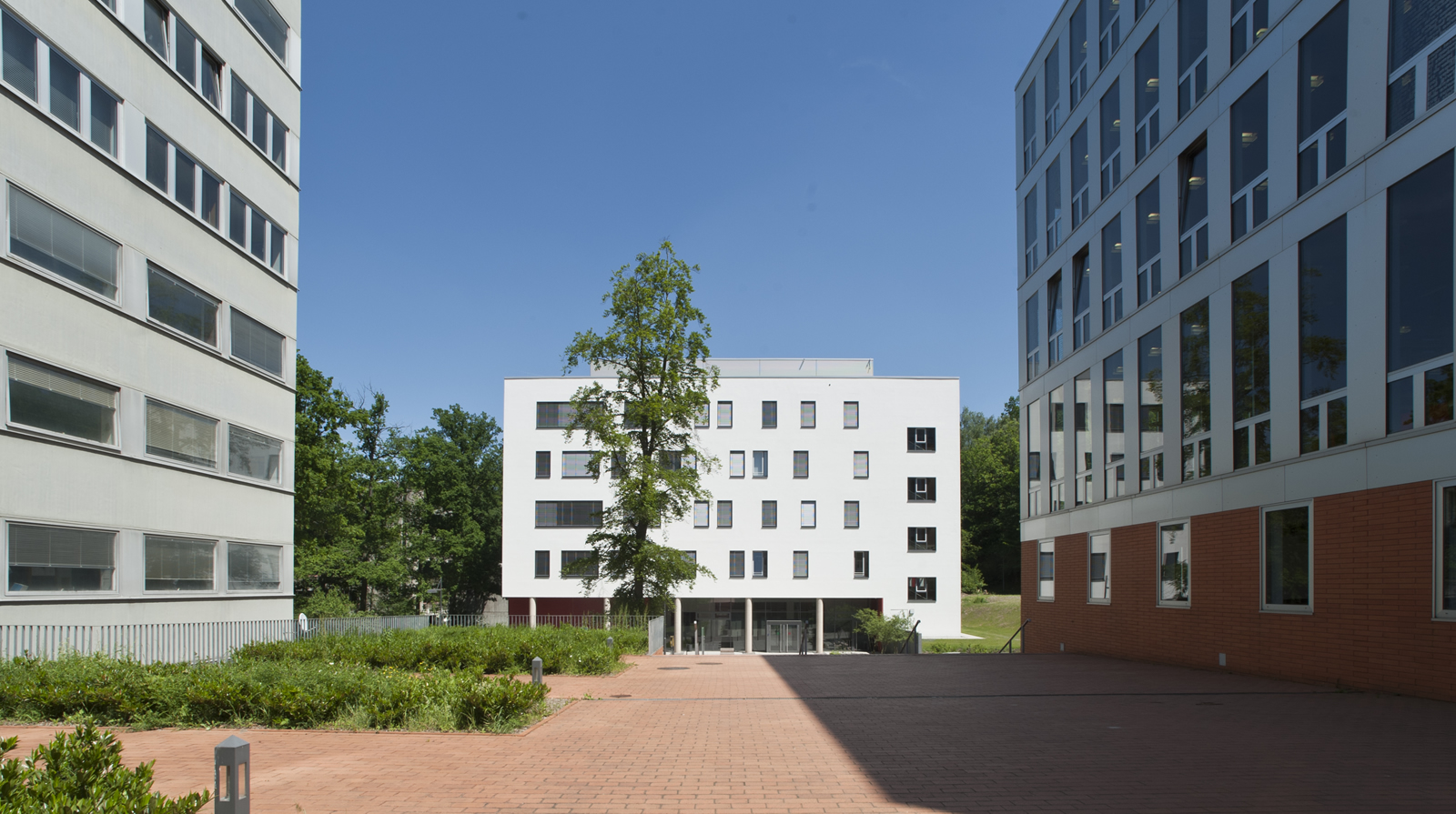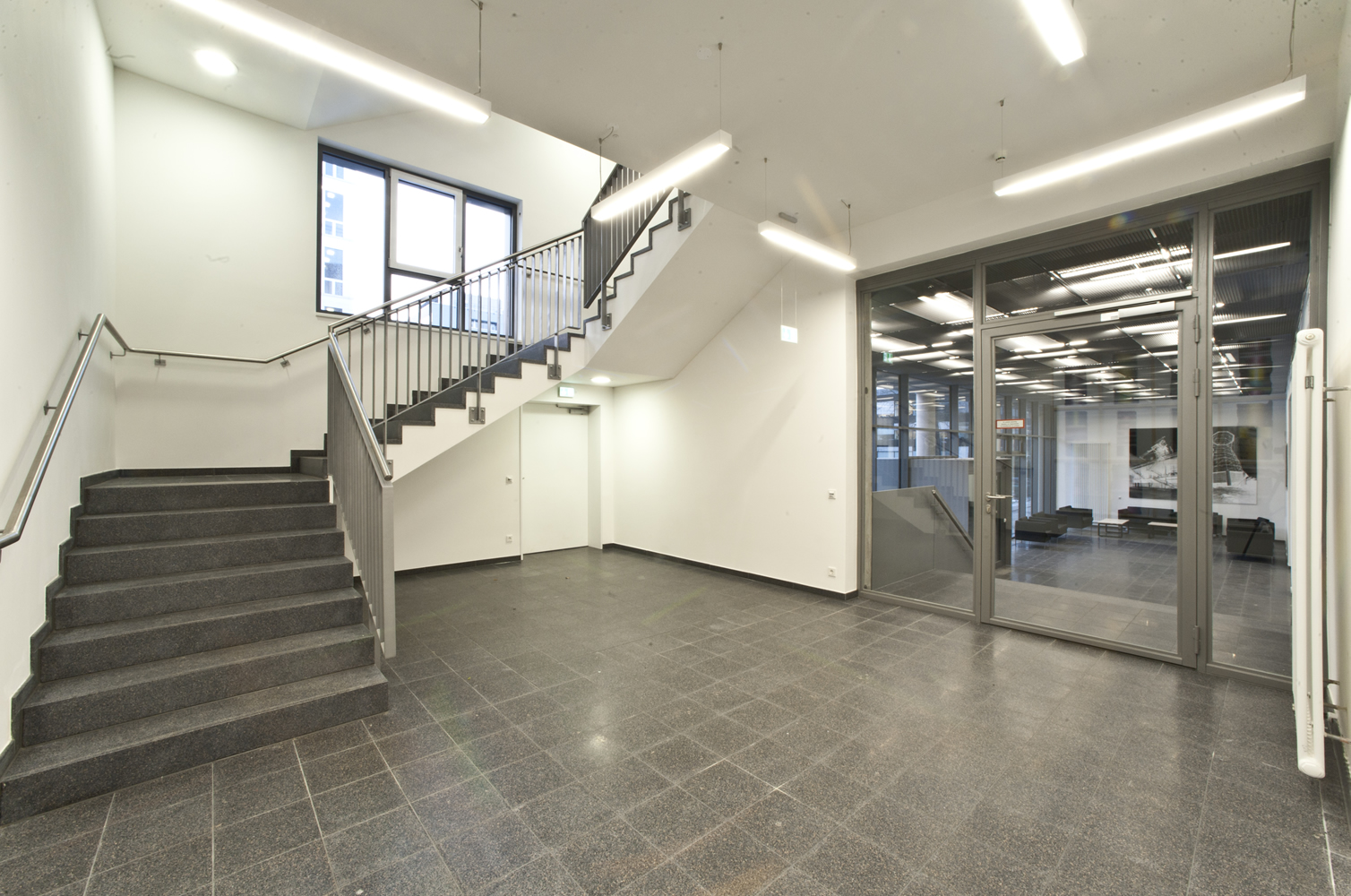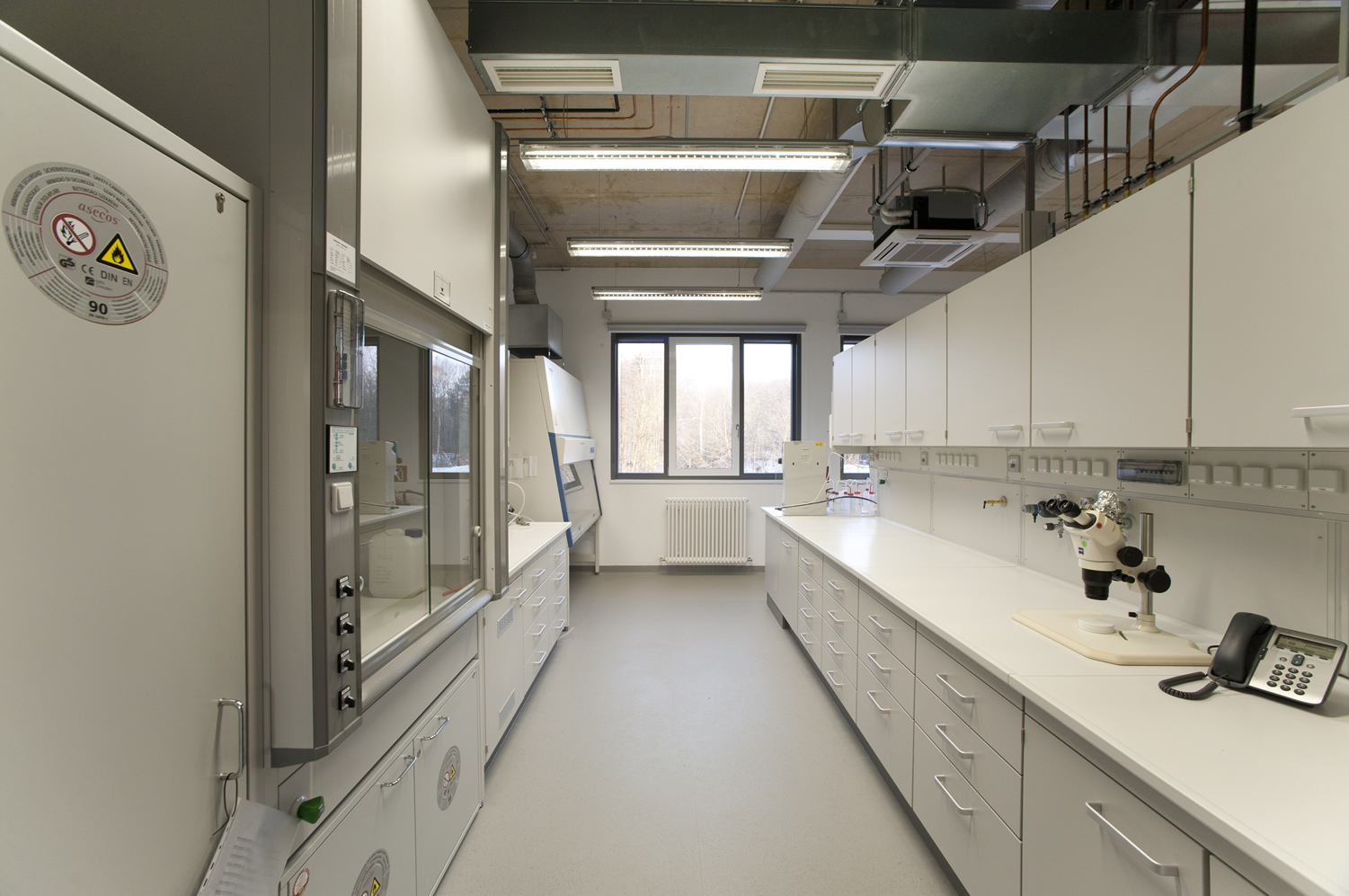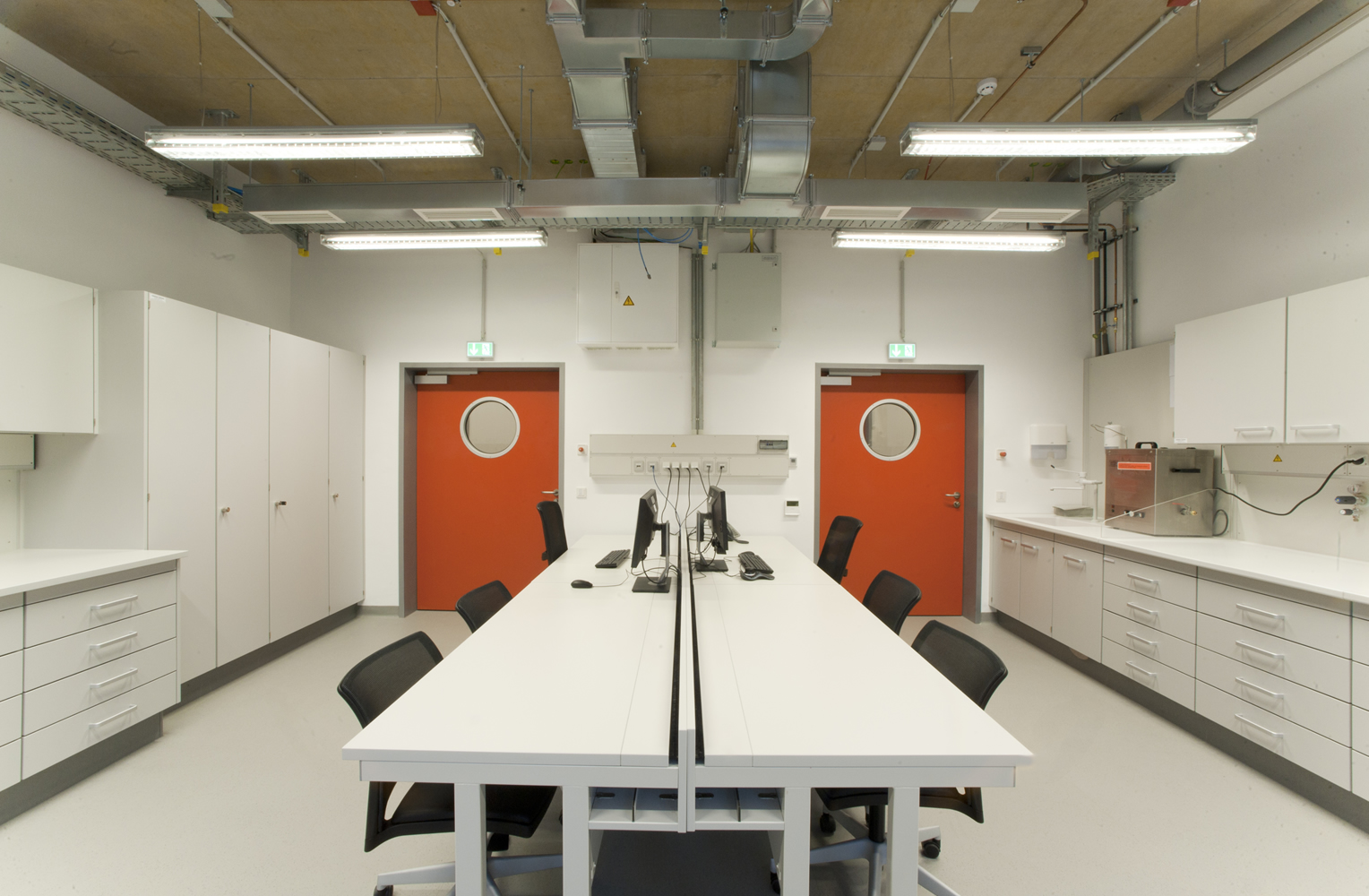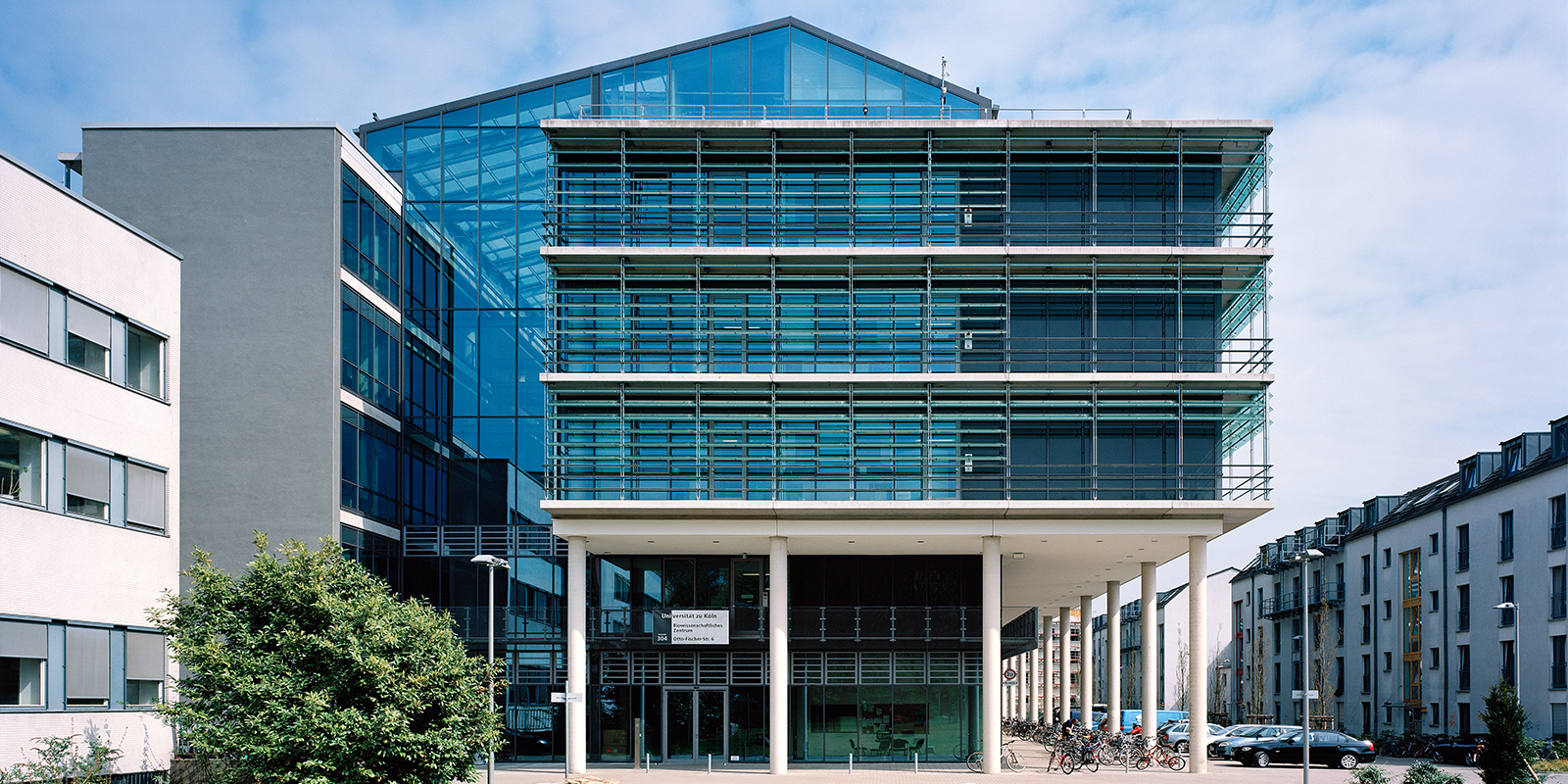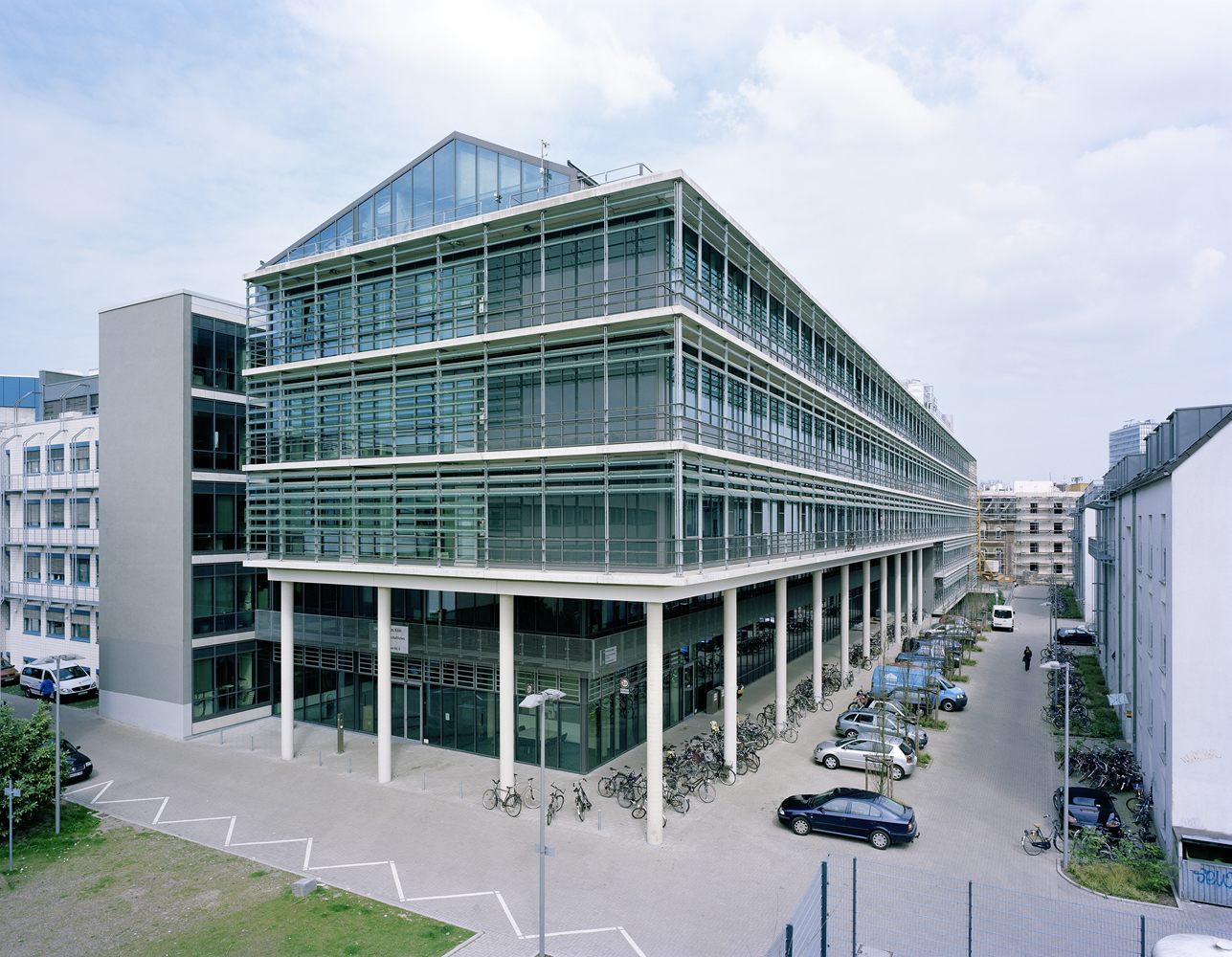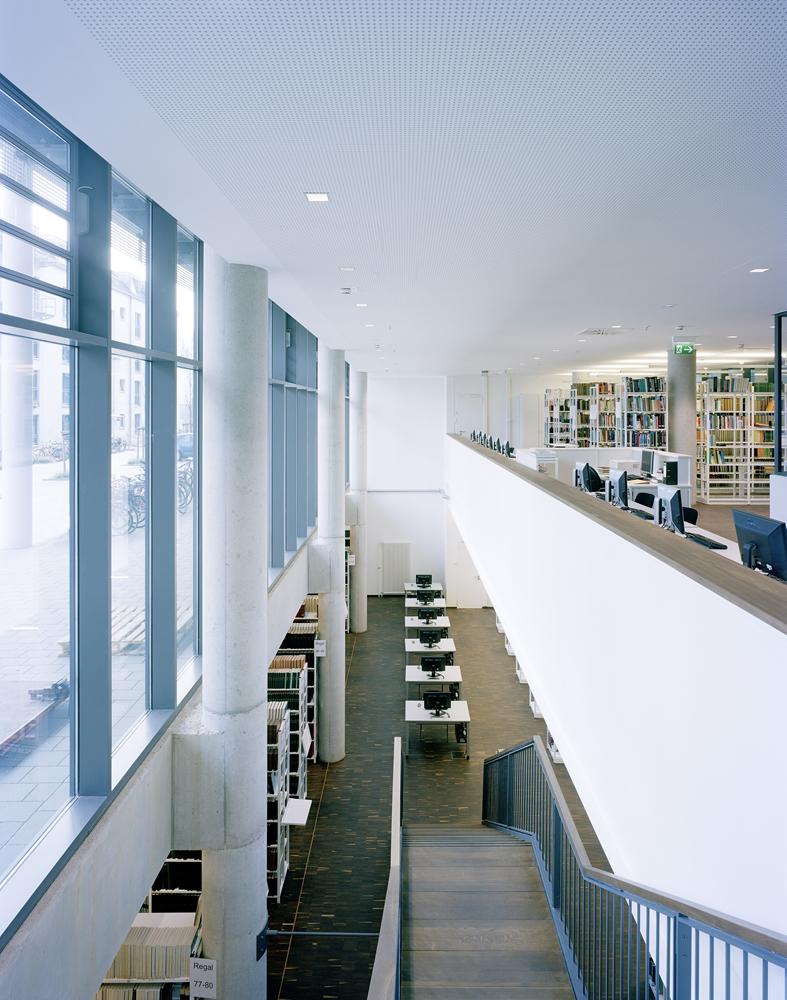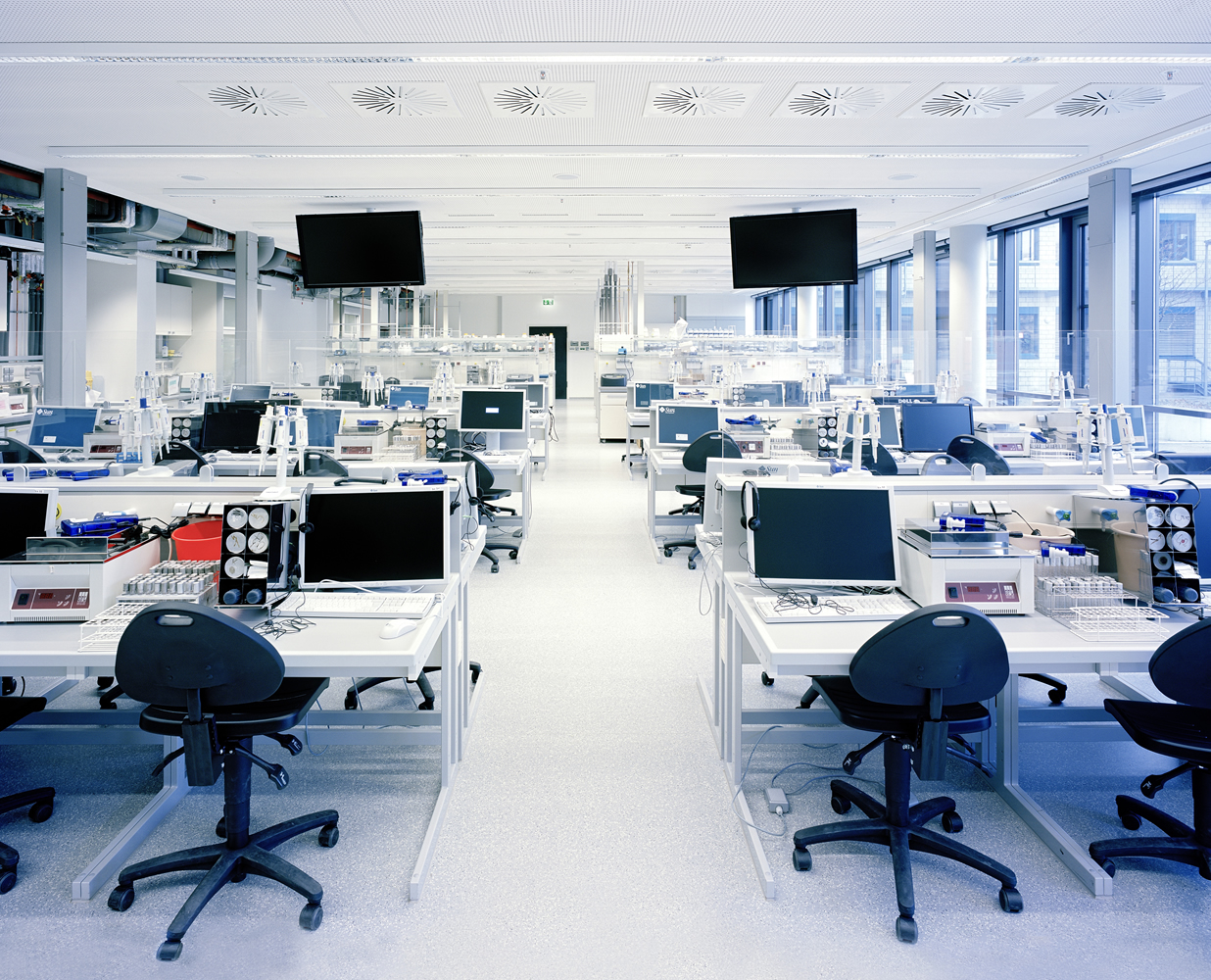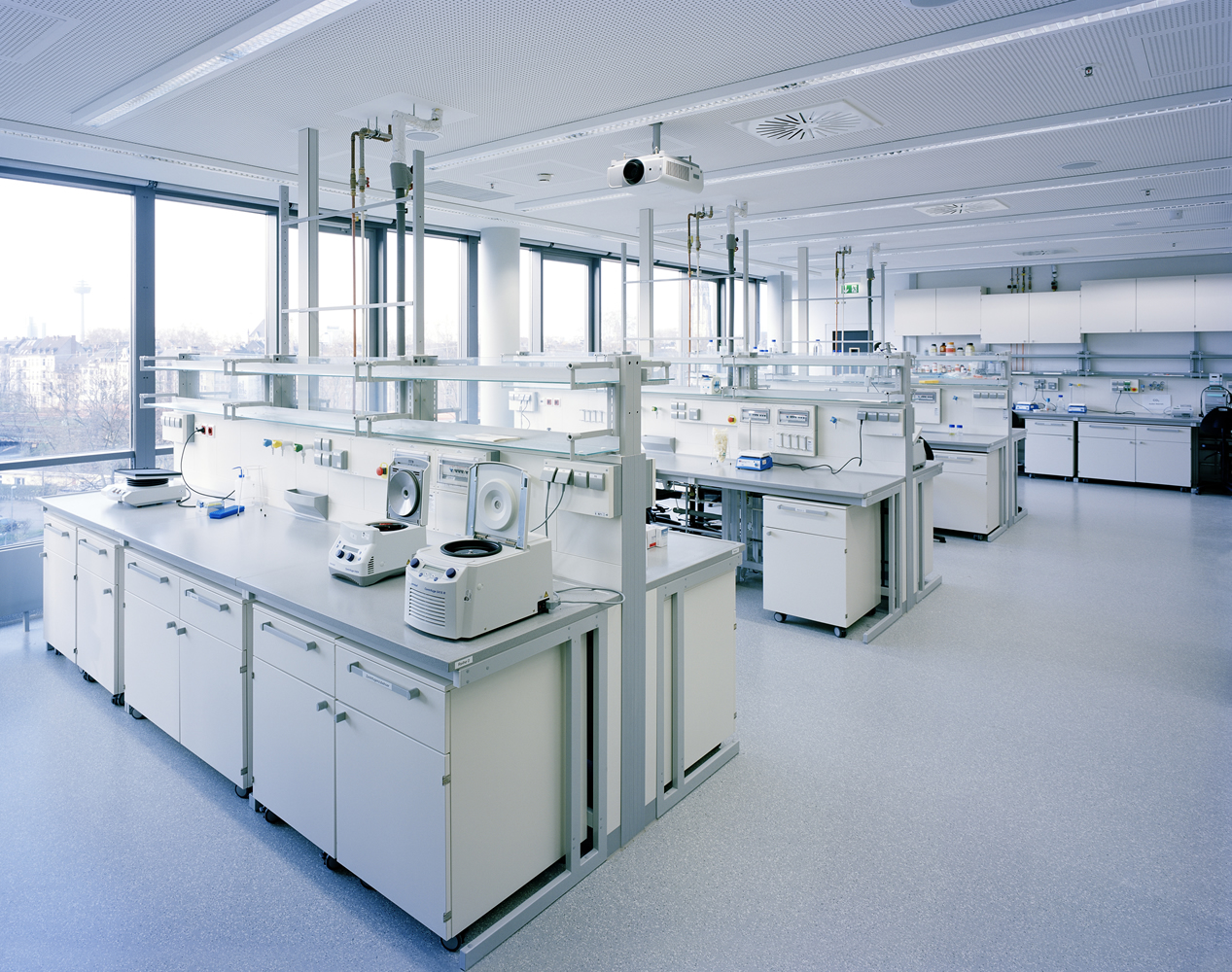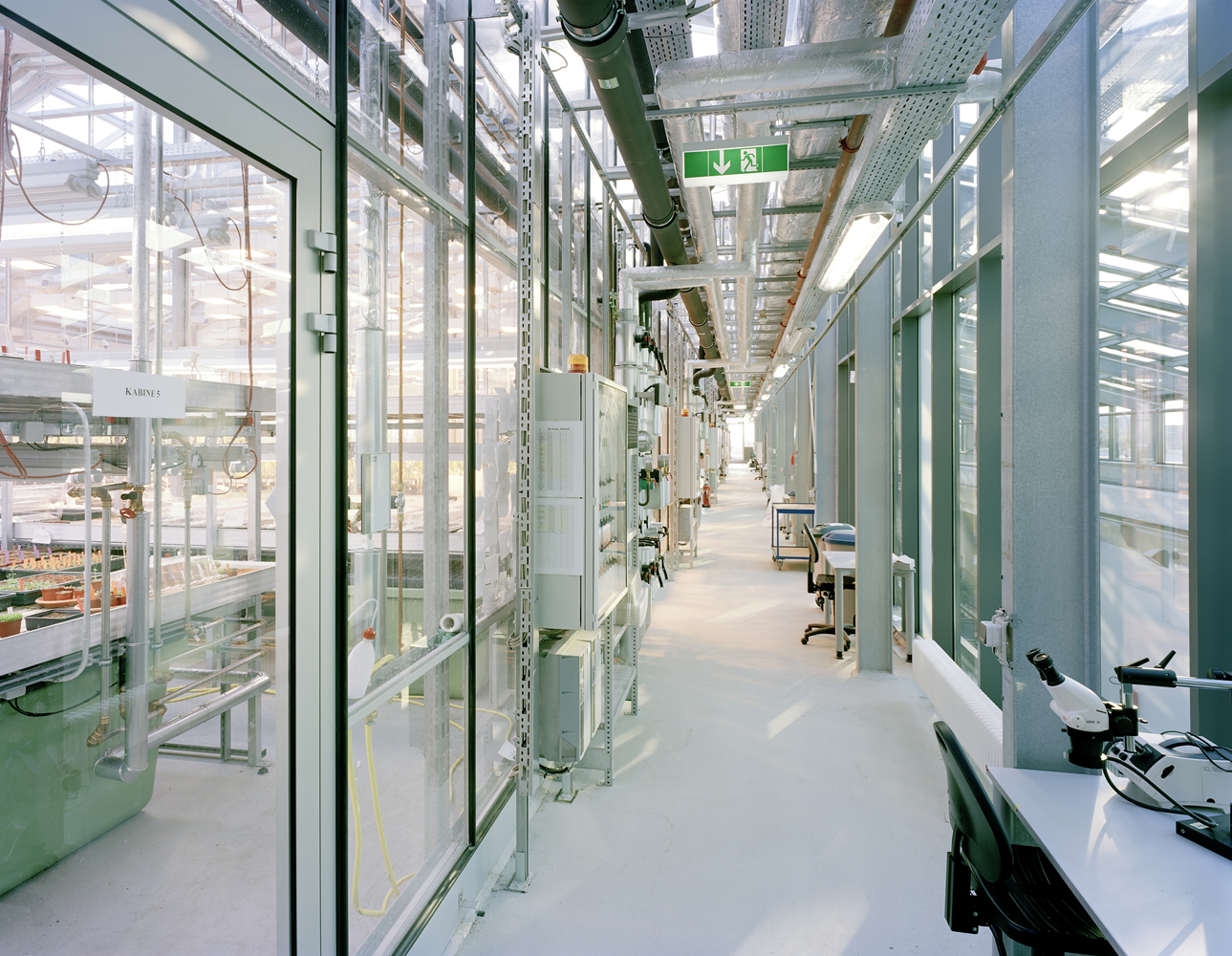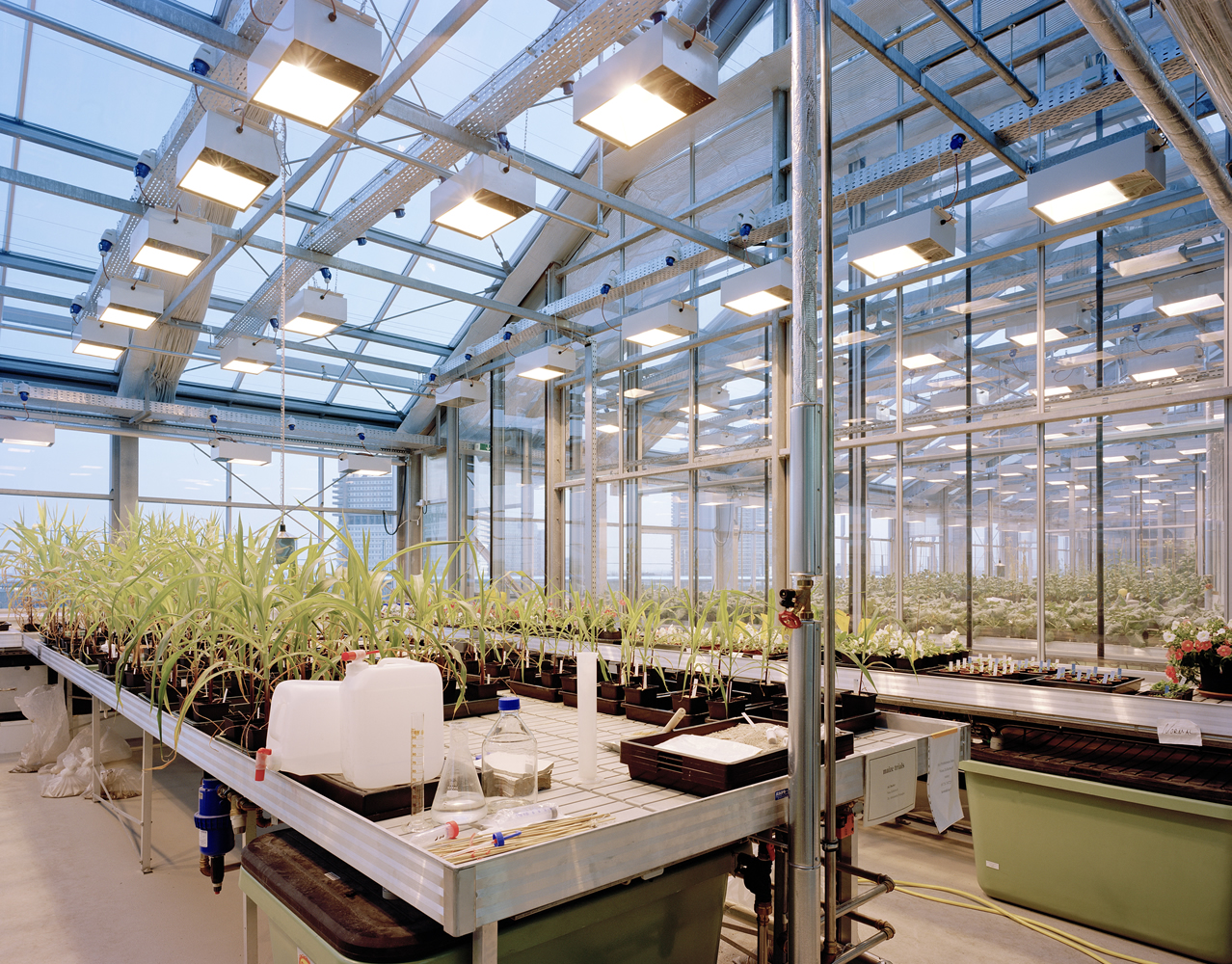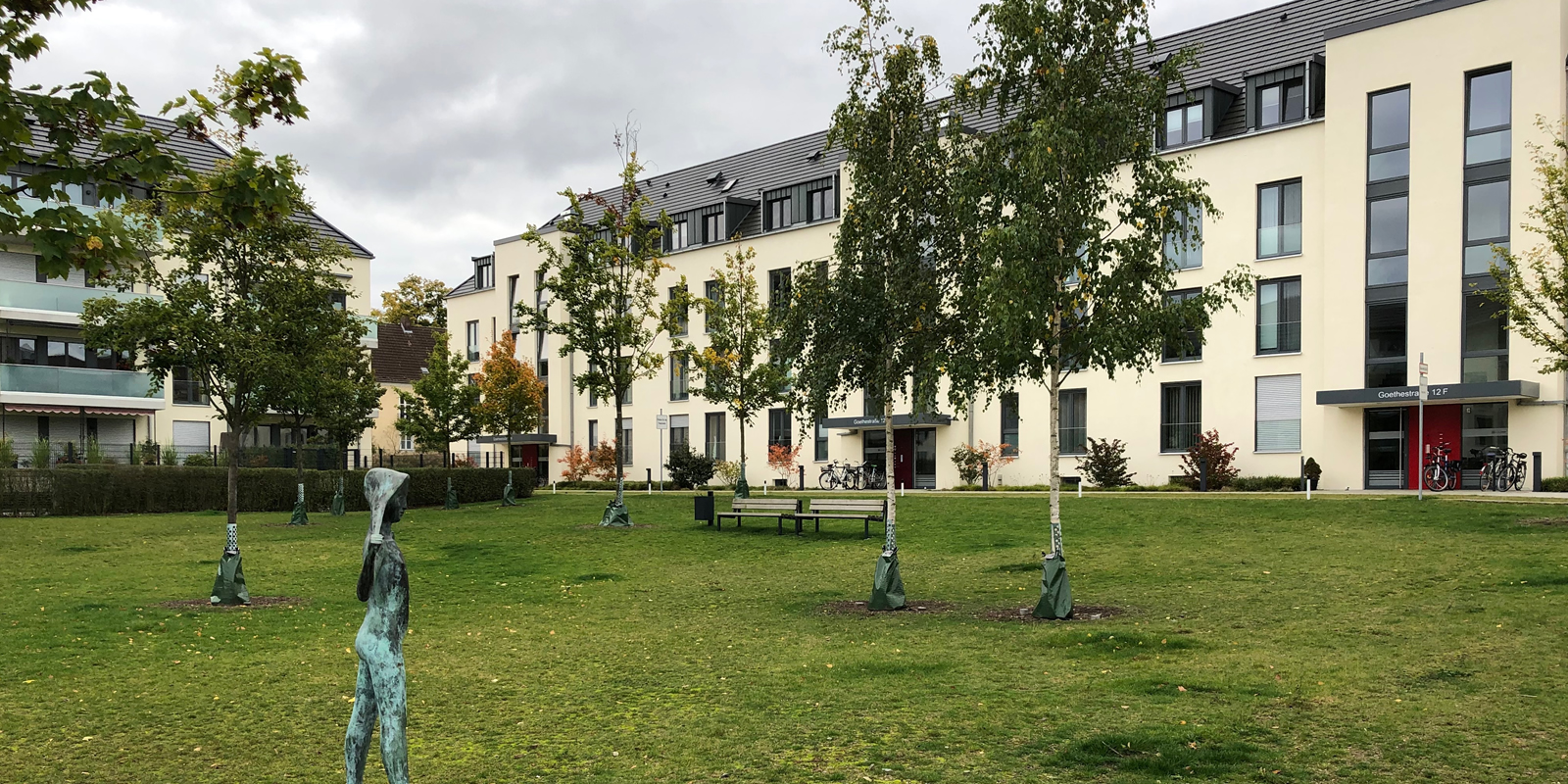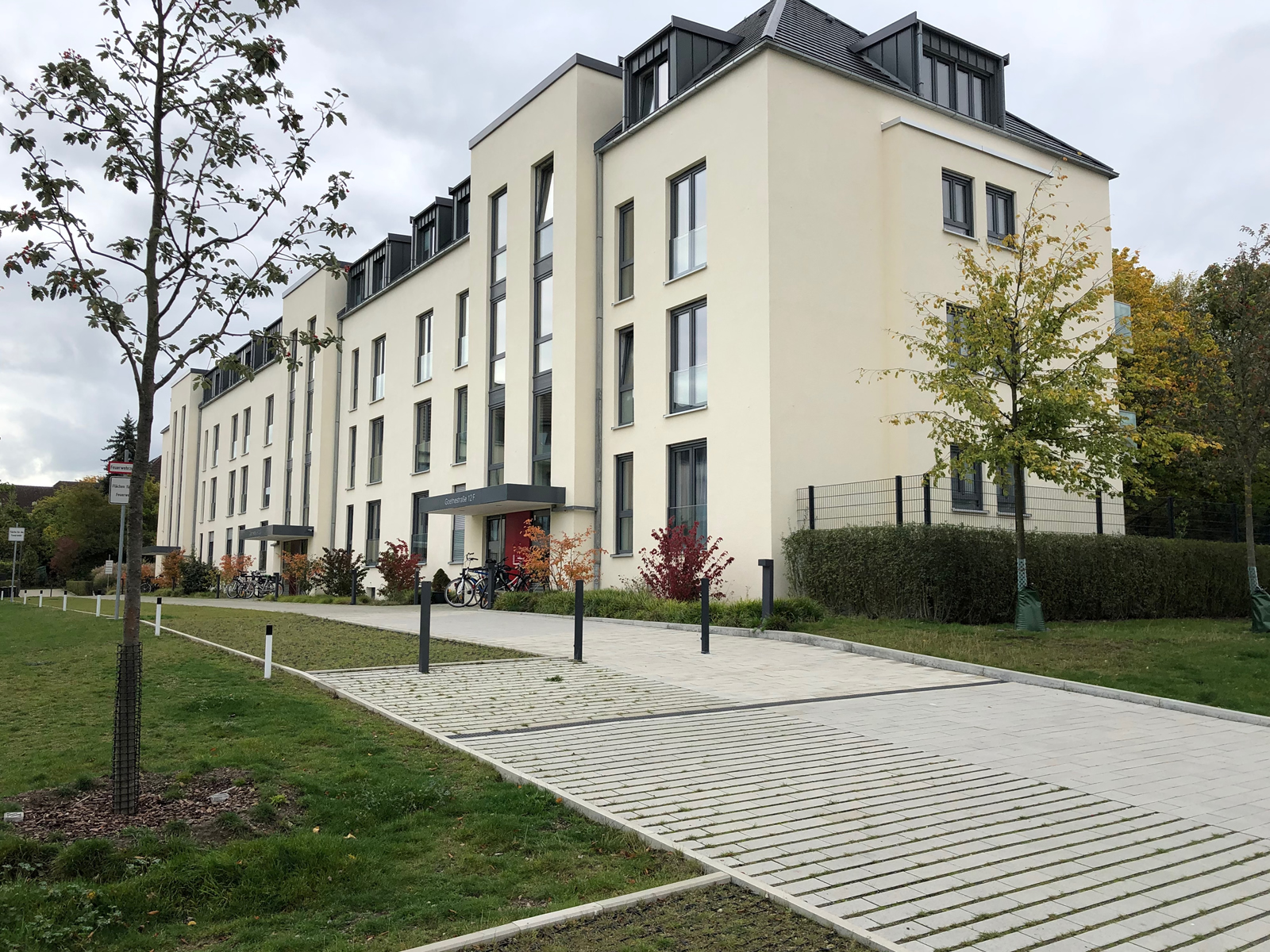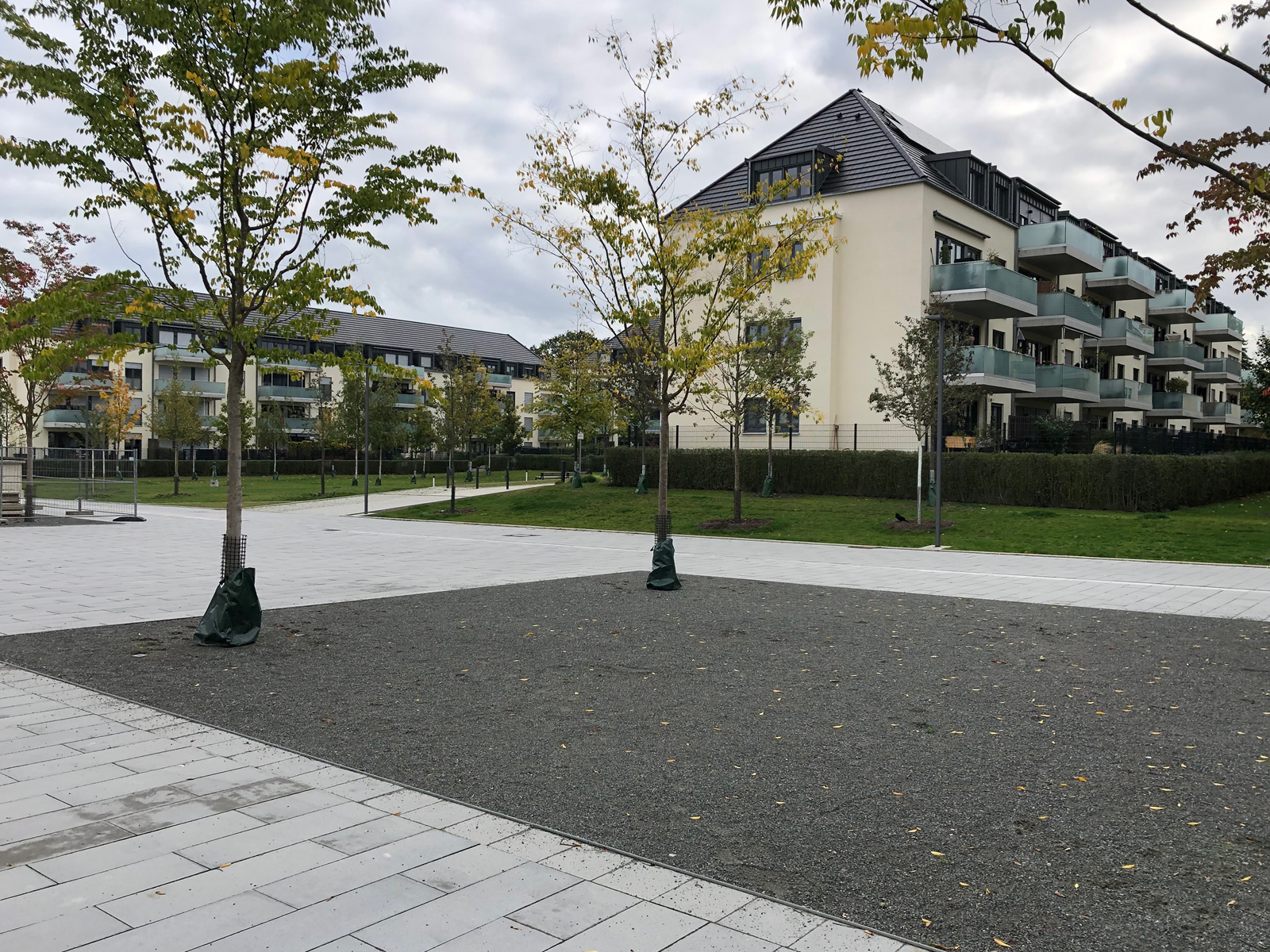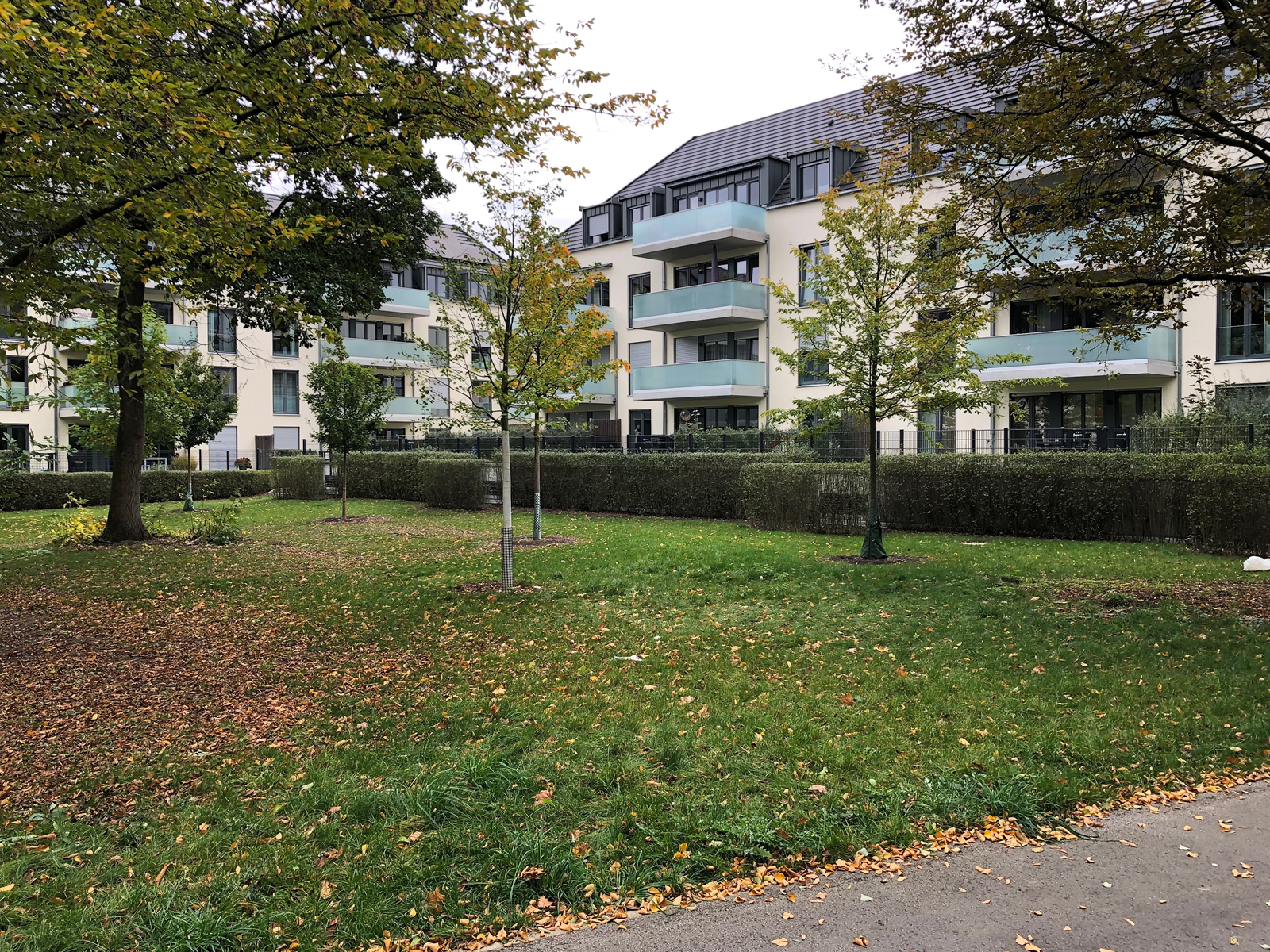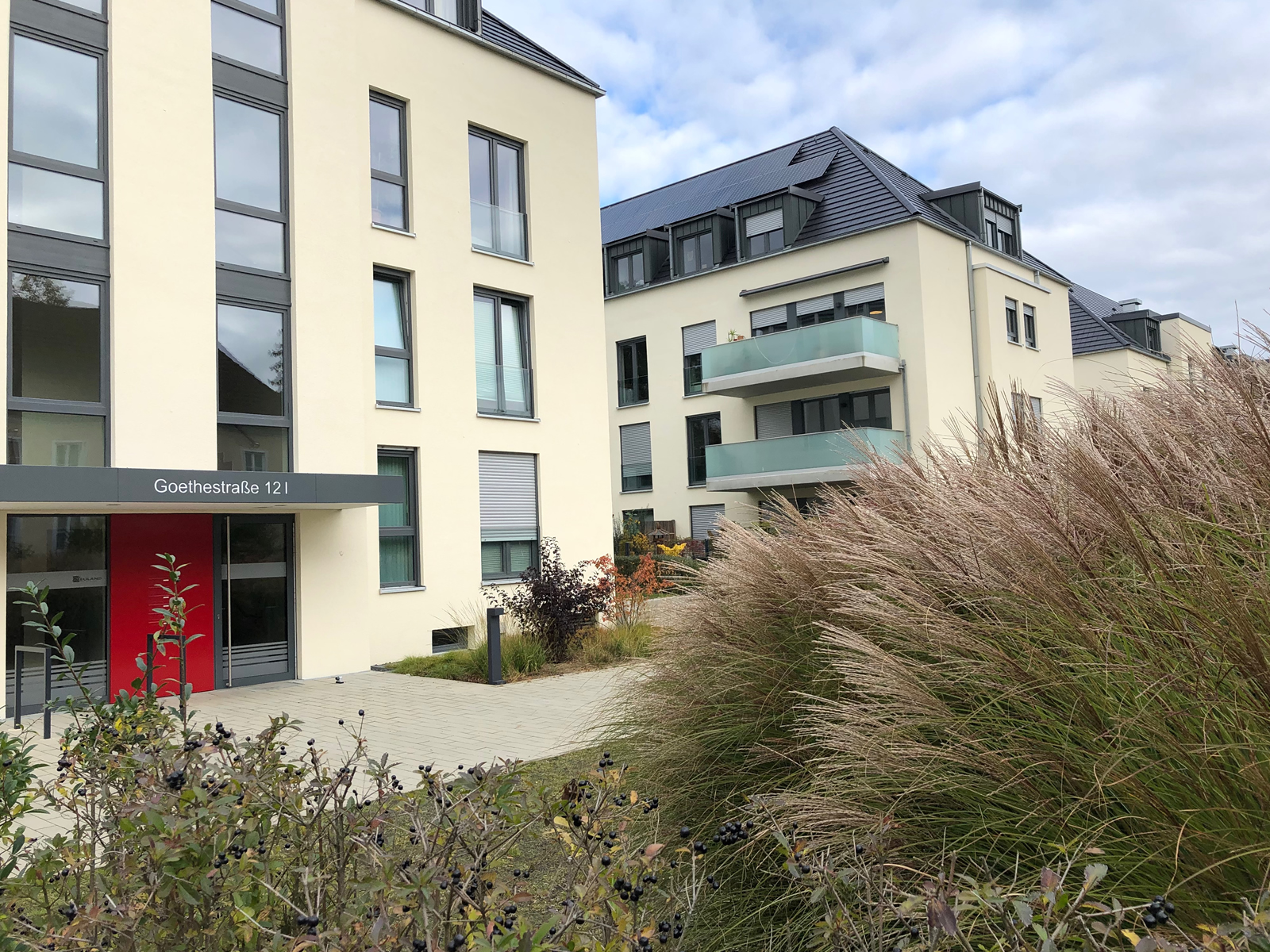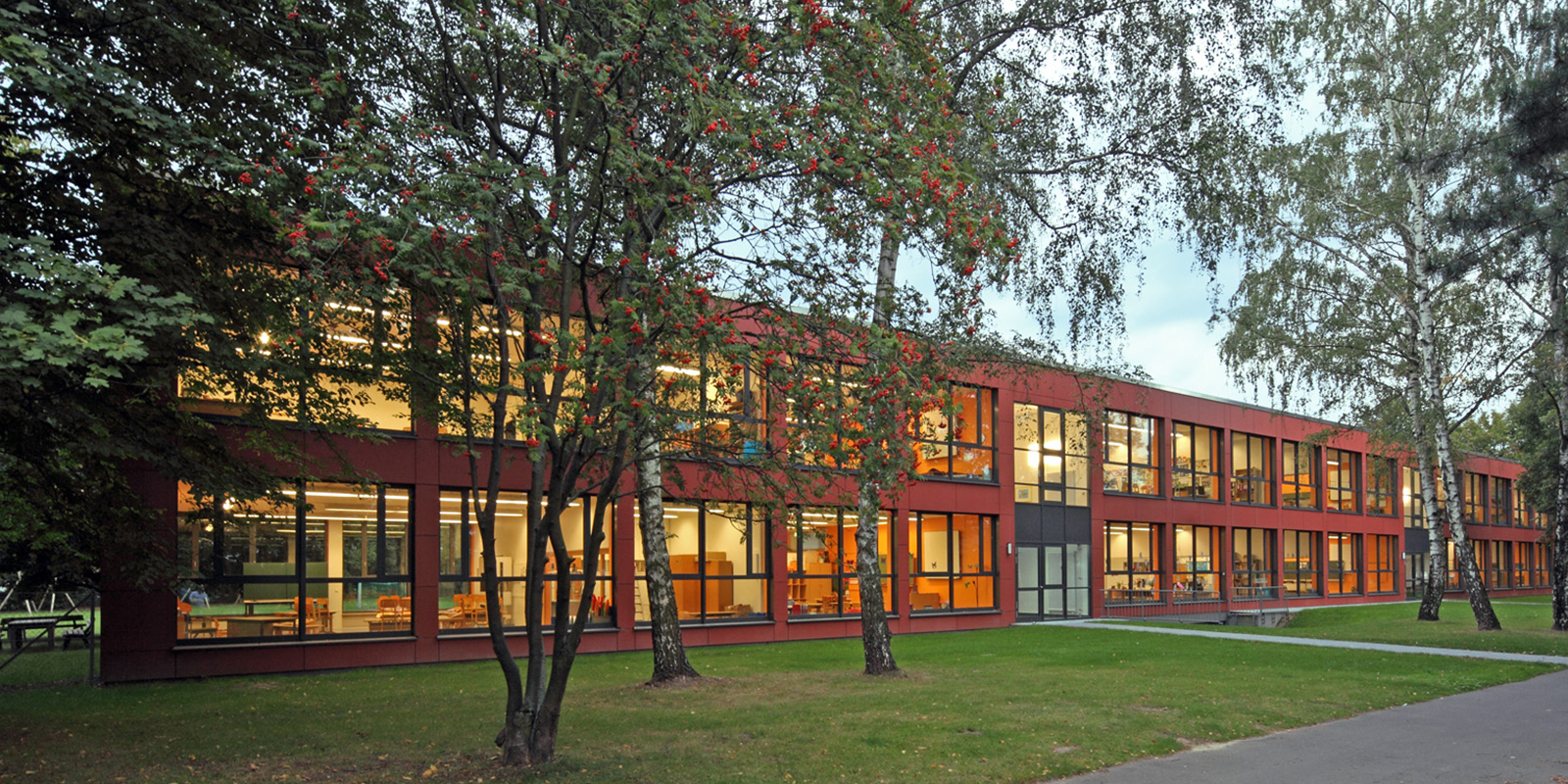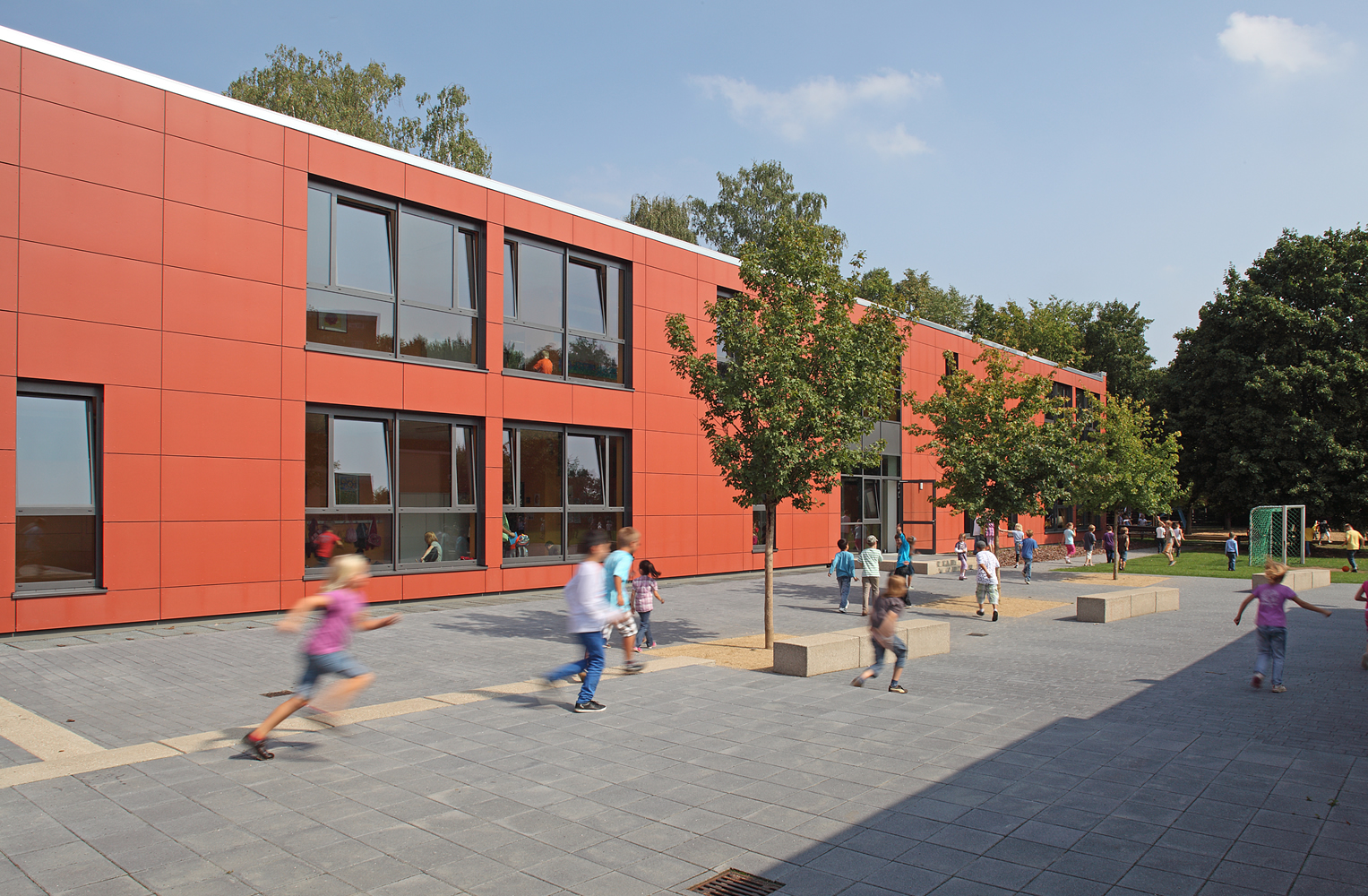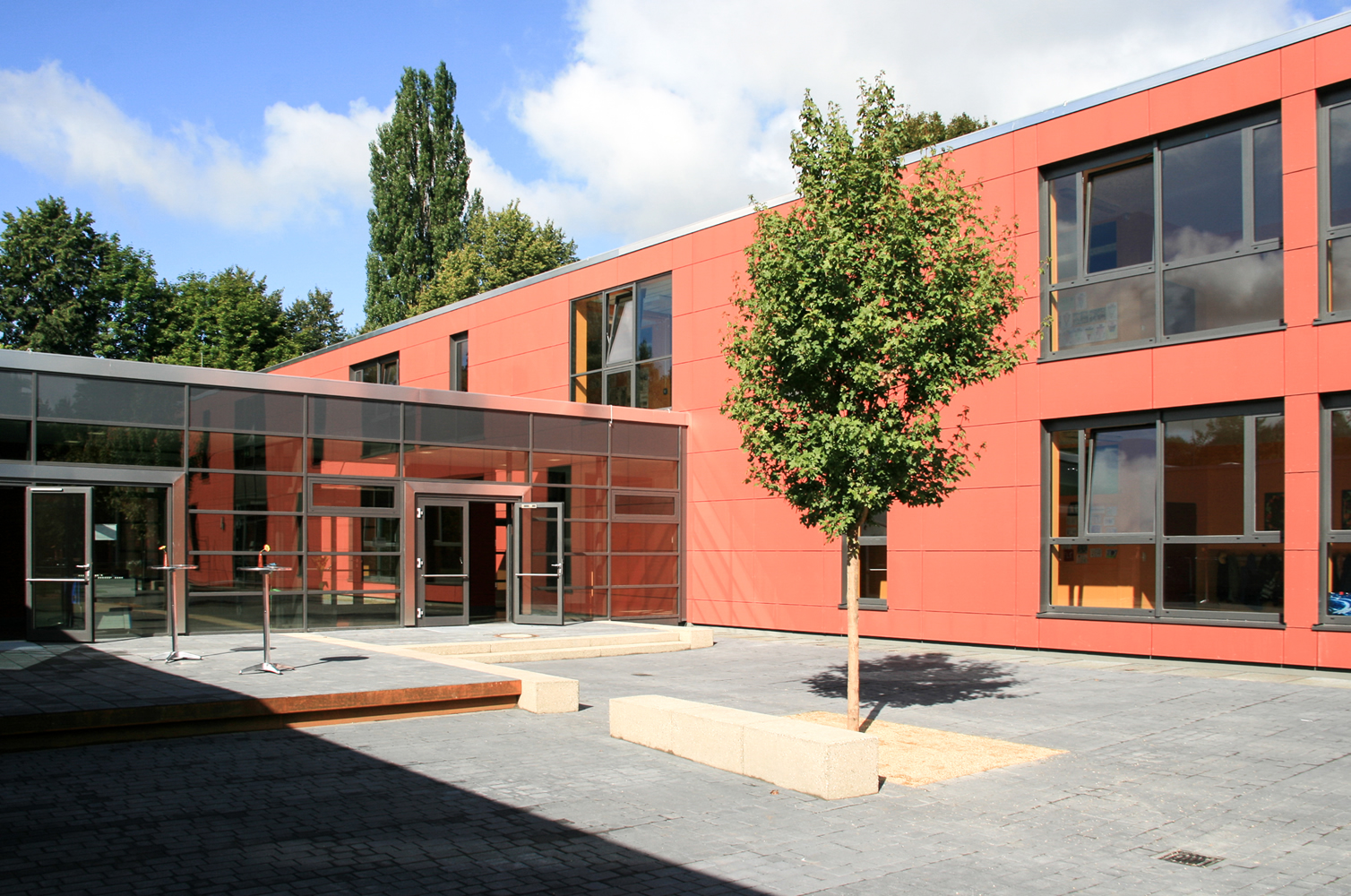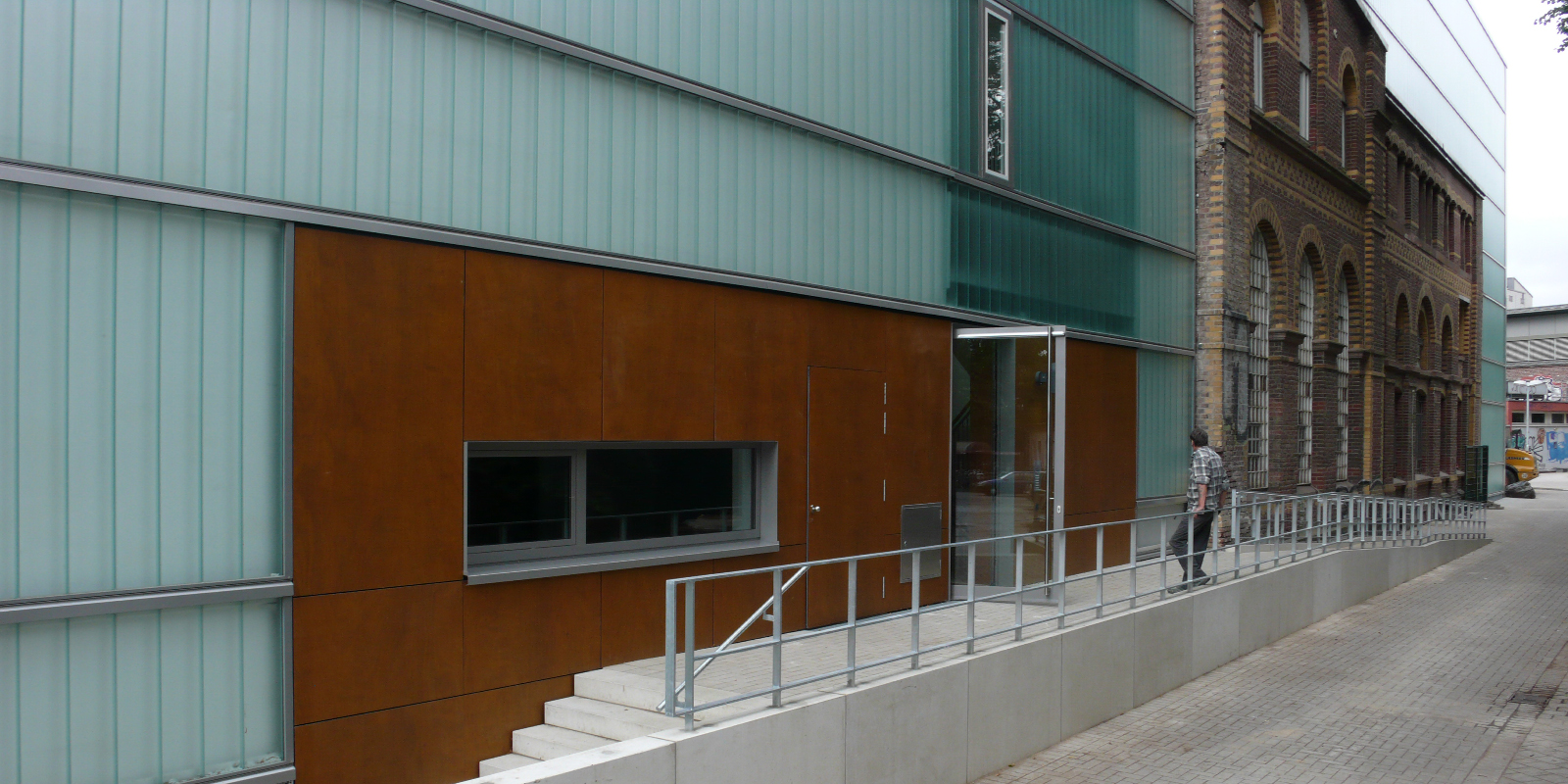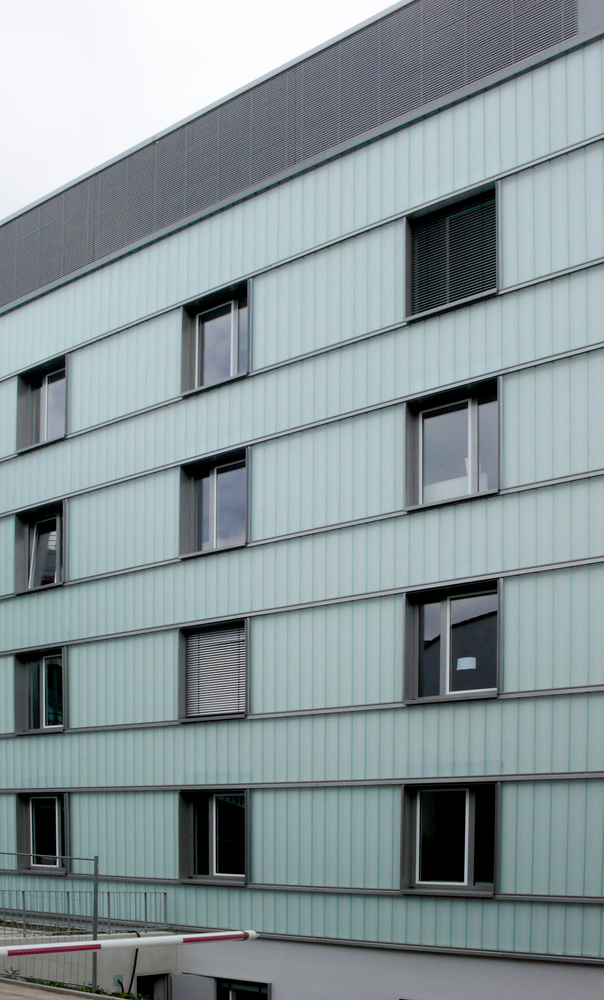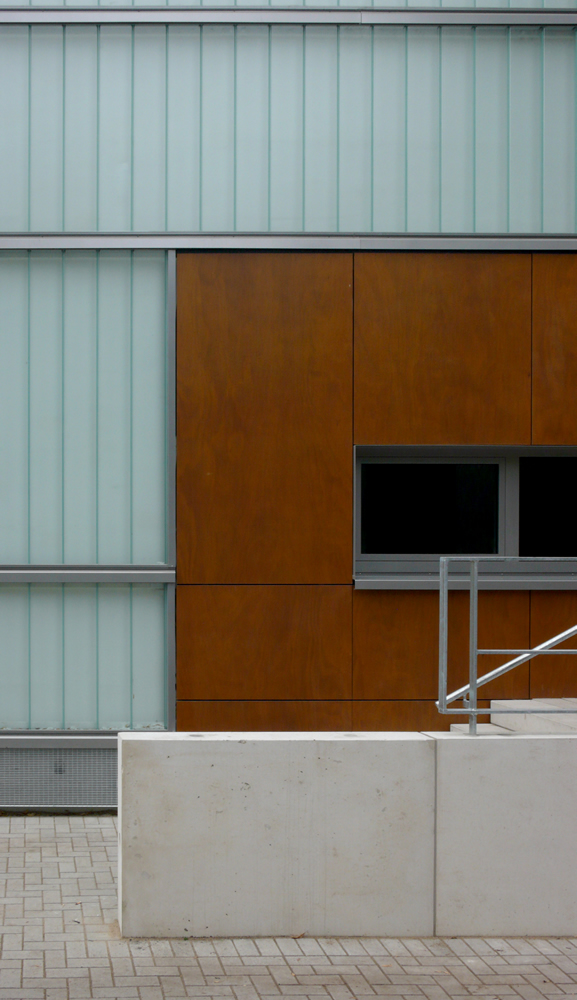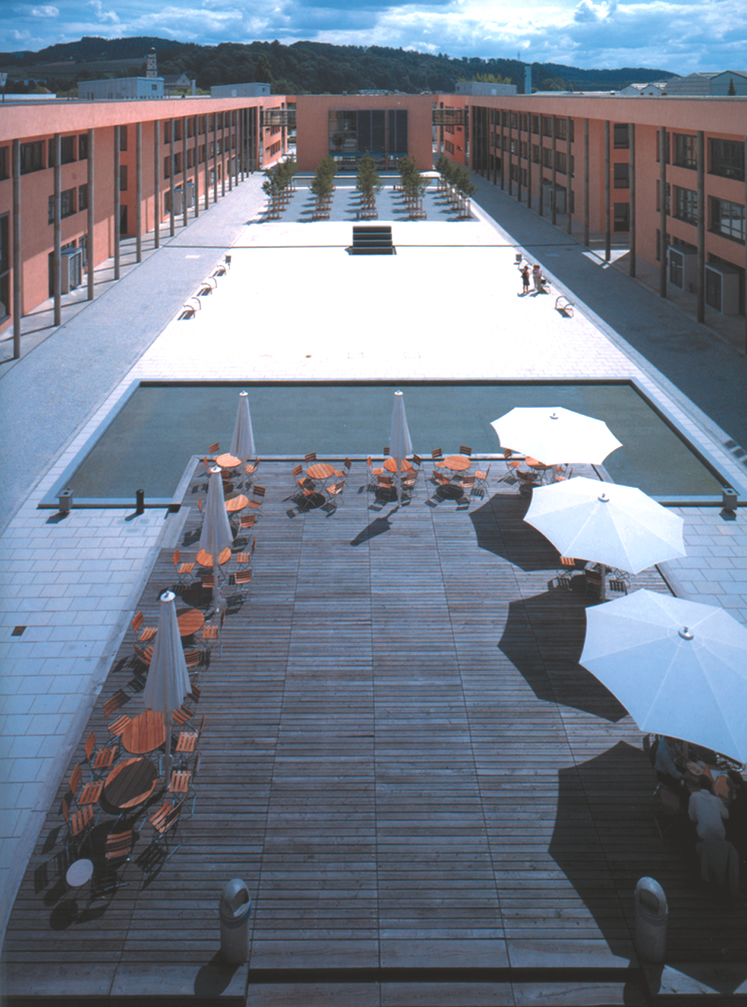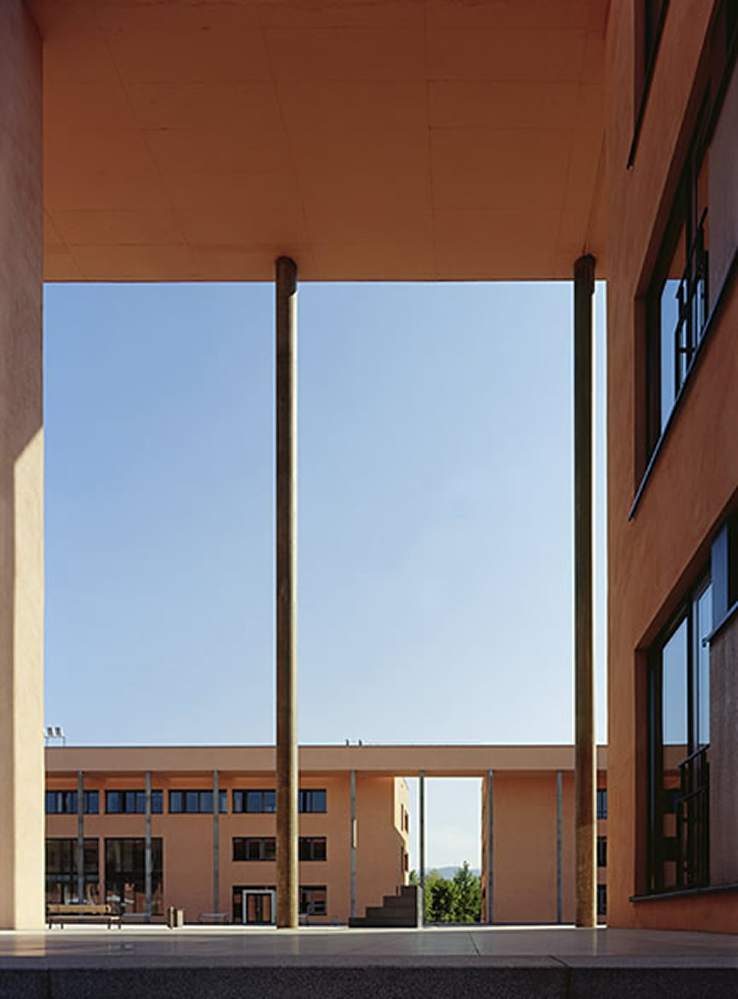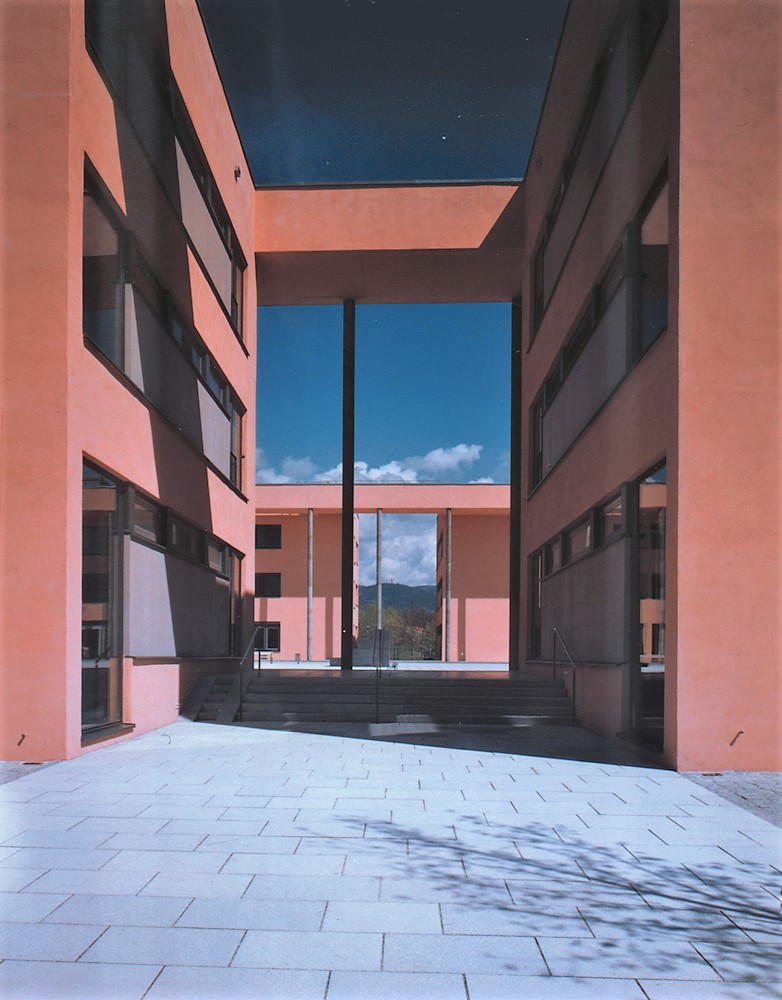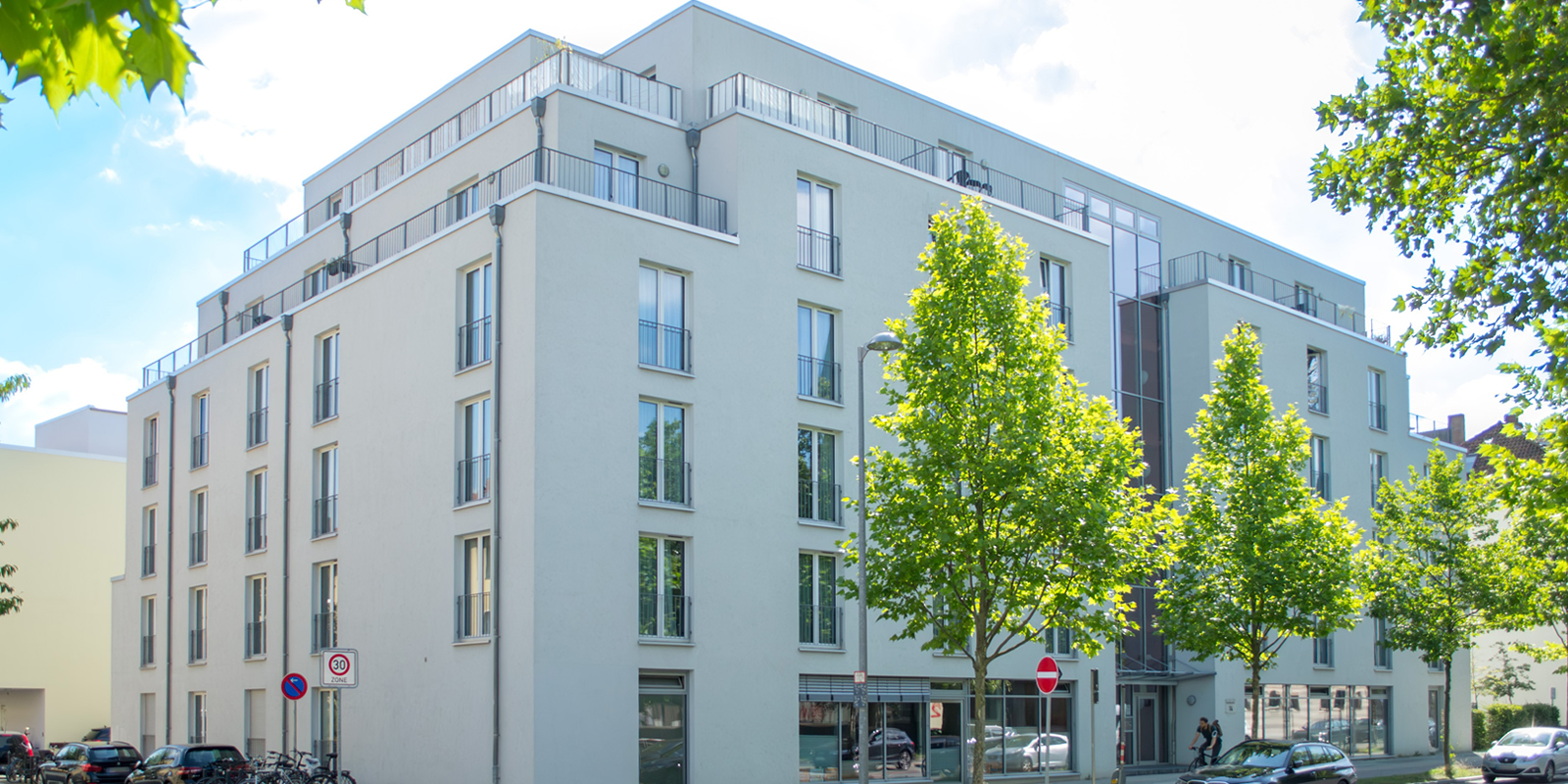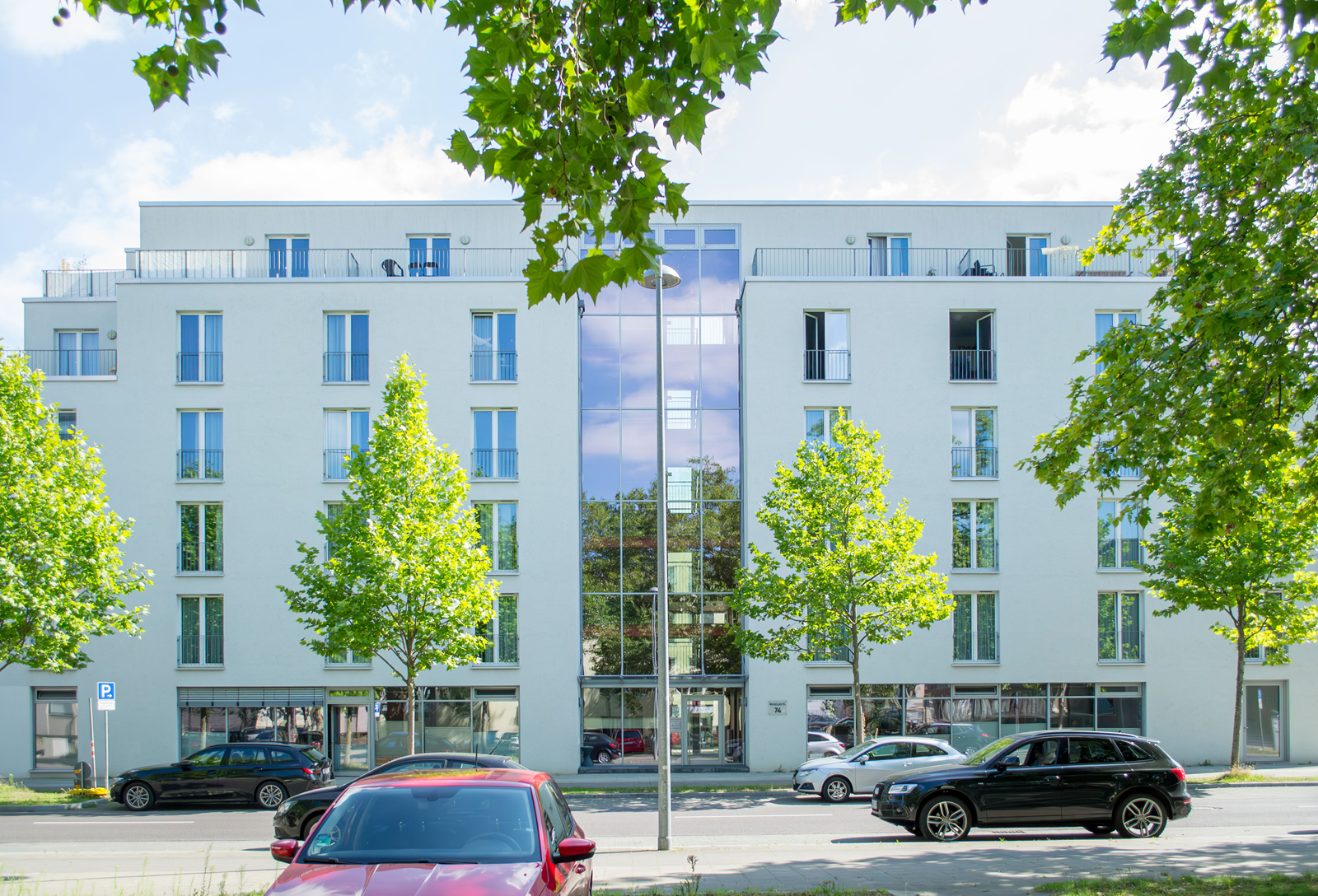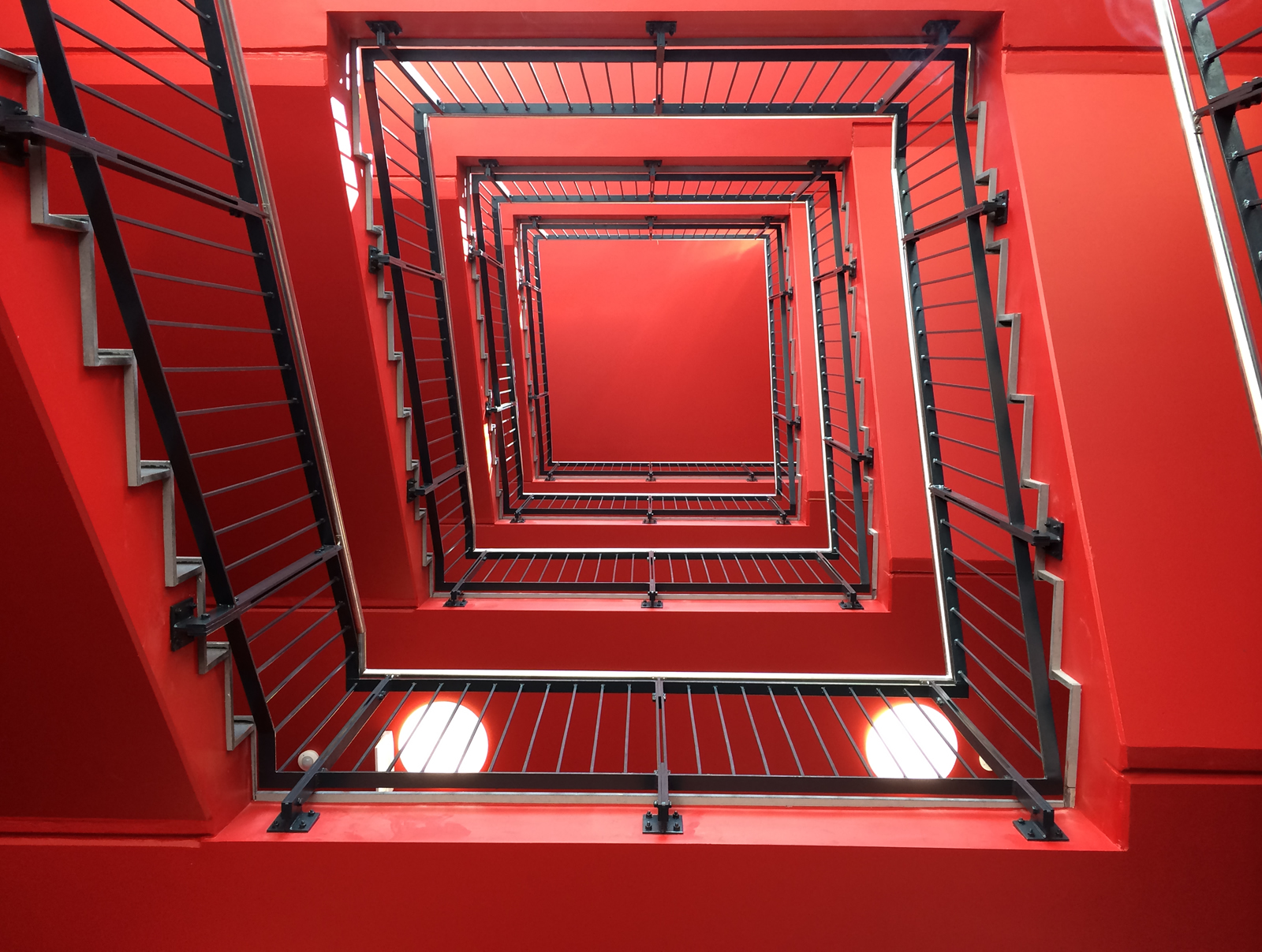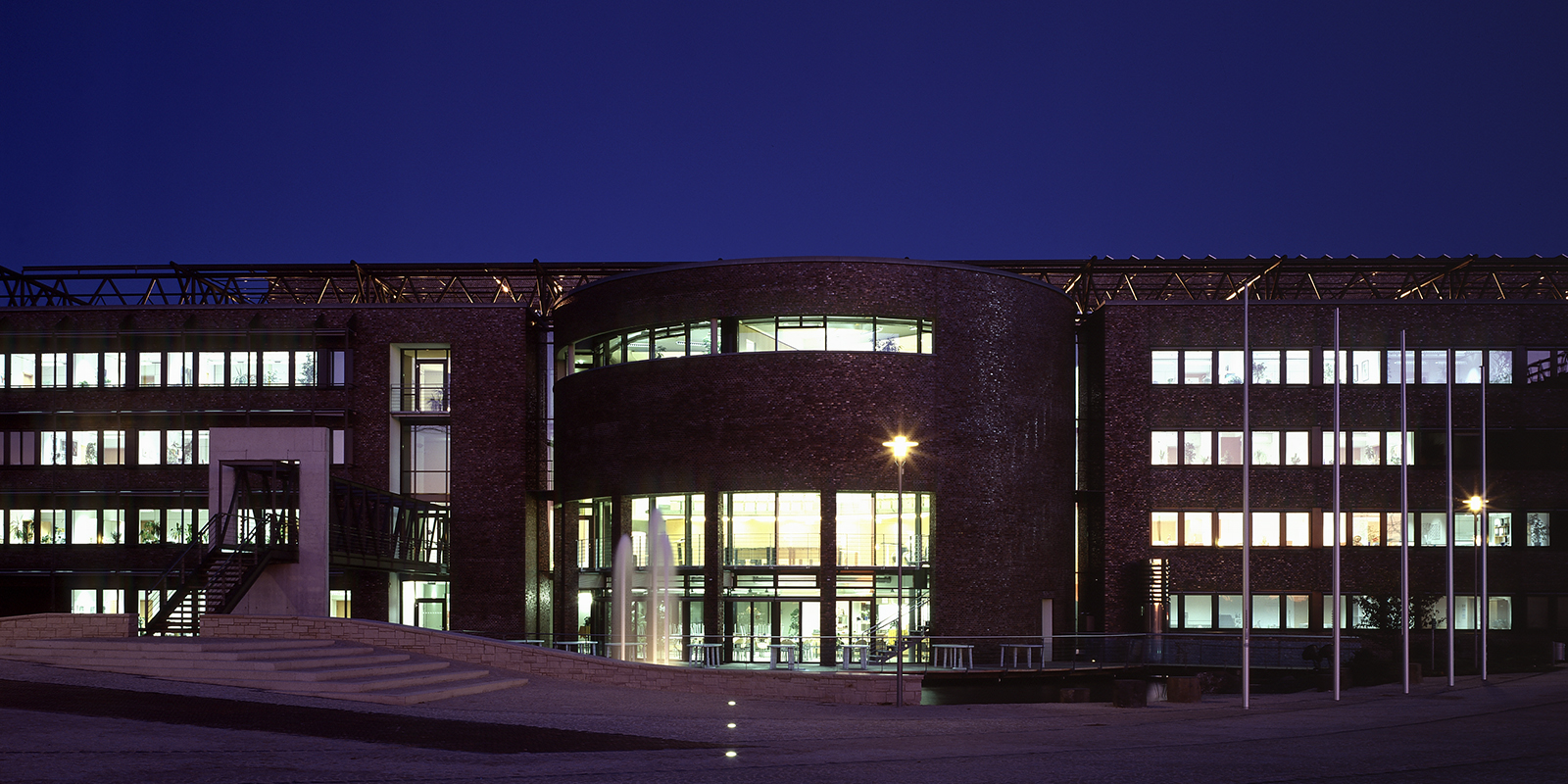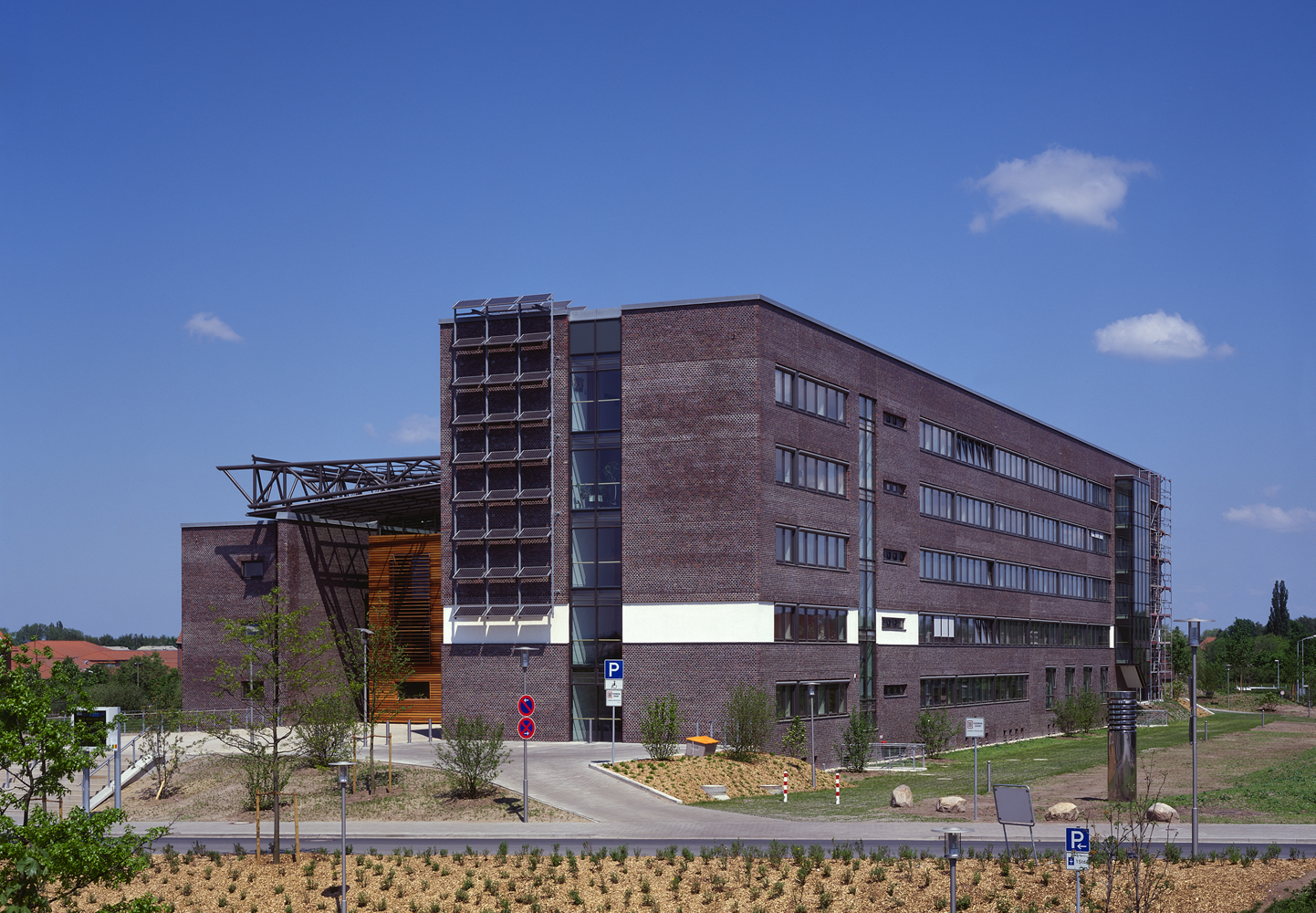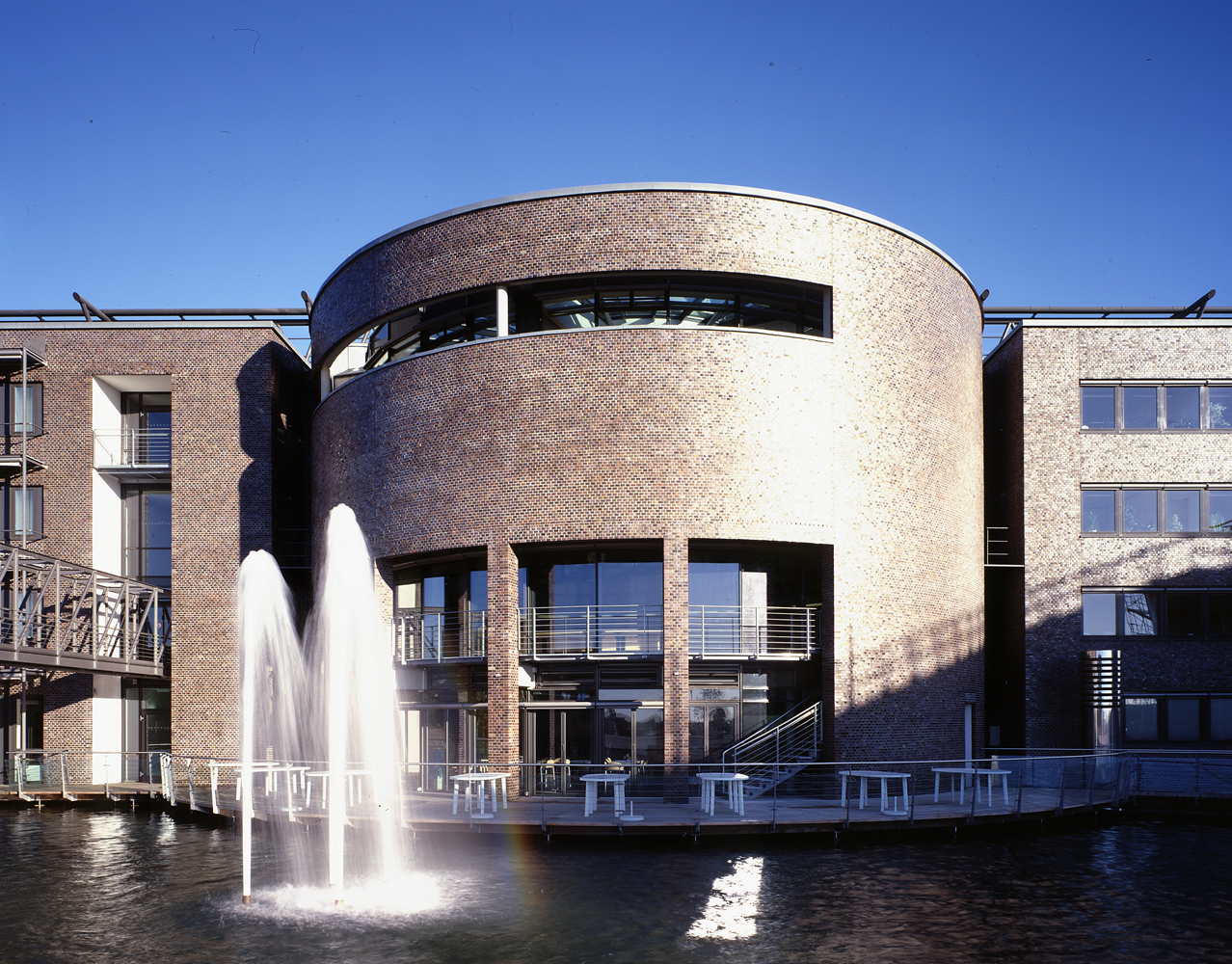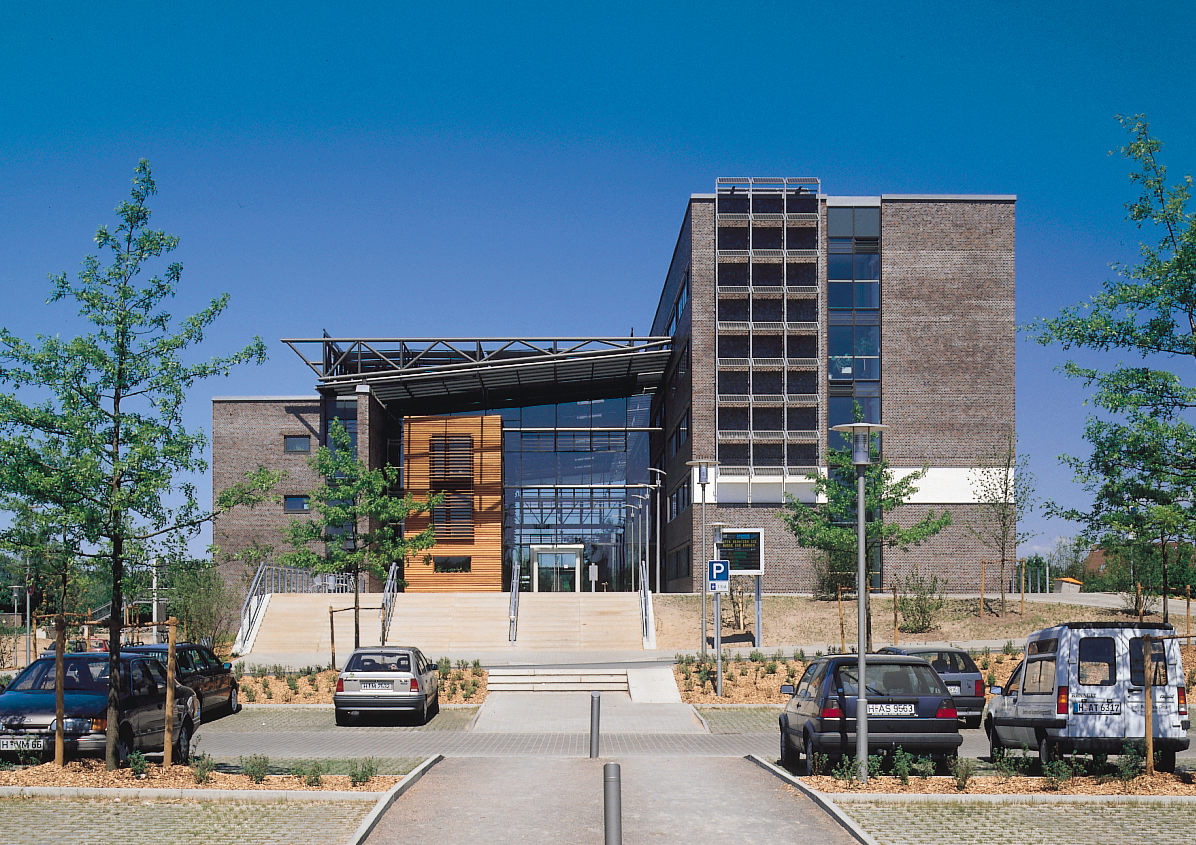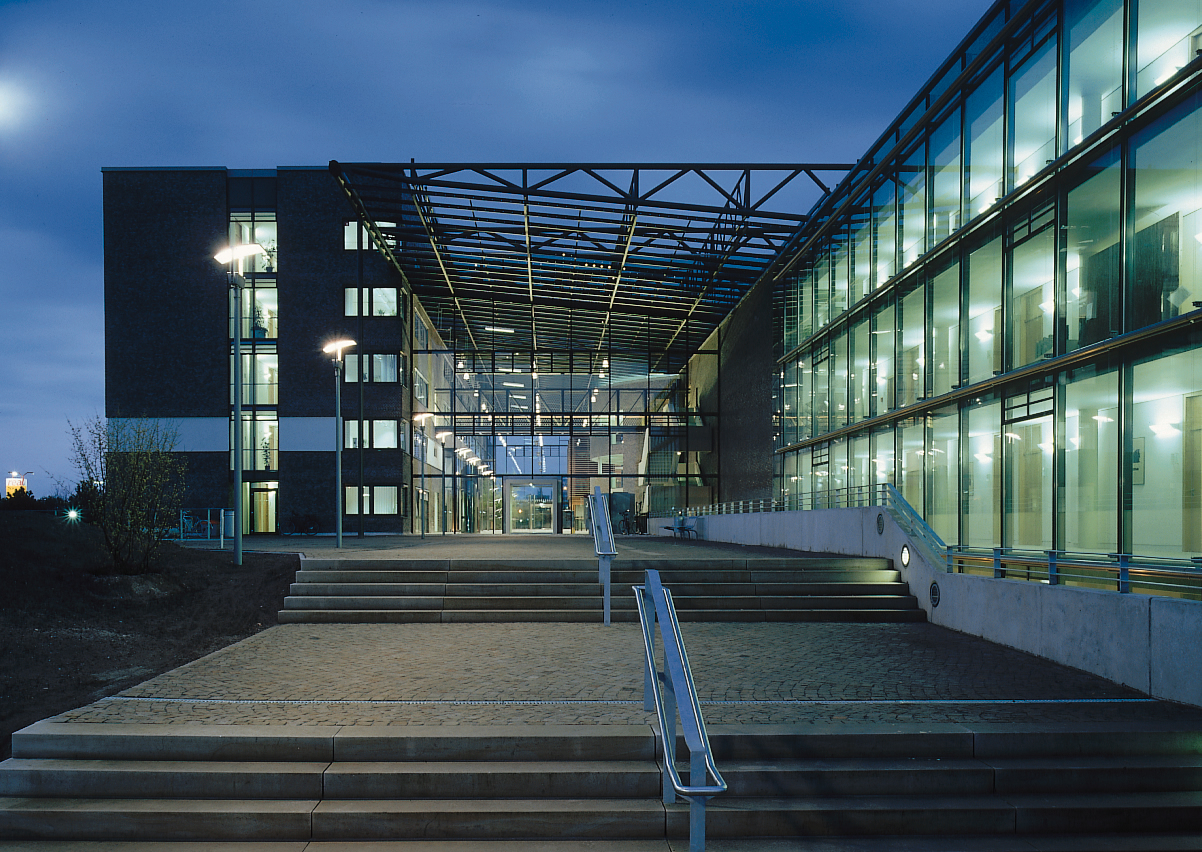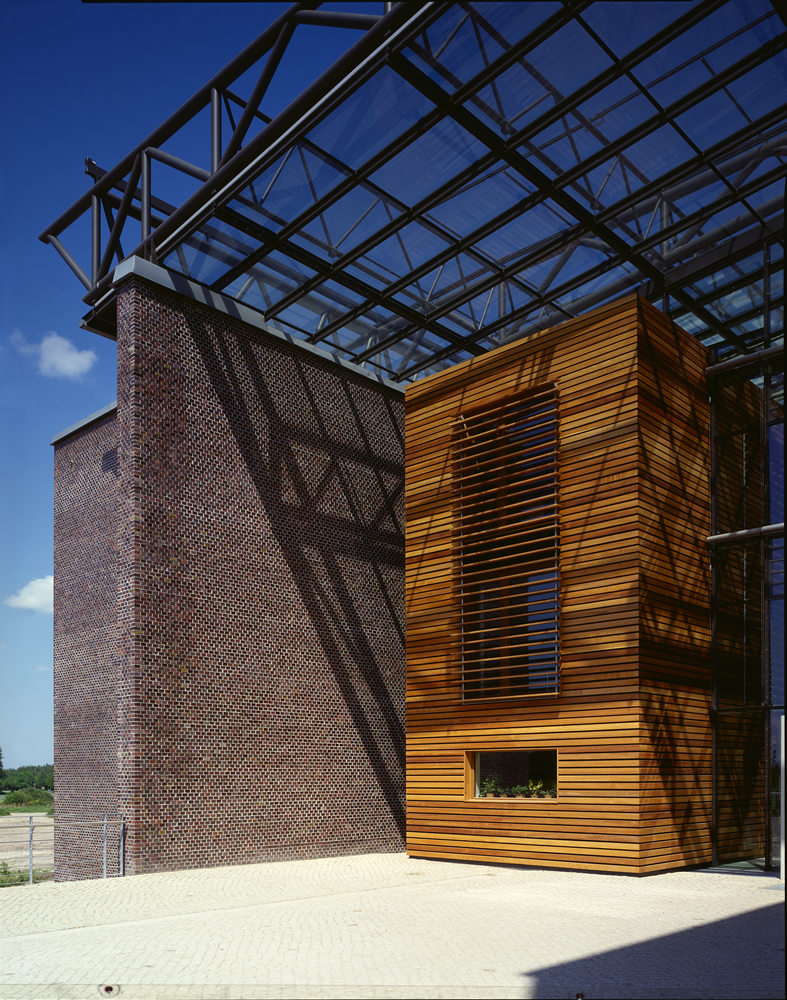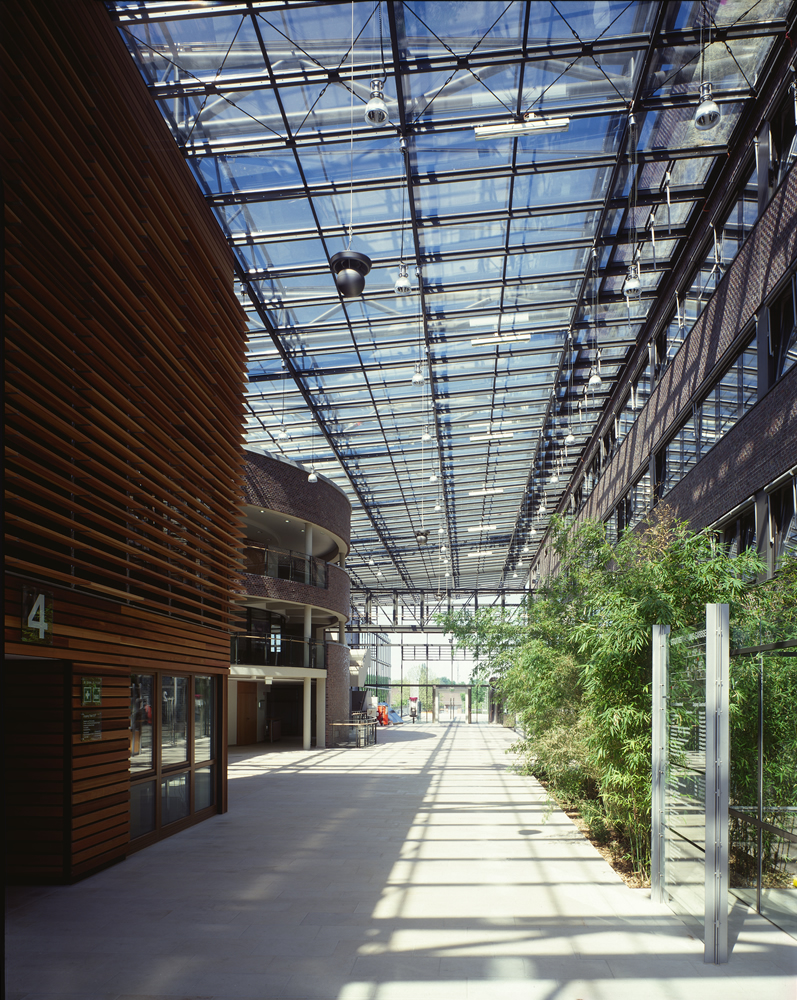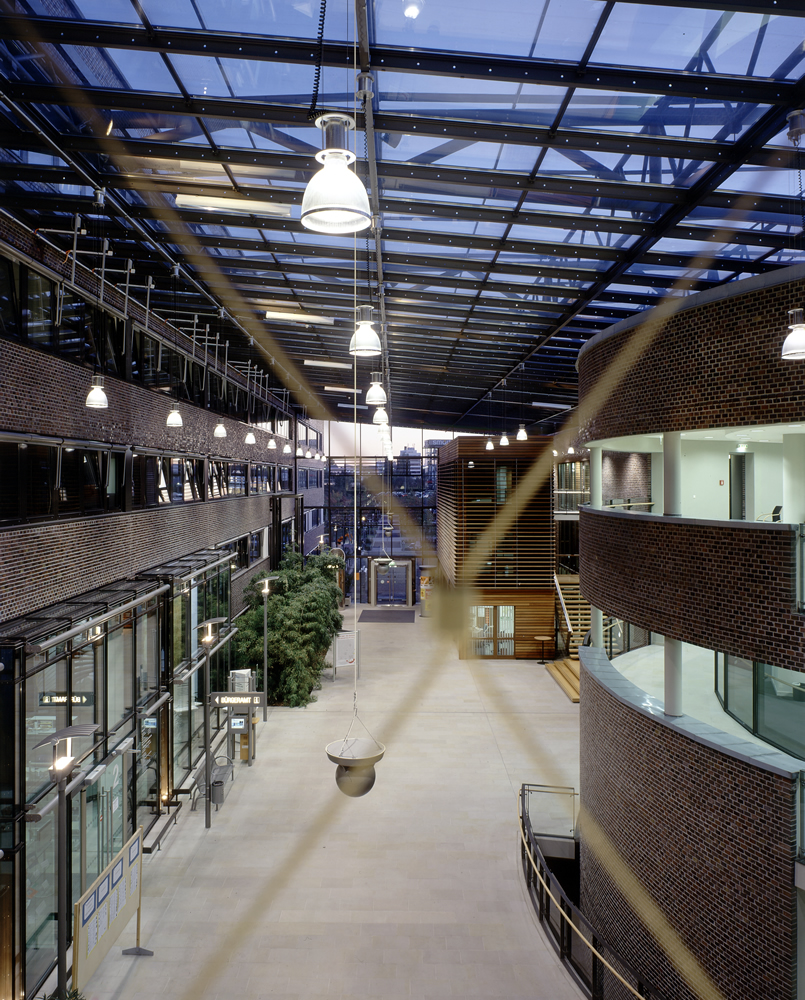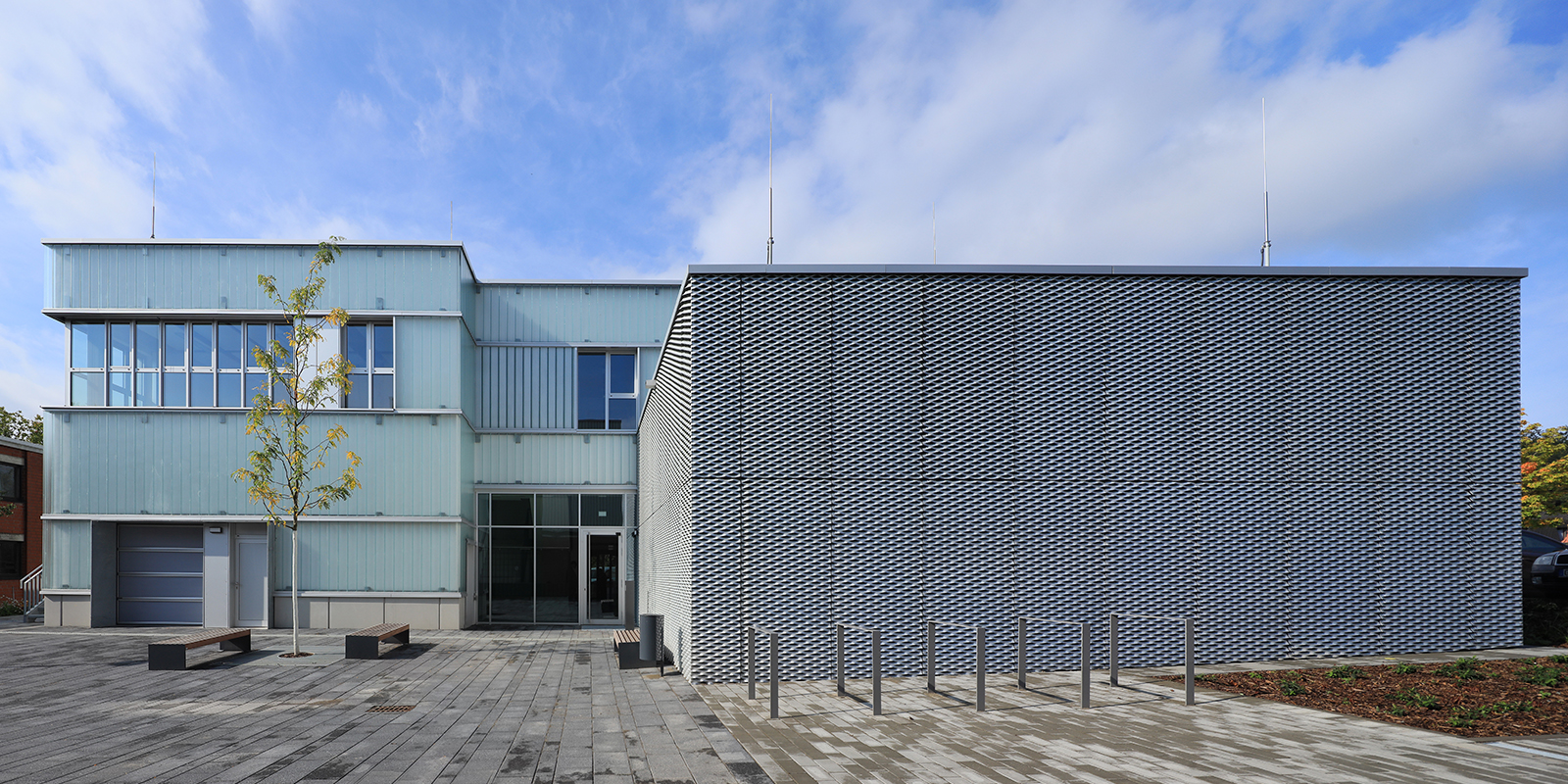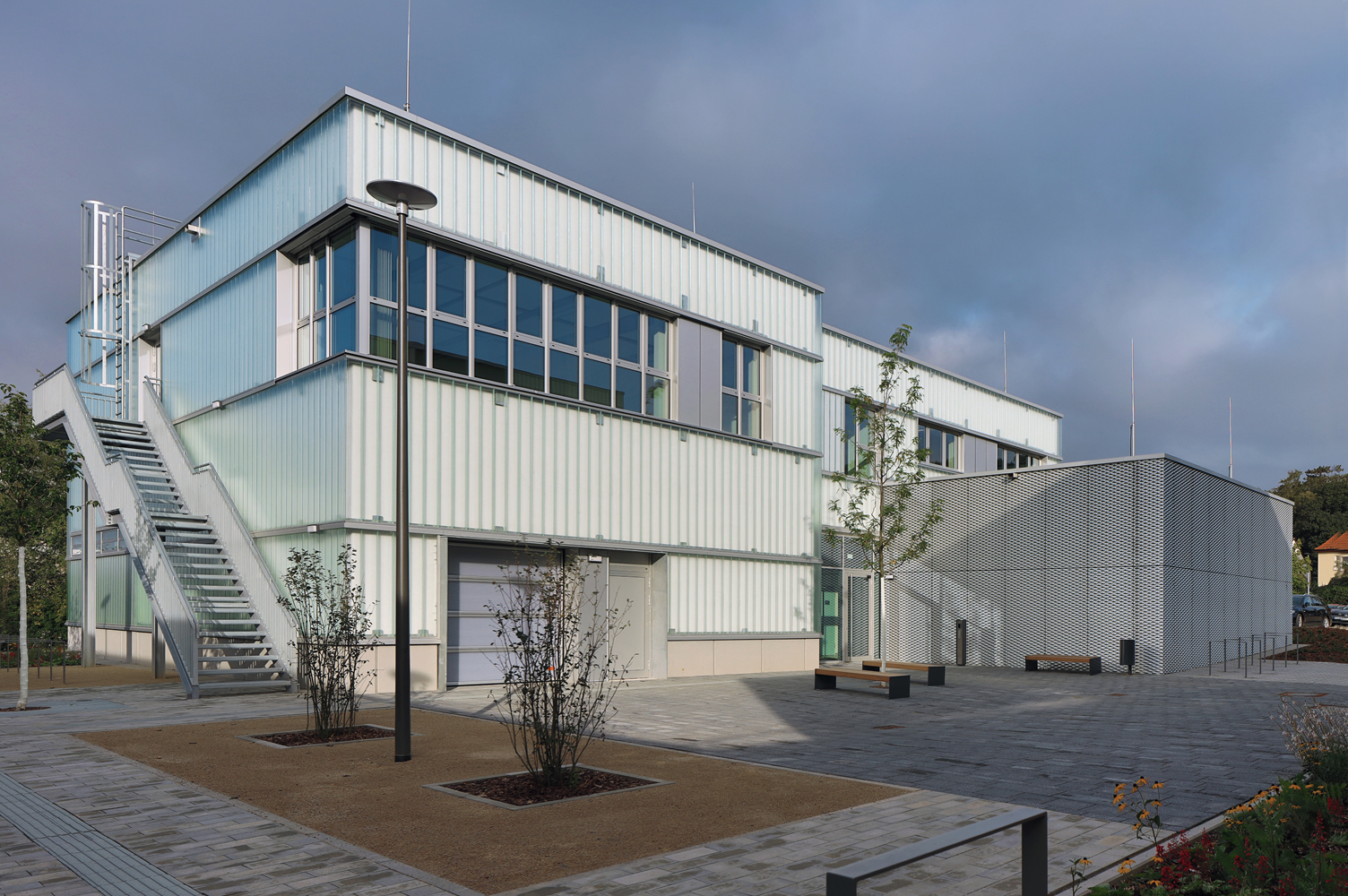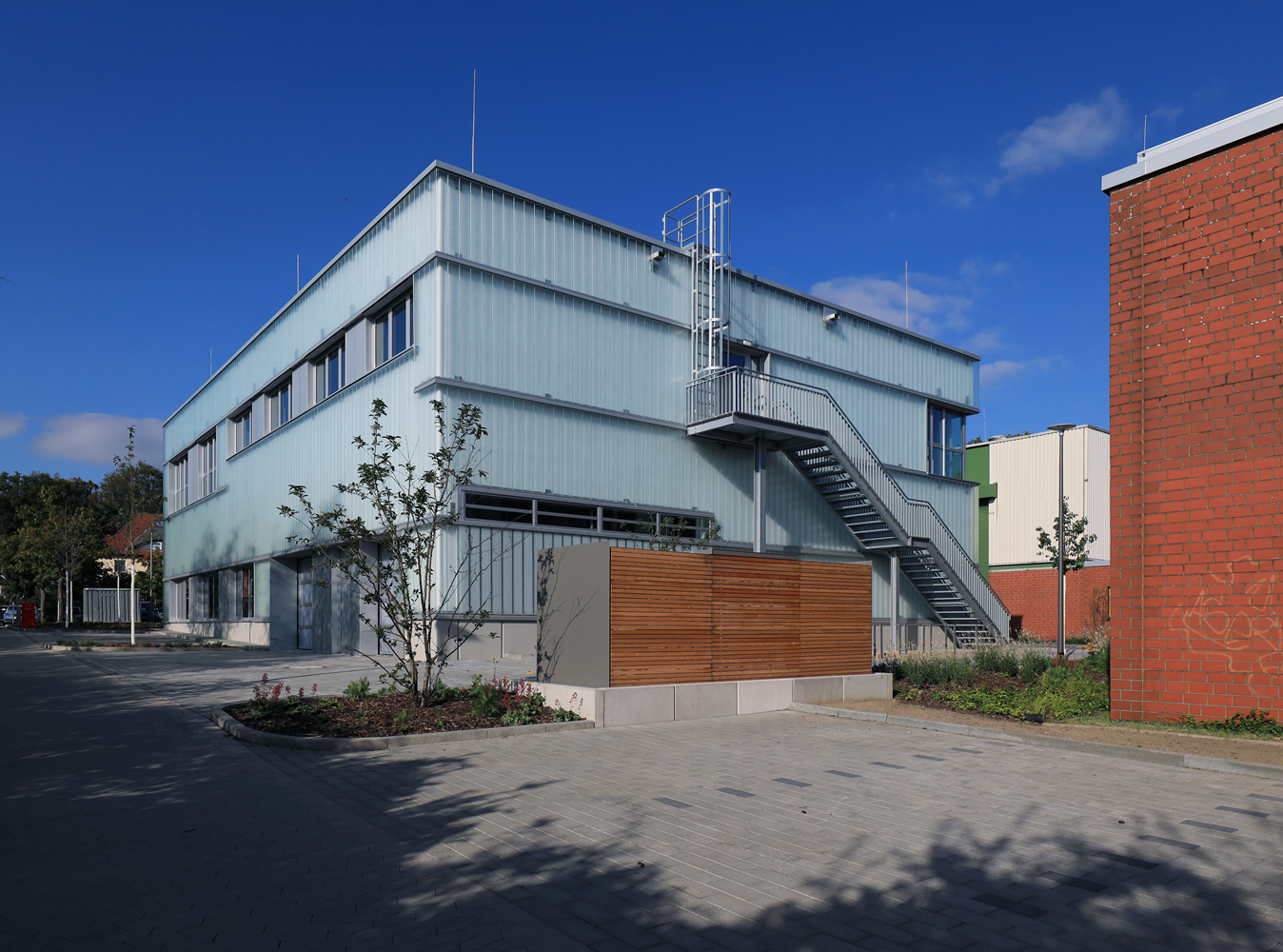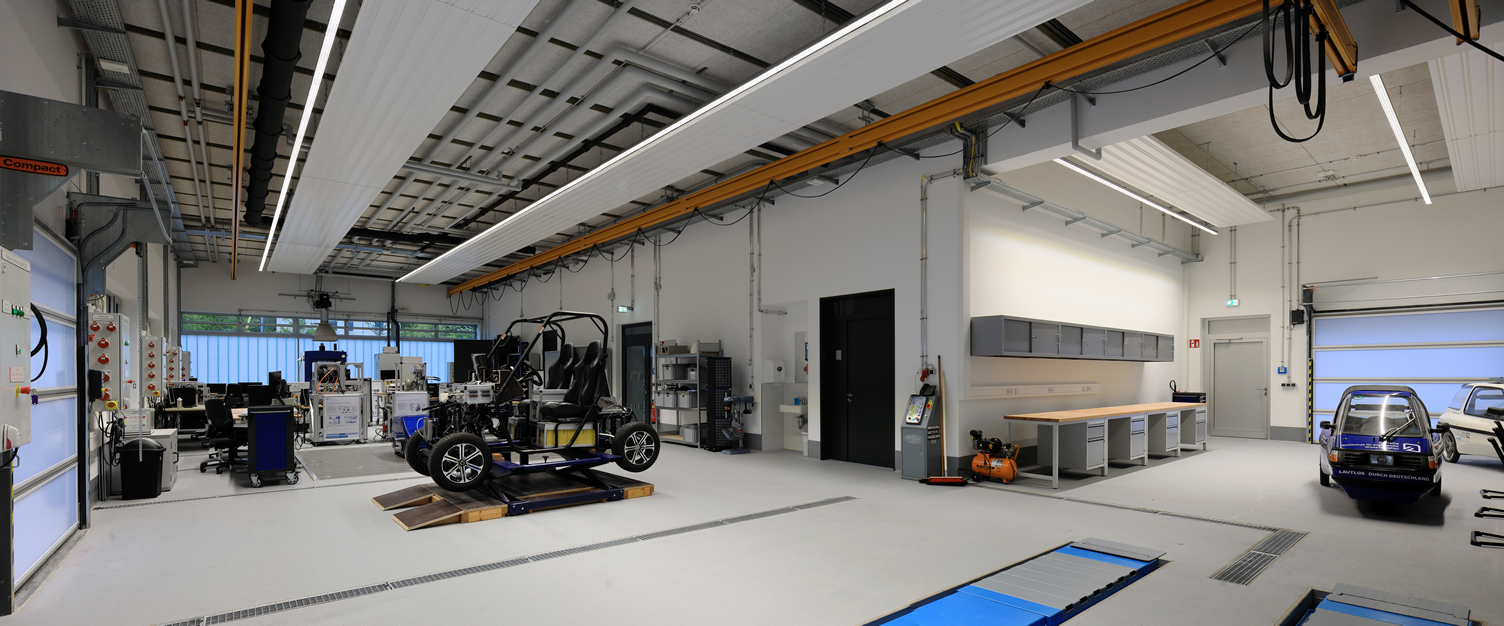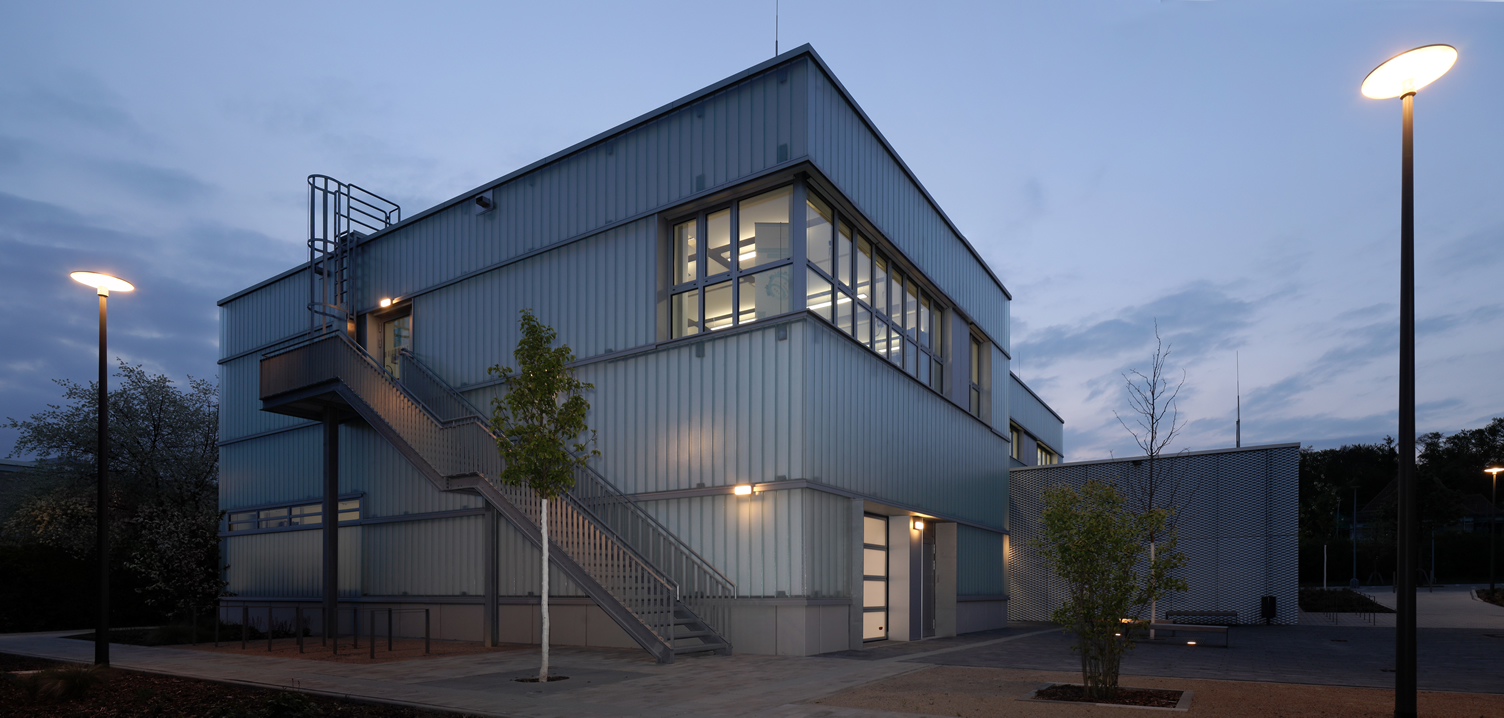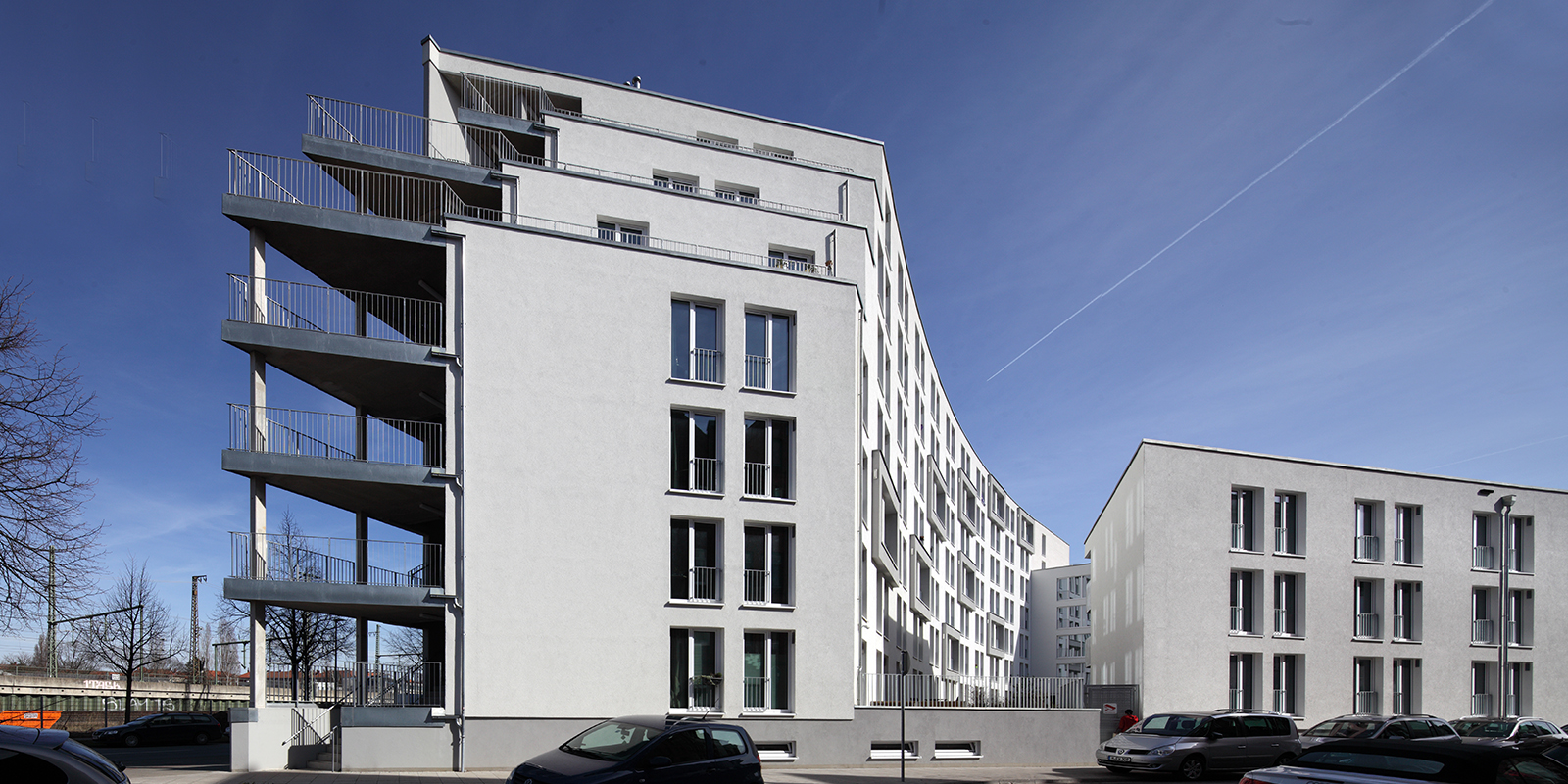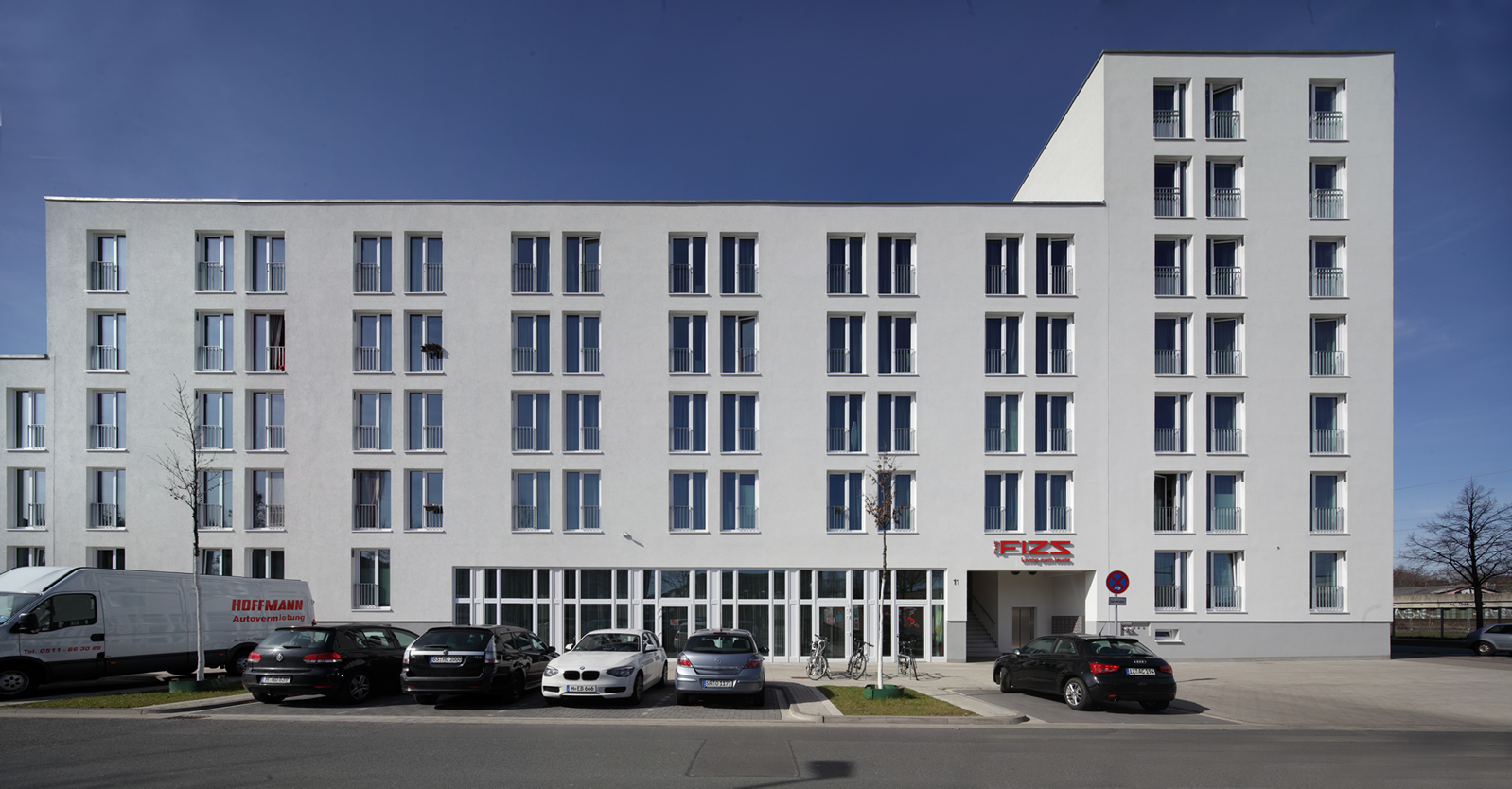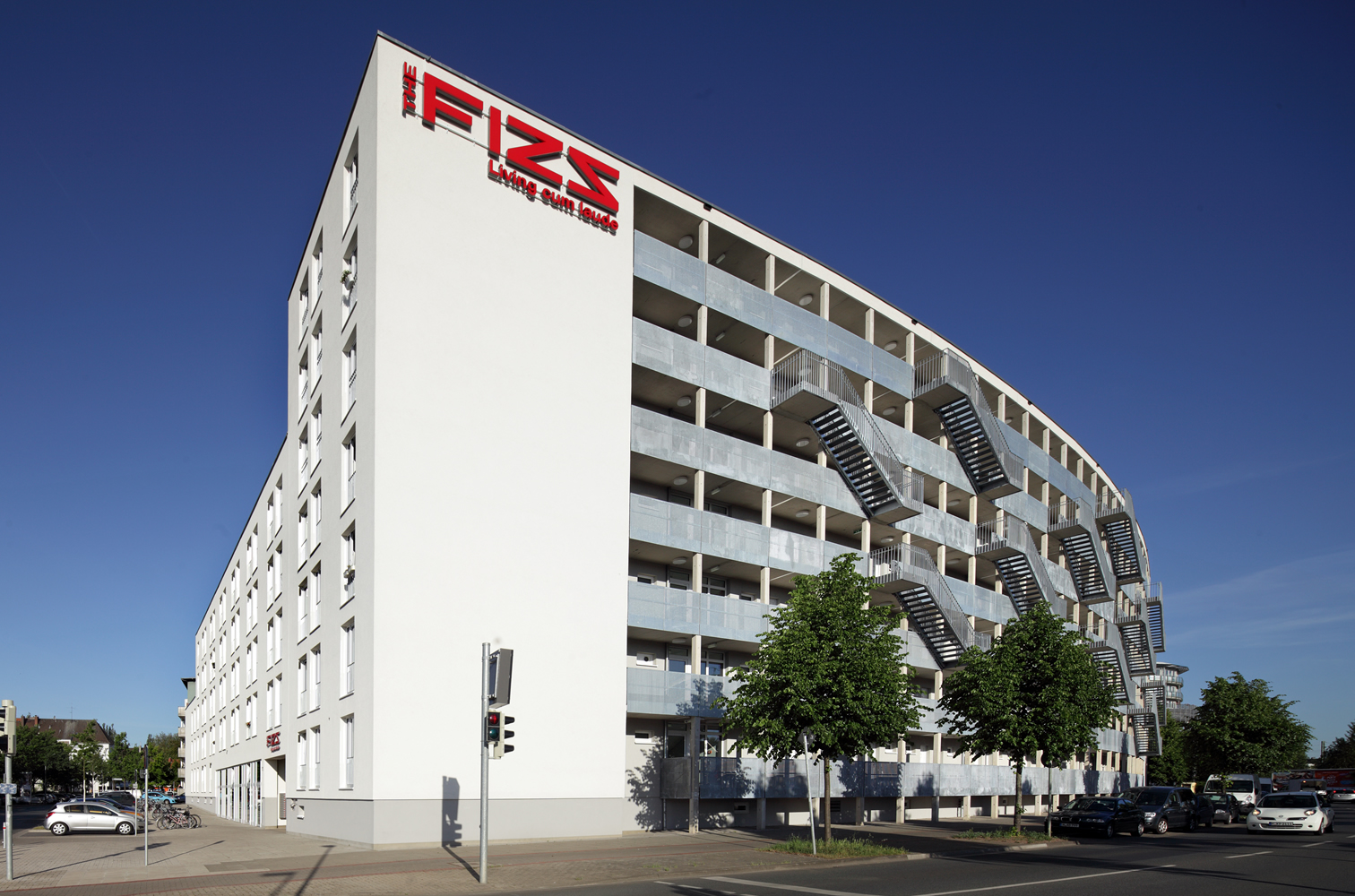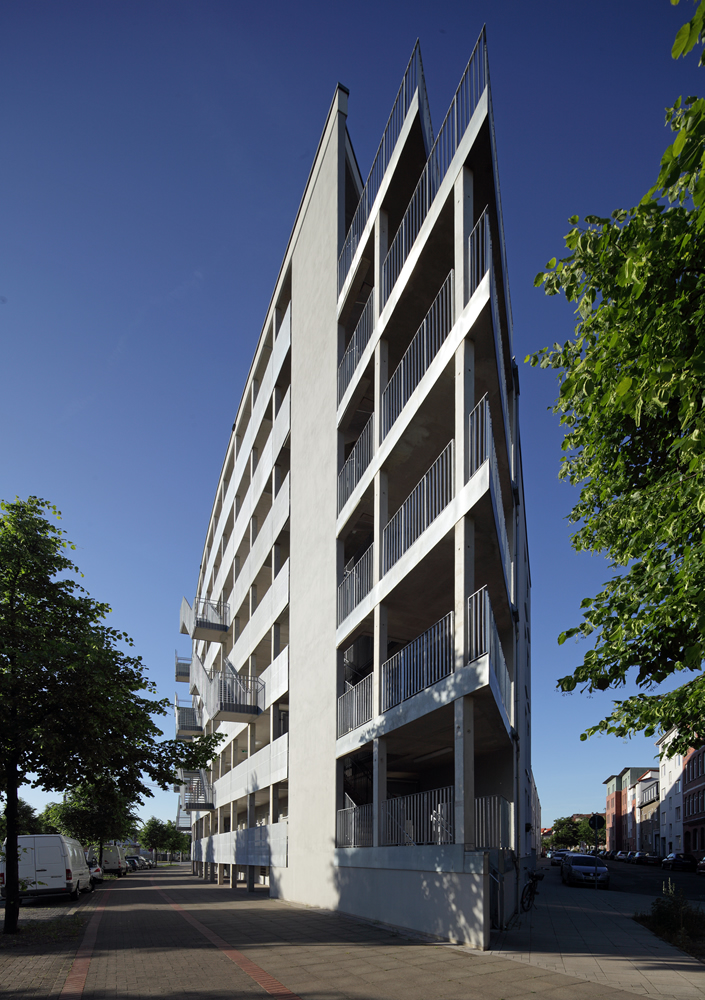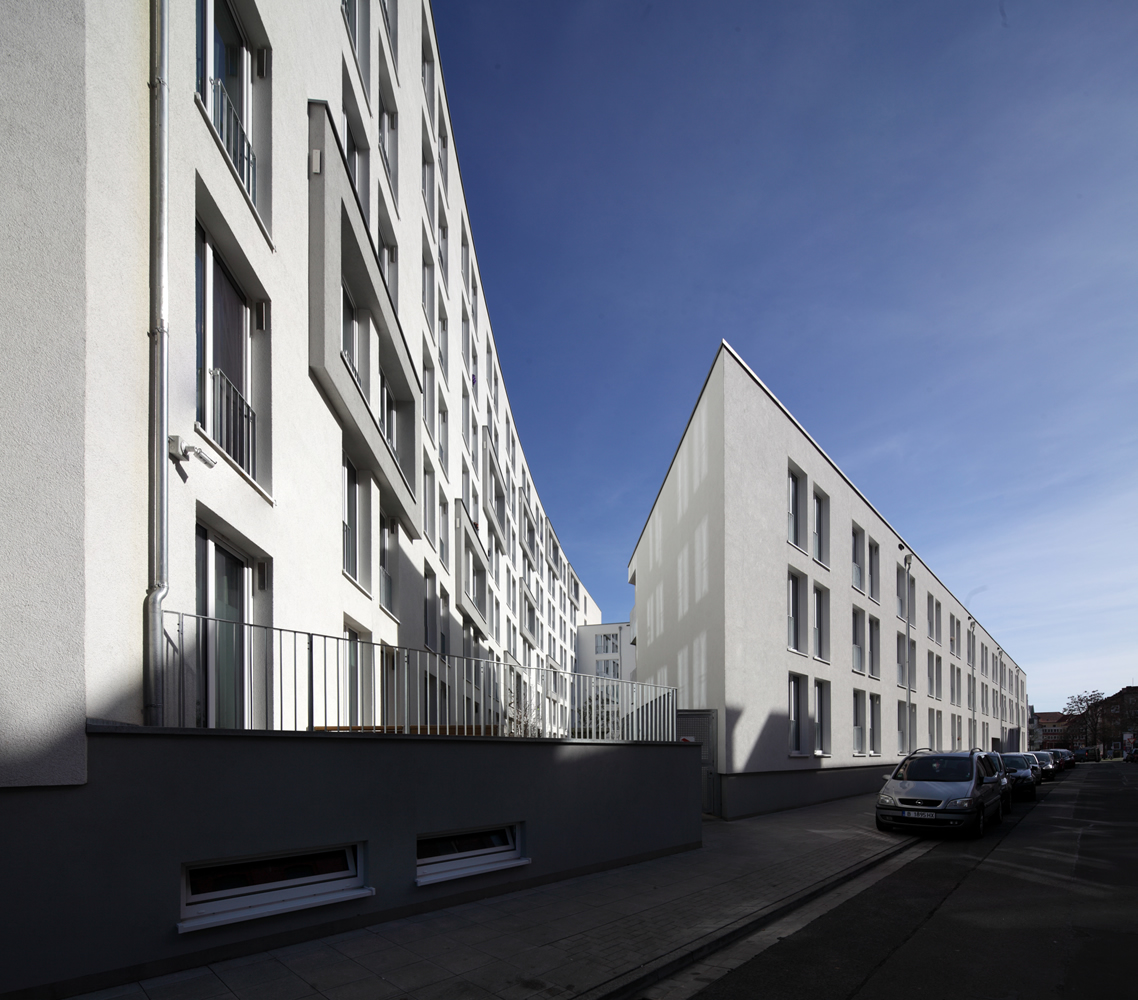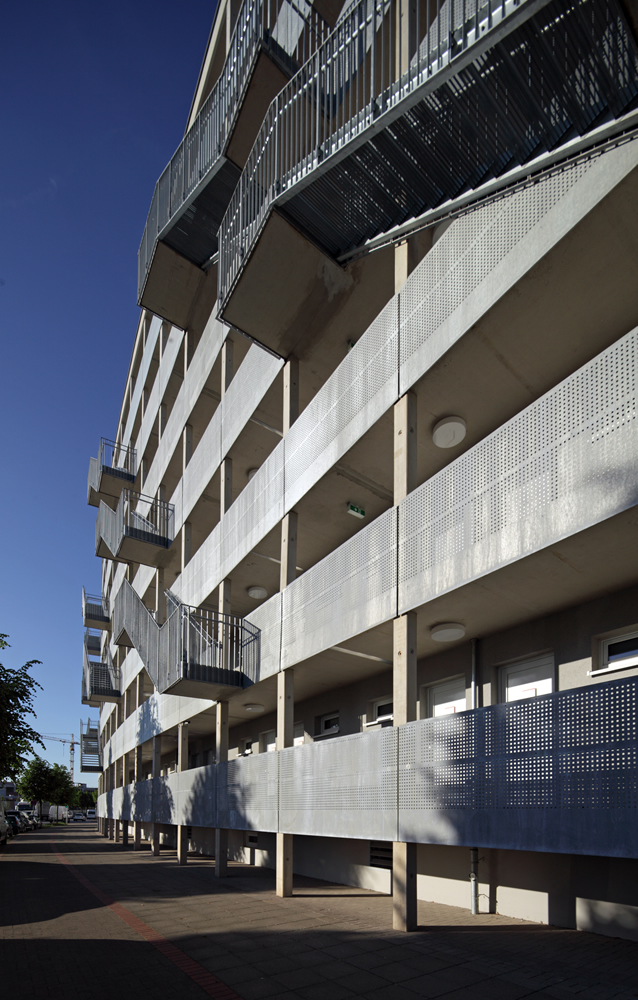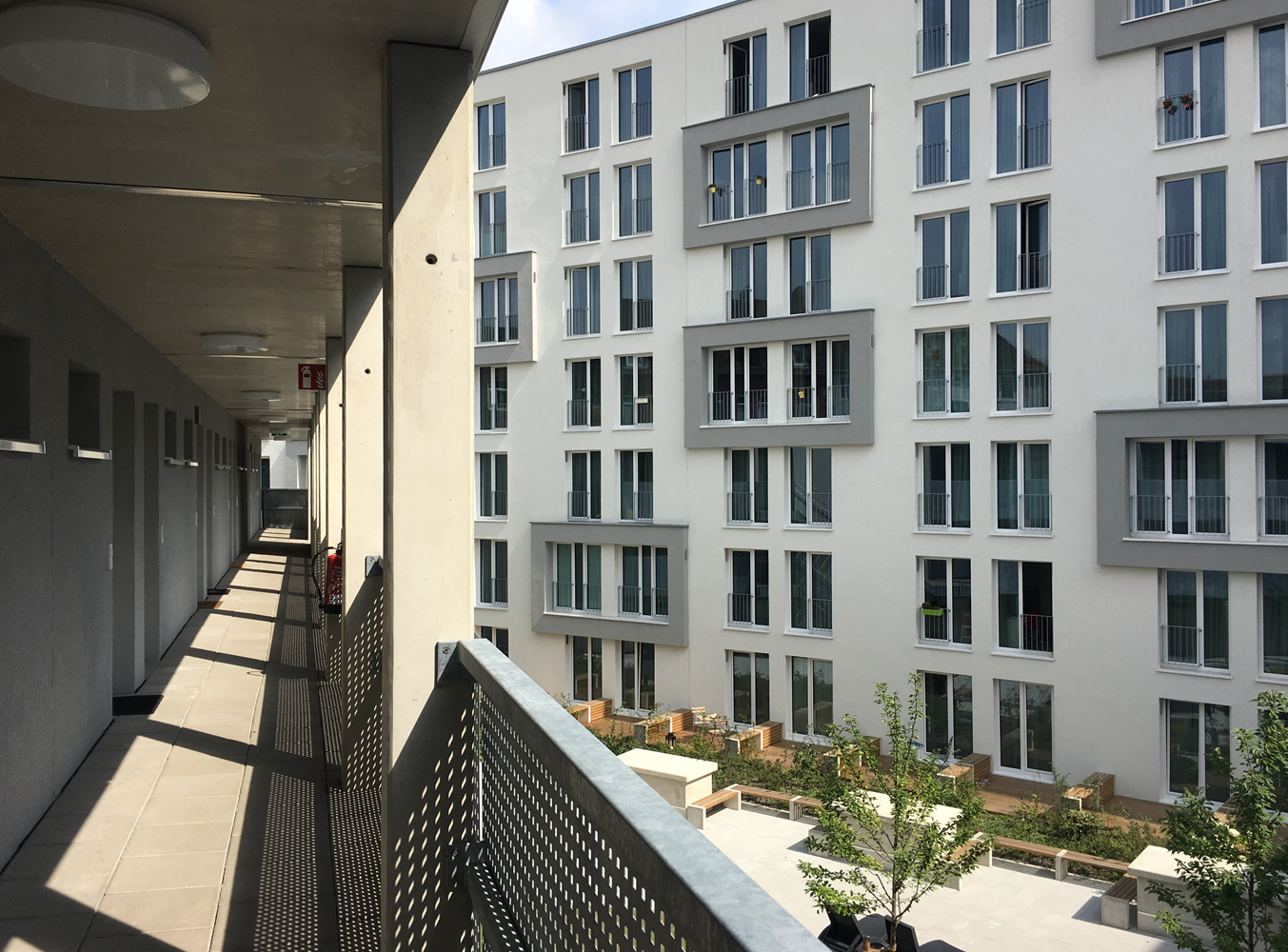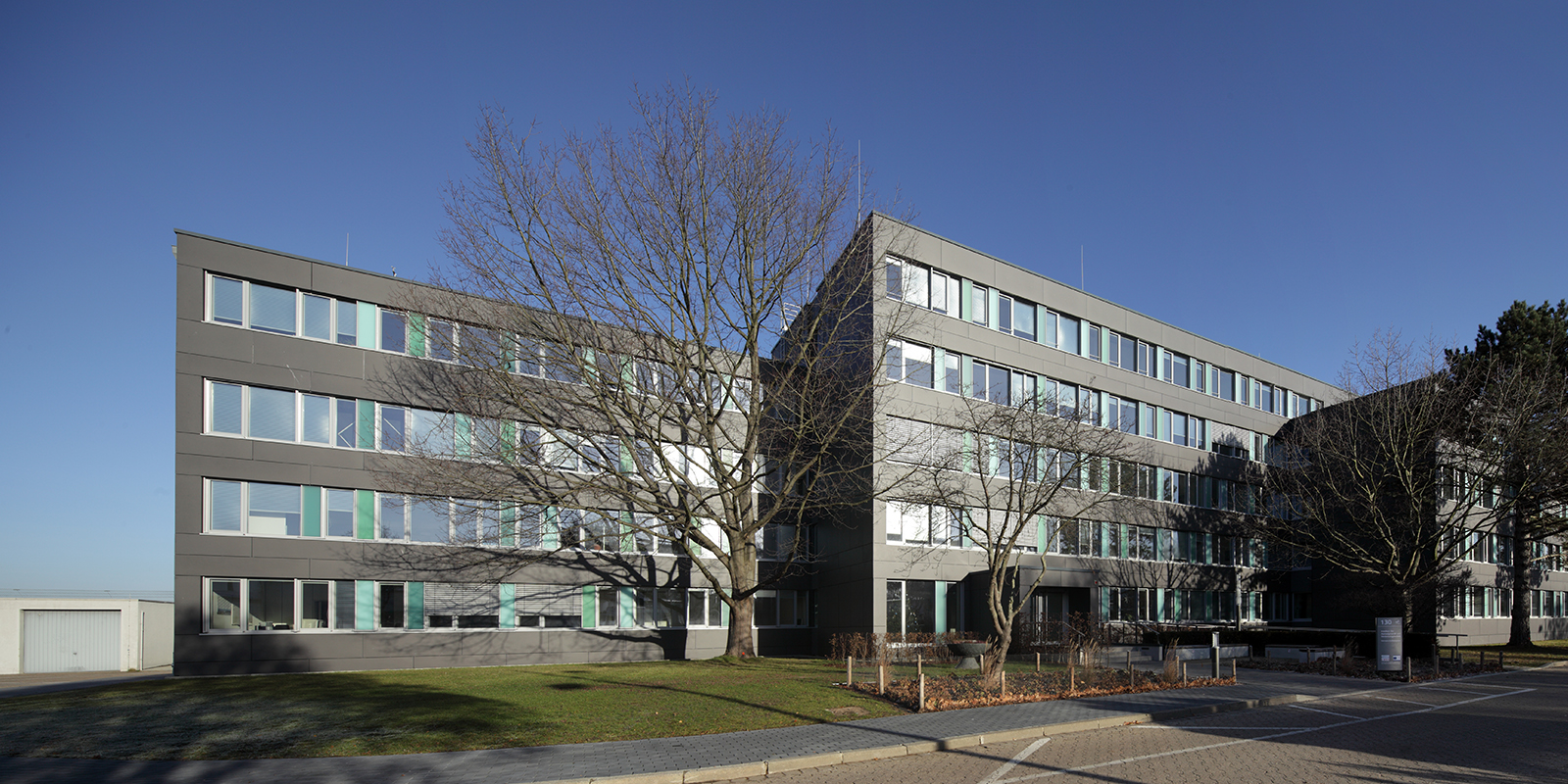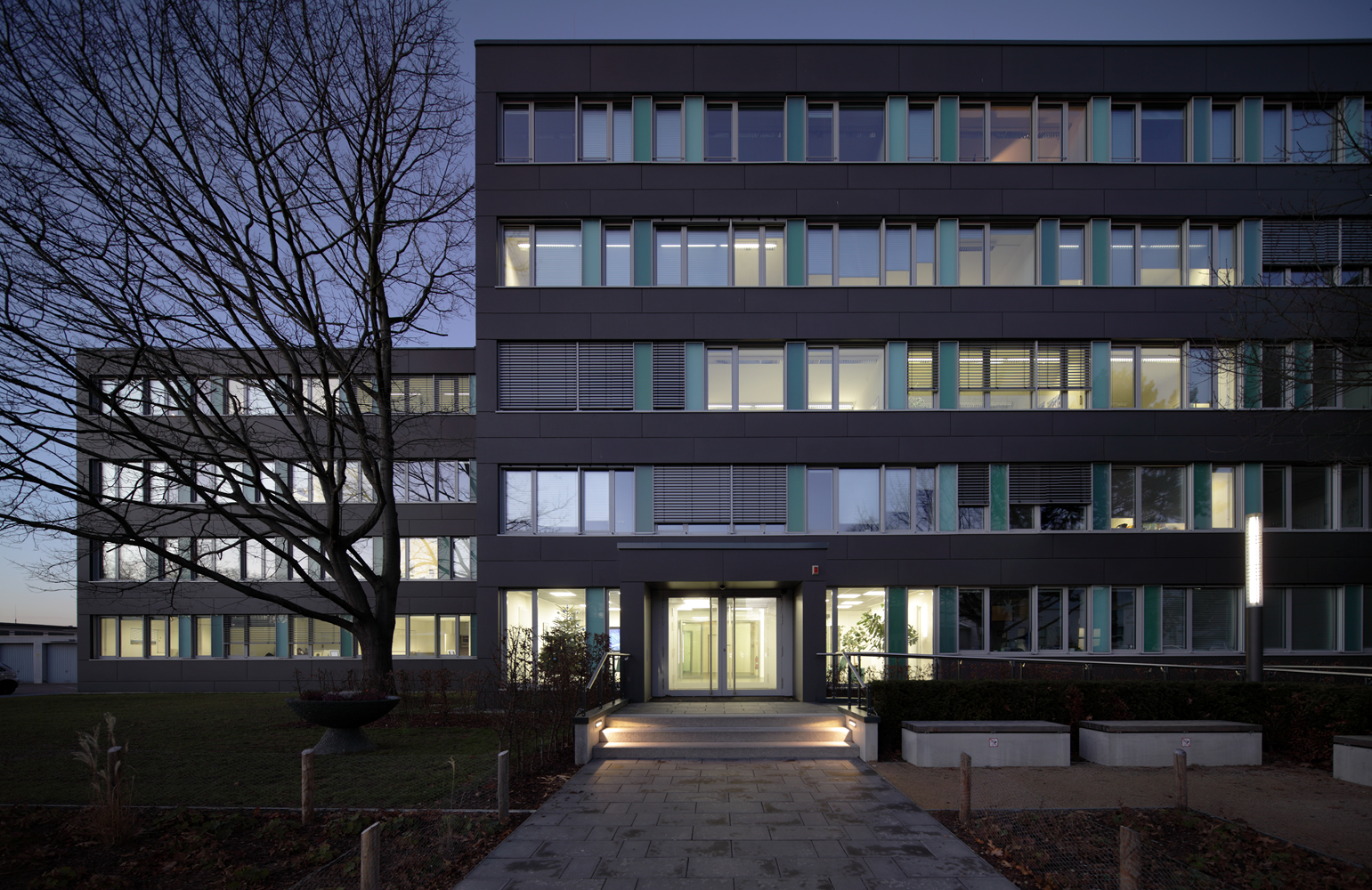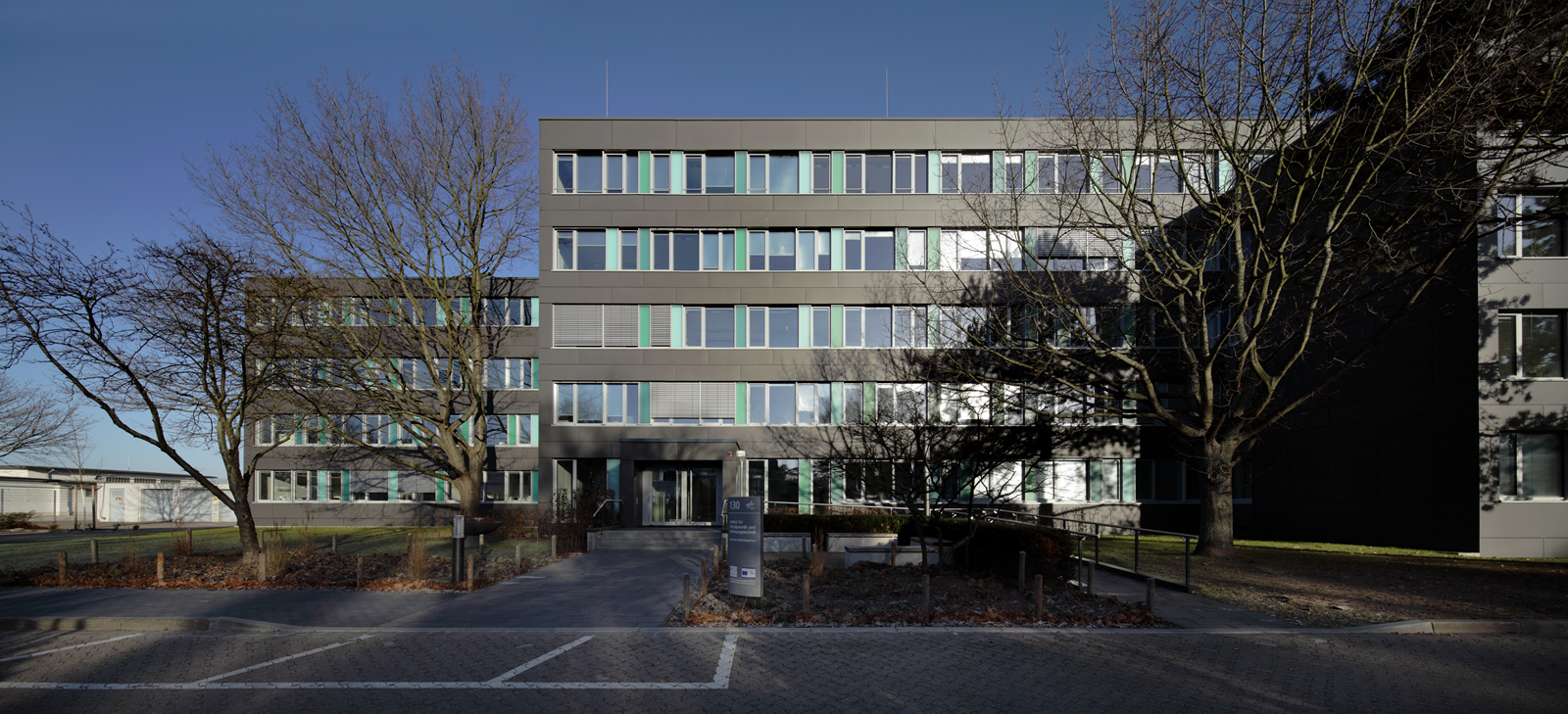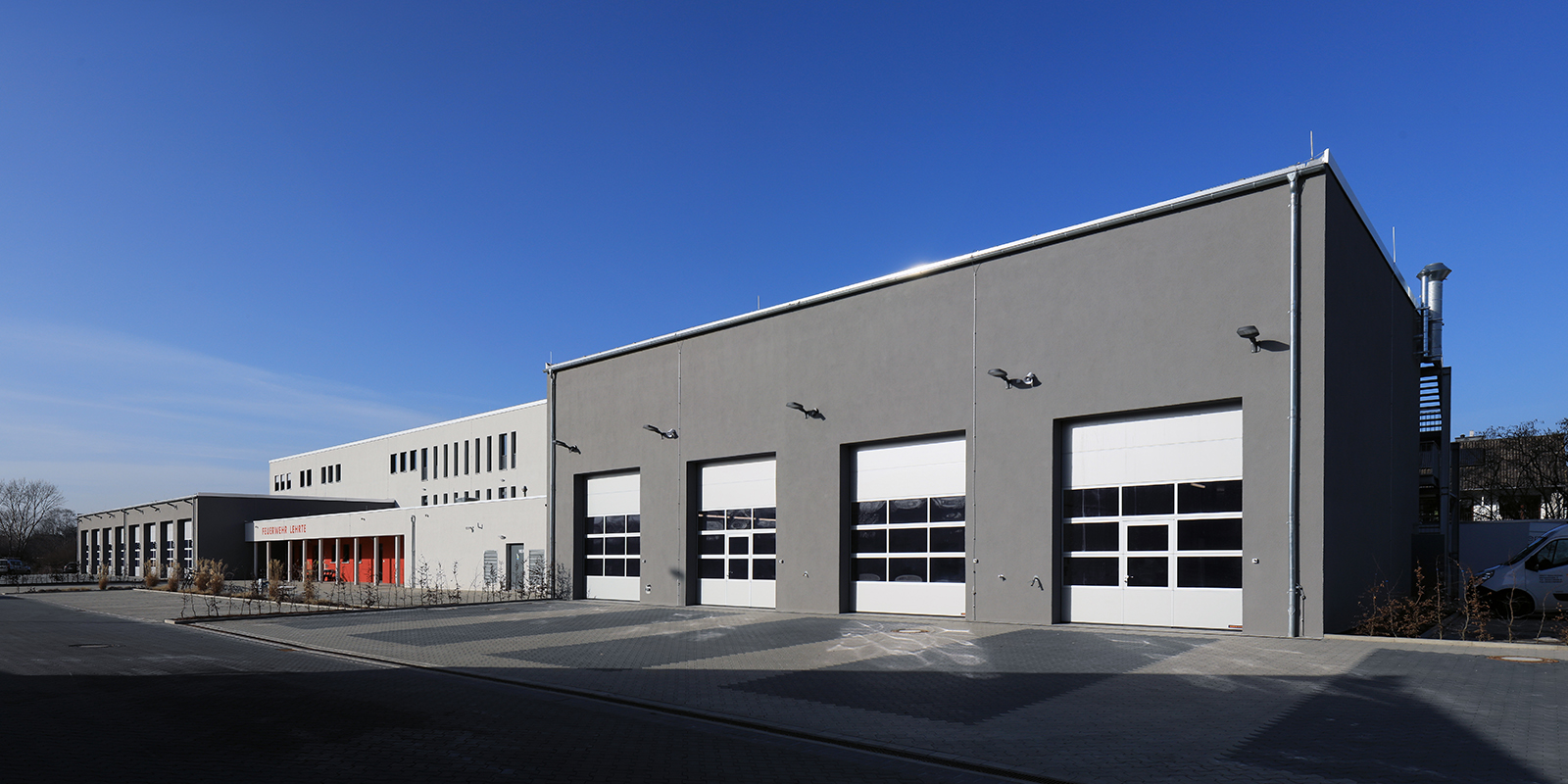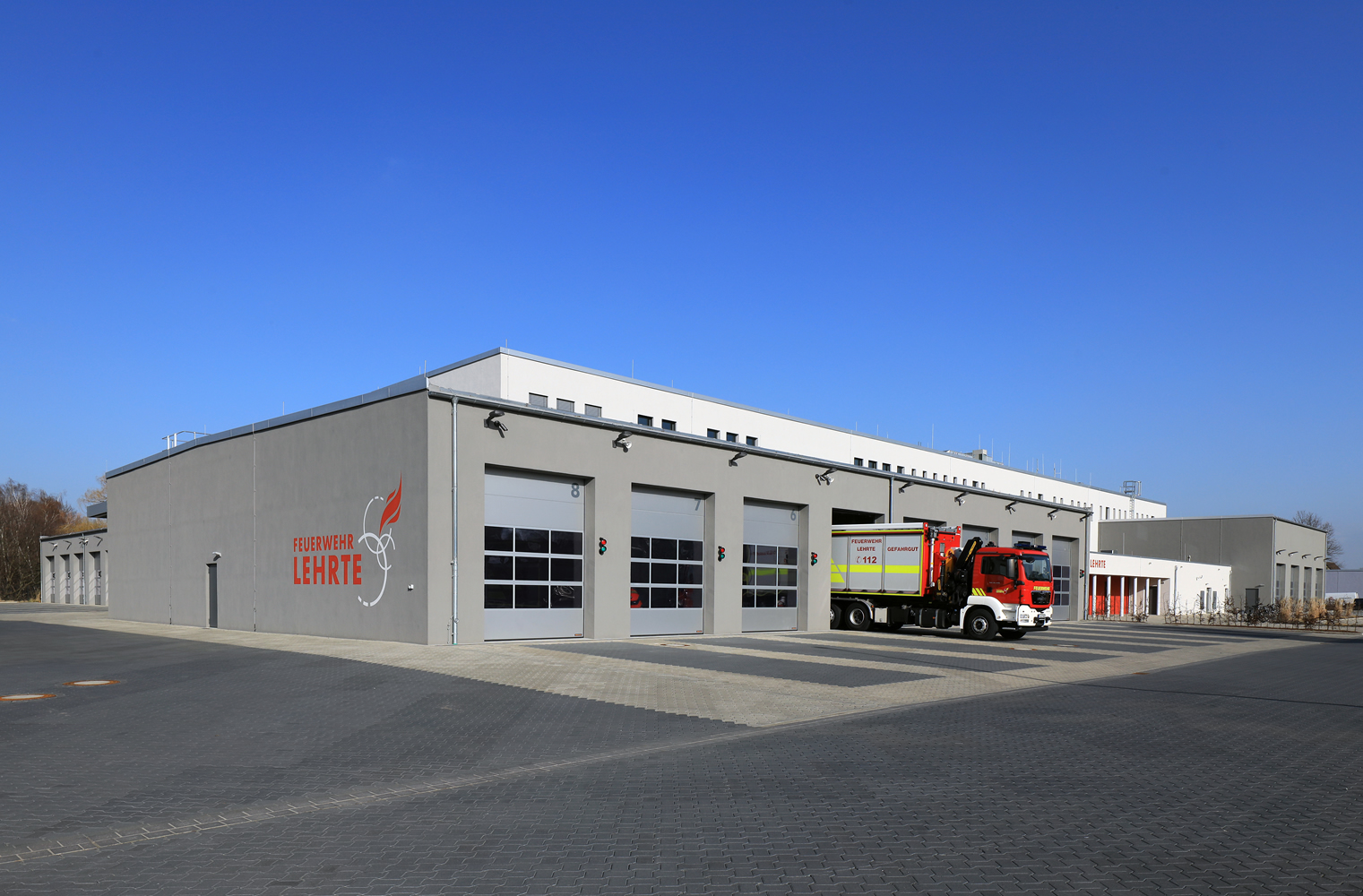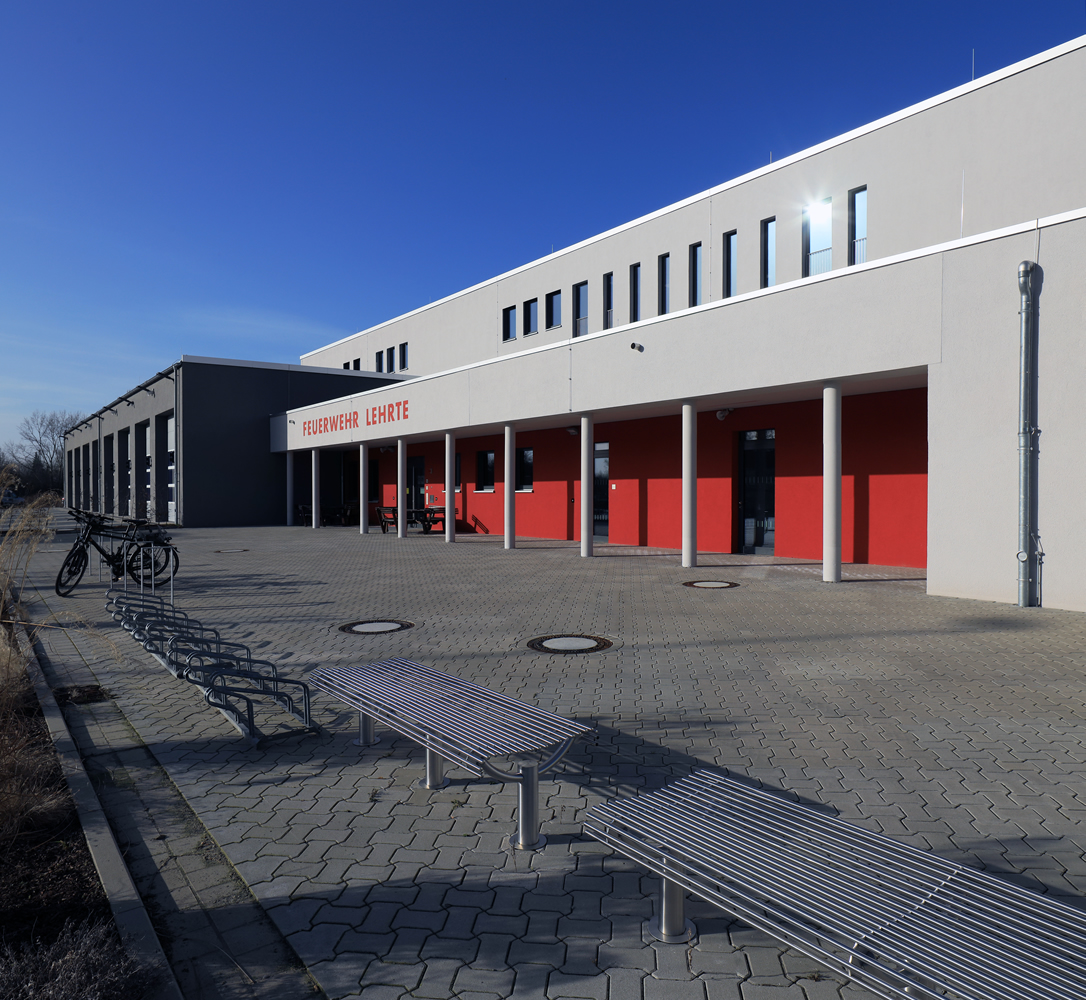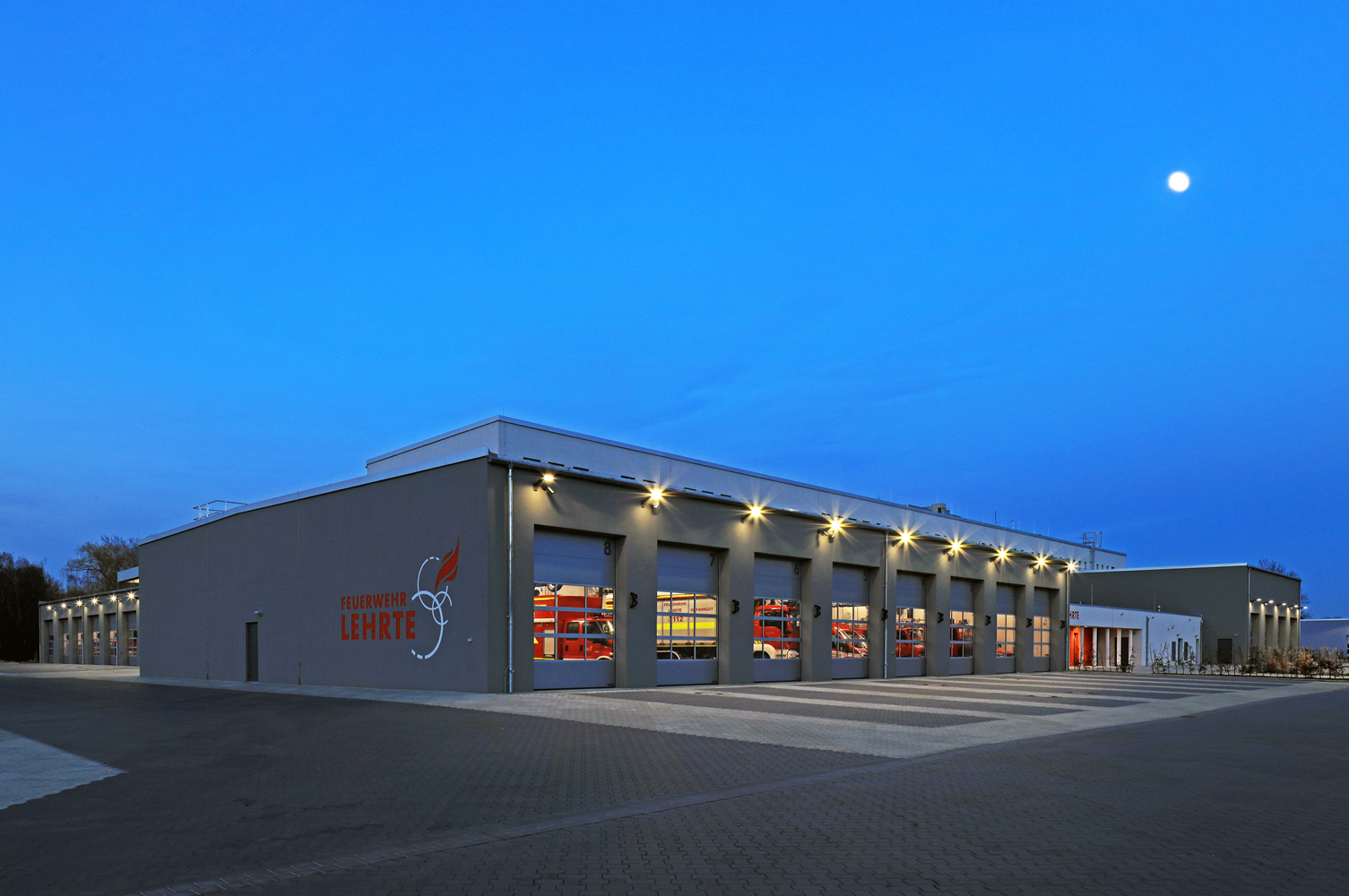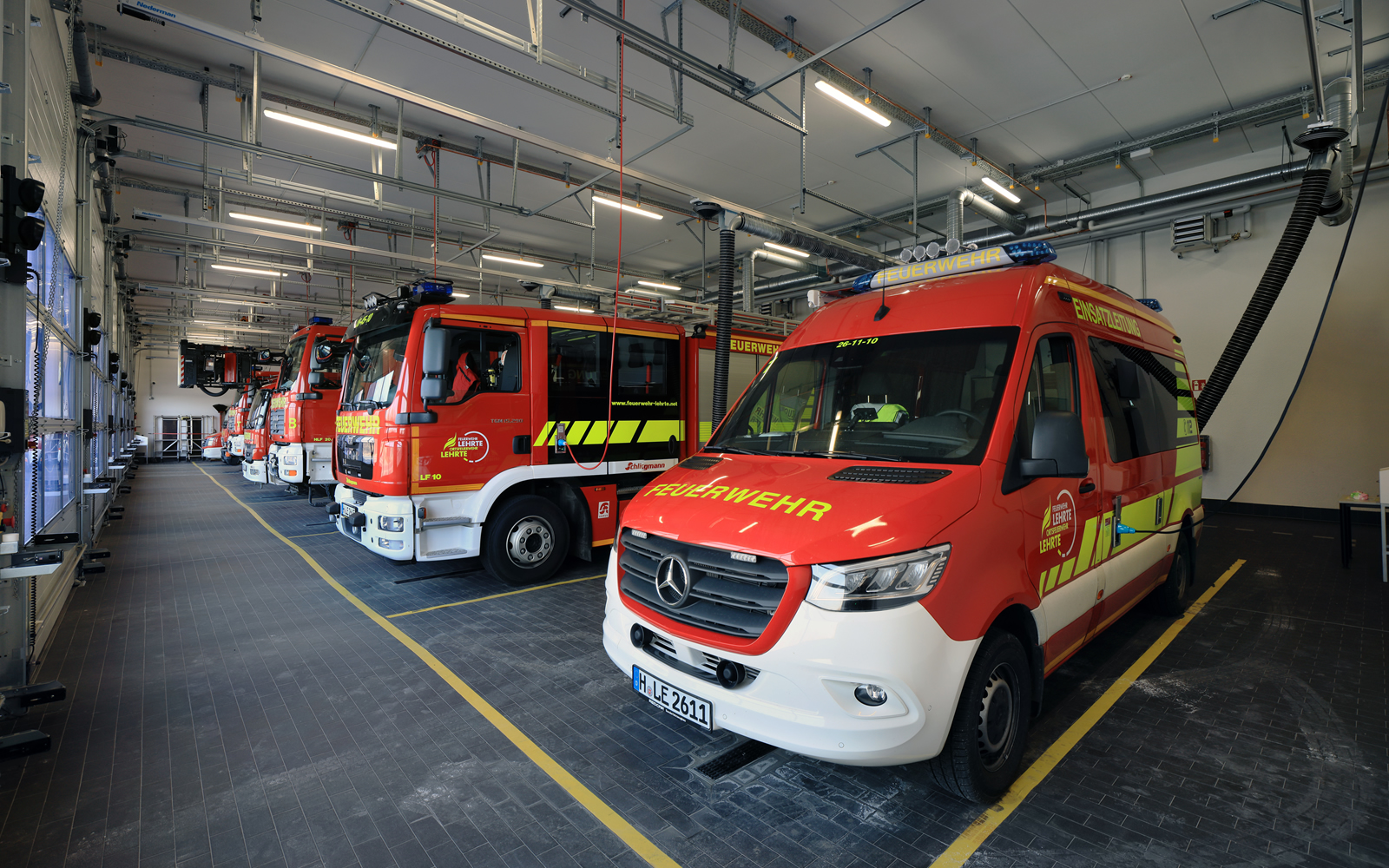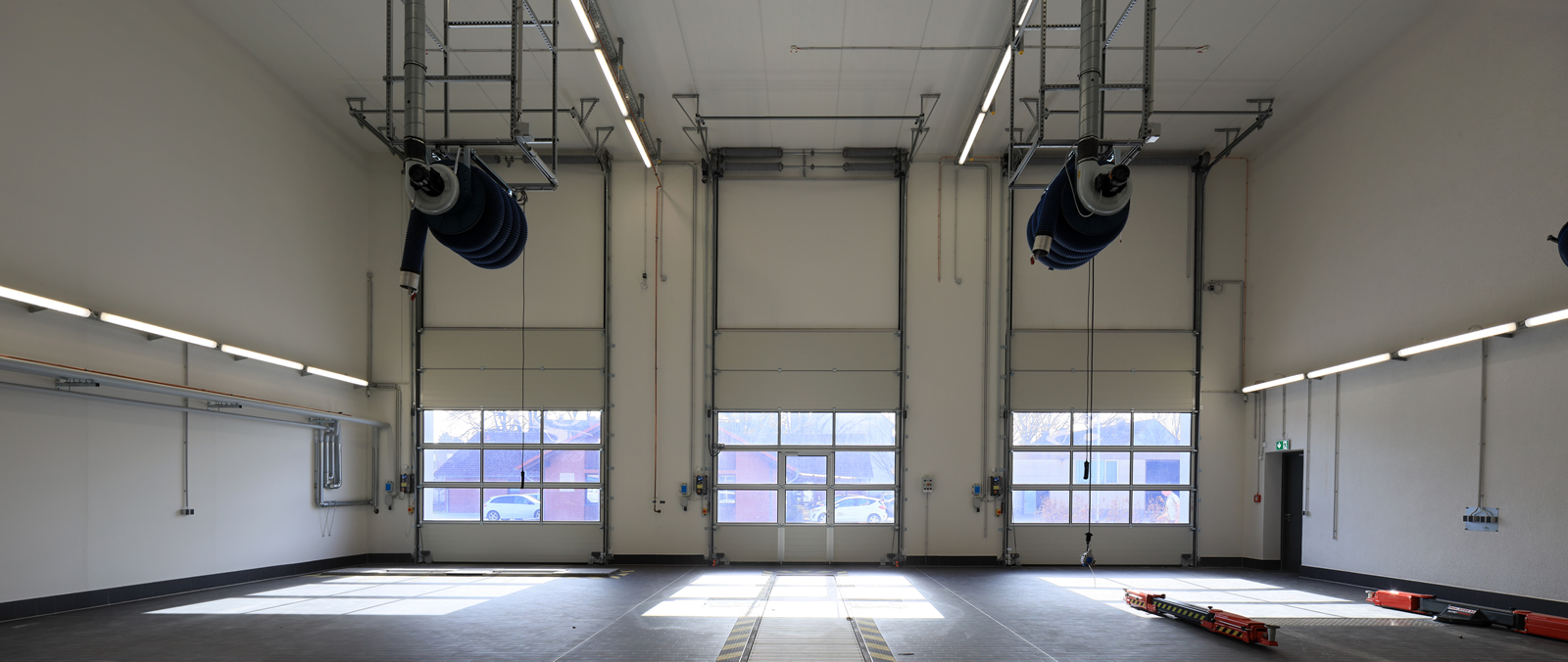Mensa der Technischen Hochschule Deggendorf
The expansion of the TH Deggendorf canteen will increase the number of meals served daily from the current 600 to 1.200. The number of seats in the existing building will increase from approx. 180 seats to 376 seats. The extension will be directly connected to the old building to the west in the direction of Bogenbach. The building protrudes approx. 8,00 m from the western building line and takes up the width and height of the existing building. It houses a second and third dining room, another food counter, and additions to the kitchen and building services. On the north and south sides of the extension, above the new food counter and dining room 3, there is a roof terrace each, which is connected to the neighboring existing buildings via bridges.
Zentrum für Synthetische Lebenswissenschaften, Düsseldorf
Between 2015 and 2018, the new research building Centre for Synthetic Life Sciences ZSL – Riesner Building was built on the UKD campus. Scientists who had previously been housed in different locations on campus were brought together here in a central location, supplemented by new professorships and junior research groups around the Cluster of Excellence on Plant Sciences (CEPLAS) and the Biological-Medical Research Centre (BMFZ): Four scientific-experimental, three theoretical and three infrastructure groups work here.
The ZSL site is located in the north-western area of the university grounds of the UKD and HHU. On approx. 8.200 m2 of gross floor space, high-quality premises are available for professorships and junior groups in theoretical biomedicine as well as for professorships and junior groups in laboratory research, central units, teaching laboratories, service areas, conference rooms, cluster administration, etc. The ZSL has a large number of rooms and facilities.
With its shape, reminiscent of an X chromosome (design: Universitätsklinikum Düsseldorf Medical Services GmbH), familiar from genetics, the new research building establishes a direct link to the research located there: here, the entire synthetic-biological experimental path is mapped out in close spatial proximity – from the experimental design in cooperation with the theoretical groups to the experimental executions to the analytical platforms and to data analysis and modelling.
Neue Schule Wolfsburg
The school site is located at the intersection between the city centre and the parkland at the Klieversberg in the centre of Wolfsburg. It is located to the north of the former Hermann Löns School and directly adjoins the existing single-storey connecting corridor.
The new extension to the »Neue Schule Wolfsburg« provides space for 16 classrooms, science rooms, specialist rooms for art, handicrafts and music, and a large assembly hall.
The design continues the comb-like structure of the existing building. The open space in between forms the foyer in the north, the cafeteria in the south and the »Common Centre« as the heart of the school across all levels. The building continues outwards into generously designed outdoor areas. In the south, the open space merges into the open space of the newly designed schoolyard. The subject rooms in the basement merge into spacious work yards to the west and east.
The »school magistrale«, which appears rather closed to the north, is extended to the south.
The development to the south and thus to the schoolyards and the park creates short distances to external uses such as the refectory, planetarium and theatre.
Wohnquartier Berliner Straße, Braunschweig
On the site of a former DIY store, a new urban quarter was created in Braunschweig’s east on an area of approx. 20,000 m2. Seven buildings are arranged around green courtyards to form a lively, diverse residential area.
The focus of the development was to create affordable rental housing for people in all phases of life. Students and job starters, singles, couples and families can choose between offers ranging from 1-room flats to 4-room flats. Numerous flat offers in different sizes have been realised for tenants who are eligible for subsidies. A total of about 366 flats and flats have been planned. A boarding house with 128 professionally operated serviced flats is designed to meet the short-term housing needs of commuters, for example. The residential development is completed by an organic food market, modern office space, doctors‘ surgeries, a pharmacy and a spacious neighbourhood car park.
Zentrum für Adaptronik und Verkehrssystemtechnik, Braunschweig
Due to increasing staff numbers, the building complex 118 at the DLR site »Braunschweig-Wolfsburg Research Airport« was extended, also with a view to concentrating the institute’s staff for the joint use of existing laboratory facilities and to avoid synergy losses.
The three-storey extension adjoins two existing buildings to the north and provides space for about 100 office workstations, event and seminar rooms as well as laboratories and a vehicle hall with workshop. The significant building structure is formed by the facade made of danish clinker. Large window fronts leading around the corner characterise the seminar rooms on the ground and first floors. The offices are marked by long, almost flush window bands.
The spacious inner courtyard with wooden deck serves as a green workplace and meeting place for the staff. This green multi-functional space forms an architectural and urban development bracket between old and new.
Museumszentrum im Kulturquartier am Neumarkt, Köln
The new museum building in the centre of Cologne, a cube divided into three differently proportioned structures, unites the Rautenstrauch-Joest-Museum (RJM), the Art Gallery of the City of Cologne, an extension of the Museum Schnütgen (MS), the Educational Museum Service of the City of Cologne and special facilities of the Volkshochschule (Adult Education Centre).
Joint spaces cut longitudinally into the building define intermediate zones in whose tension field of light and shadow visual relationships are staged between the massive blocks.
The two deep building blocks house the exhibition rooms, while the narrow eastern block houses the museum café, museum shop, reception and information functions on the entrance floor. The administration rooms are located on the upper floors of this wing. In the southern wing of the building, public uses such as the lecture hall, the RJM library and the MS and Junior Museum form a condensation of the building volumes.
The massive structure of the building corresponds to the character of a place dedicated to exhibition and preservation. The facade of manually fired stone is placed over a concrete core – a reference to the Roman history of the city.
Caspari Höfe, Braunschweig
The »Caspari Höfe« with 126 flats are part of the Nördliches Ringgebiet urban development in Braunschweig. A total of around 3,000 new residential units will be built here in the coming years.
The Caspari quarter was planned according to the concept of the »city of short distances«. The new district is characterised by its proximity to the city centre and the university, but also by a variety of services and leisure facilities close to home.
The 3 to 4-storey residential buildings are designed for families with children as well as for singles and couples. The floor plans vary from compact 1-room flats to wheelchair-accessible living and spacious 4-room flats.
The flats, which vary in size, are planned with open kitchens in the living areas and are mostly equipped with loggias or balconies. In the entrance areas of the houses, there are storage areas for wheelchairs, walkers and prams.
Car parking spaces are located in the basements. A sufficient number of bicycle parking spaces are located both in the basement and in front of the building entrances.
Niedersächsischer Landesrechnungshof, Hildesheim
The aim of the construction project was to concentrate the State Audit Office with 154 workplaces at the site of the former University of Applied Sciences for Administration and Administration of Justice in Hildesheim. The new building of the Lower Saxony State Court of Audit extends an existing complex of buildings dating from 1904 and 1984. The existing buildings were refurbished and converted into offices or seminar rooms with a library. In addition, a large conference room and the senate hall are housed there. The new two-storey and partly three-storey building encloses the seminar wing on three sides. This results in a particularly compact and energy-efficient building cubature. The new building has four combi-office zones that can be converted into cellular offices at any time.
Verfügungsgebäude der Universität des Saarlandes, Saarbrücken
The new building is located on the south-eastern edge of the university campus, on the edge of a forest.
The design for the first construction phase is parallel to an access road. The main entrance is opposite a large flight of steps leading to the upper campus.
The building is organised as a two-building complex. Laboratories or measuring rooms and offices are organised opposite each other of a central corridor, so that short distances are optimally created for the individual working groups.
Biowissenschaftliches Zentrum, Köln
The institutes of botany, zoology and developmental biology are located in the biosciences centre of the University of Cologne. The compact building fits harmoniously into the existing orthogonal urban structure.
The 6-storey building is designed as a 5-bay structure on the standard floors. Flexible laboratory and office units are subdivided according to working groups, green zones function as communicative movement areas. The public areas such as lecture halls, practical rooms and the library are located on the entrance floor. Vertical air spaces connect public areas with the institute levels. The rooftop greenhouse interlocks vertically with the inner circulation joint.
Wohnen im Goethepark, Wolfsburg
The residential quarter »Wohnen im Goethepark« (Living in Goethe Park) was developed in the context of an urban redevelopment and the further development of the building and open space stock in accordance with the preservation order. The neighbourhood is located in the residential area »Die Höfe« in the centre of Wolfsburg, which was included in the federal-state programme »Städtebaulicher Denkmalschutz« in 2015.
Four new residential buildings with a total of 68 units were carefully inserted into the existing urban structures in consultation with the listed building authorities.
The complex was designed for a high standard of living. The generously designed 2- to 4-room flats are barrier-free and all have a balcony or terrace. The car parking spaces are located in an underground garage.
Taking into account the KfW Efficiency House 55 standard, a differentiated overall energy concept was developed that uses the renewable energies geothermal energy and photovoltaics.
Grundschule am Heidberg, Braunschweig
The object of the construction measures was the energetic upgrading of the old building stock according to ENEV. The extension for all-day operation includes the creation of a canteen with associated kitchen area and ancillary rooms. The school kindergarten was extended by two rest rooms. The foyer and the connecting corridor were also renovated in terms of energy and fire protection and were given a metal and glass facade on both sides.
Geographisches Institut, Köln
An existing building, part of a former hospital complex from the 19th century, housed institutes of the Faculty of Earth Sciences with offices, seminar and research rooms, storage facilities and some laboratories in the basement.
In the course of consolidation measures on the Augusta site, this so-called »south building« was to be extended and modernised.
The design envisaged retaining the south building and enclosing it with a generous bracket construction and building over it as a bridge structure. The newly created utilisation units are divided into office and dividable seminar rooms, highly installed laboratory rooms in the basement, and a scientific reference library with group and meeting rooms in the new attic.
The facade of the building consists of curtain-type, storey-high profiled glass with light openings and conventional window openings.
Technische Hochschule, Deggendorf
The design is based on the model of an ancient gymnasium. Two blocks housing the departments of civil engineering, electrical engineering, mechanical engineering and business administration define the central campus square. The square is rounded off by buildings at the front with a library, computer centre and refectory.
The university campus develops its own identity in the heterogeneous surroundings, which are characterised by commercial and service enterprises. As a connecting link, it creates cross-references to the adjacent city park and the banks of the Donau river with openings and passages.
The main access is formed by a portico whose rows of columns are continued on the long sides of the campus as a colonnade. Other striking elements such as a small grove and two water basins in front of the special buildings enrich the campus, which is reserved for pedestrians. Opposite the refectory, a wooden deck defines the outdoor seating area of the cafeteria facing the campus. Narrow water channels accompanying the passageways create pathways and support the permeability of the site.
City Apartments Wilhelmstraße, Braunschweig
The construction of the student dormitory in Braunschweig’s city centre has closed a gap in the development. This means a structural closure to Wilhelmstraße and the urban consolidation of the neighbourhood.
The new student residence was planned as a U-shaped structure with a central access on Wilhelmstraße. The five-storey building is staggered in relation to the neighbouring buildings, which creates a relationship to the eaves heights of the surrounding buildings.
The student residence offers a total of 107 flats with living spaces of 20 m2 to 30 m2. 12 flats are planned to be wheelchair accessible. The staggered storey is planned to be barrier-free.
All apartments are equipped with floor-to-ceiling windows. The flats on the courtyard side have outdoor seating with a direct connection to the outside space, and the apartments on the staggered floors also have roof terraces.
Along the pedestrian and cycle path on Wilhelmstraße, the ground floor zone has a transparent design. A student café́ is located here, as well as a launderette that is made available to the tenants of the housing complex.
Rathaus, Garbsen
The town hall is the prelude as well as the spatial backbone of a new urban quarter in Garbsen. A glass hall between two massive structures forms the heart of the building. It becomes an urban plaza with inserted structures, bridges, squares and paths and leads the public space through the building.
The hall is shielded from the busy Berenbosteler street by a six-storey block. It houses the main part of the administration. Opposite it, two elongated wings flank a rotunda that houses the two-storey large council hall and the small council hall above it, as well as a canteen on the base floor.
Open Mobility Lab, Wolfenbüttel
The subject of the planning was the conception of an »open mobility lab« for the Ostfalia, University of Applied Sciences at the Wolfenbüttel location.
The building is a research facility for future mobility concepts, as well as a large-scale physical laboratory for electromagnetic compatibility that can be used separately.
The building form on which the design is based follows the cramped conditions of the site. Access roads and footpaths that are to be preserved determine the building’s lines to the east, north and west.
The main access is in the east.
The new building forms a pleasantly proportioned forecourt through the two-storey main building and the single-storey EMC absorber chamber in interaction with a neighbouring building.
On the ground floor, the foyer with main staircase and lift provides access to the vehicle hall with vehicle workshop, EMC chamber and ancillary rooms; on the upper floor, various offices and laboratory uses are accessed via an interior corridor.
Studentisches Wohnen am Kläperberg, Hannover
The new building for student housing in Hanover is located in the northern centre of the city. The triangular site of approx. 3.000 m² is bordered to the north-east by the abandoned railway area of the former Gleisharfe with the main railway facilities behind it. To the south is a public green area. To the west is a building block characterised mainly by residential uses.
The building project for the International Campus GmbH »The FIZZ« consists of three structures with a partial basement. The access and communal areas face the public green space. A total of 302 flats for students are accommodated here. The three buildings of different heights enclose a green inner courtyard with seating elements and meeting places for the residents.
The flats are oriented with the common rooms to the sides facing away from the noise and the inner courtyard. They are largely accessed via arcades. In the north-eastern part of the building, the arcade also serves as noise protection.
Institut für Aerodynamik und Strömungstechnik, Braunschweig
Building 130 of the DLR in Braunschweig, Germany, consists of a main wing and two side wings and is directly adjacent to the Braunschweig-Wolfsburg research airport. The main wing has five above-ground floors and an additional technical floor. At the junction of the western side wing and the main wing there is a partial basement.
The building is home to the Institute of Aerodynamics and Flow Technology.
The building from the 1970s had to be renovated in terms of fire protection and energy efficiency.
In addition, the foyer with the main access was redesigned and made barrier-free. The surrounding traffic and site areas were adapted and redesigned.
Feuerwache und Werkstätten, Lehrte
The design for the new construction of a fire station and workshops on the site of the depot in Lehrte is divided into two buildings.
The L-shaped fire station building in the west of the site forms a back to the adjacent residential development to the north and creates a courtyard area in front of the vehicle hall of the local fire brigade. The workshop building borders the property to the east.
Together with a neighbouring vehicle hall, a contained space is created that forms the forecourt of the fire brigade. Between the vehicle hall of the municipal fire brigade and the workshop hall of the depot, another space is created that accommodates the parking spaces of the arriving emergency services and the equipment attendants.
Due to the cramped site conditions, the planned new building overlaps the site area occupied by the existing building. Therefore, the entire new building could not be completed in one go, but only after the demolition of the existing building of the local fire brigade. The construction project had to be divided into 2 construction phases in order to guarantee the regular operation of the fire brigade and the site depot during the entire construction project.
